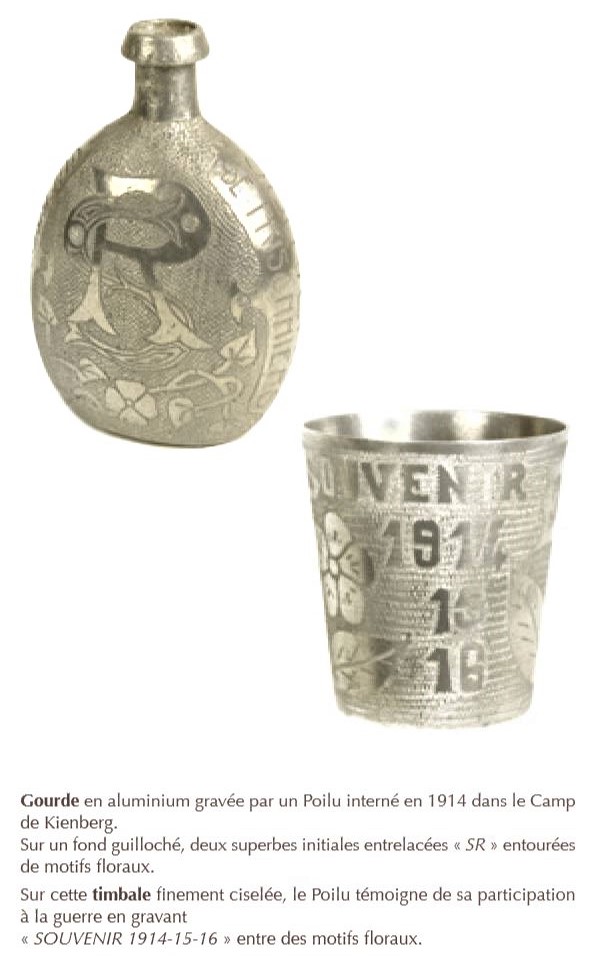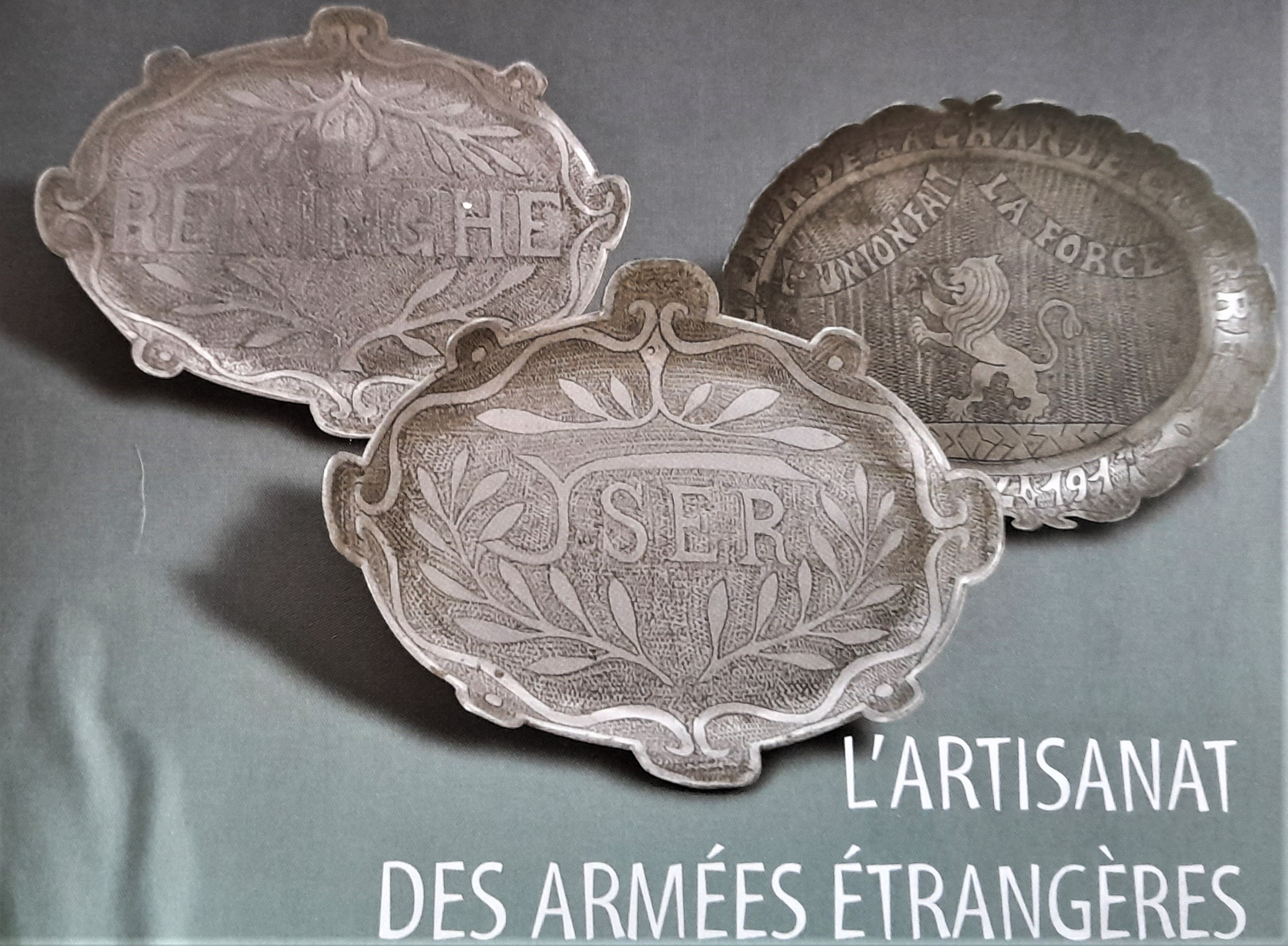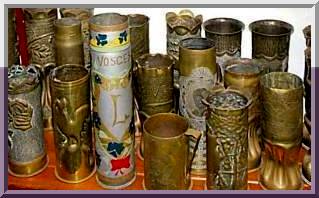DRINKING VESSELS as Souvenirs (memories)
.jpg?783)
WW1 craftsmen used tools, like the sharp punch used for seamstress work, on items of their field kit, creating memory objects reflecting their war experiences, with Names, Dates, Battles etc.
In French Convalescent homes, some inmates would engrave aluminium drinking beakers from the home or obtained from Hospitals or Dressing Stations, to make souvenirs for sale, to help them or other survivors of the war, and as well, fund the war effort generally.
(French drinking vessel names are Timbales/Gobelets/Tasses/Quarts/Gourdes/Bidons)
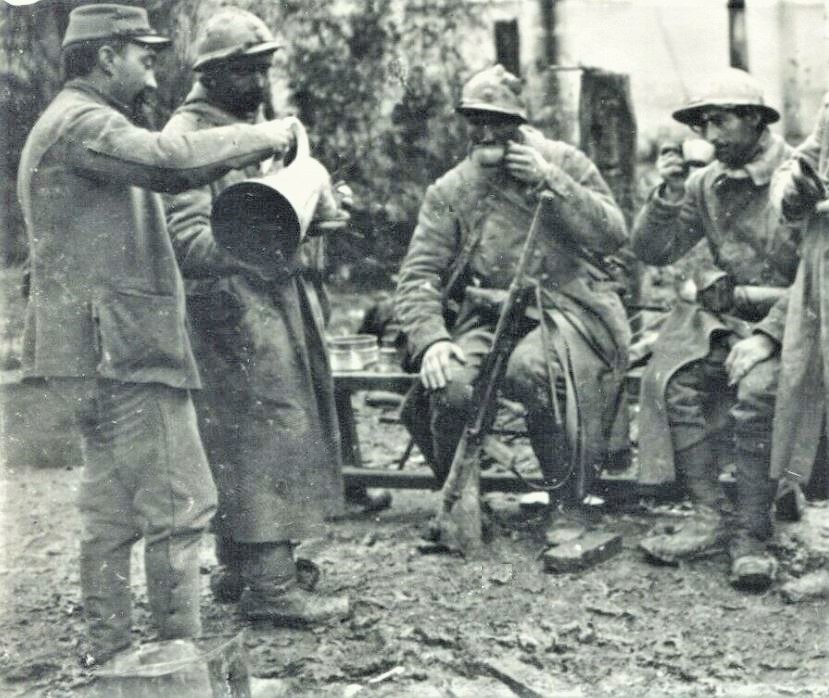
(Below) a soldier engraves timbales.....
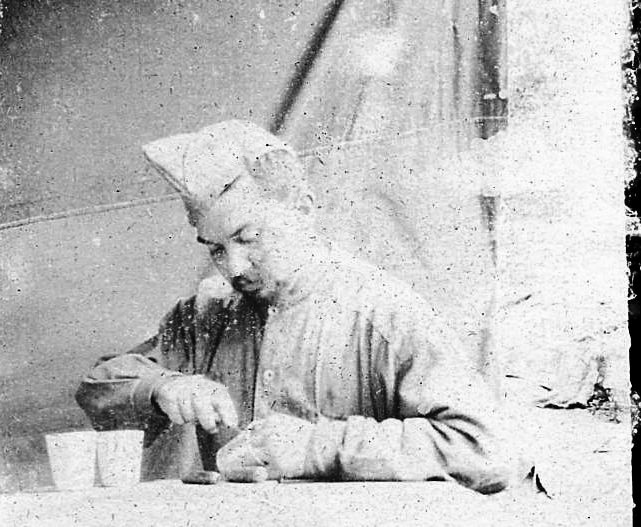
(Below) 1916 photo of soldiers engraving timbales (left) - card game (right)
(Courtesy - photographique De l'armée ( Ministère de la guerre ) )
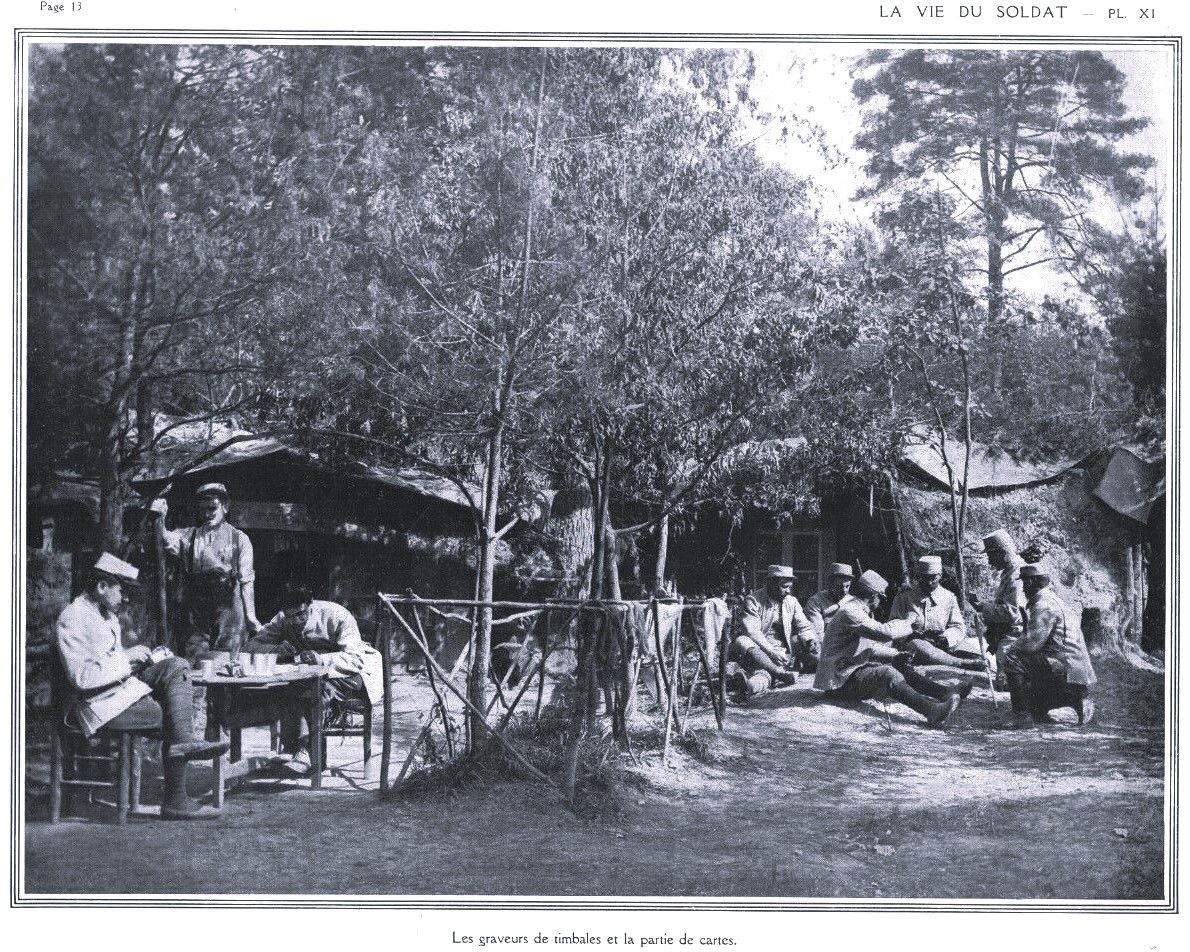
Display Examples
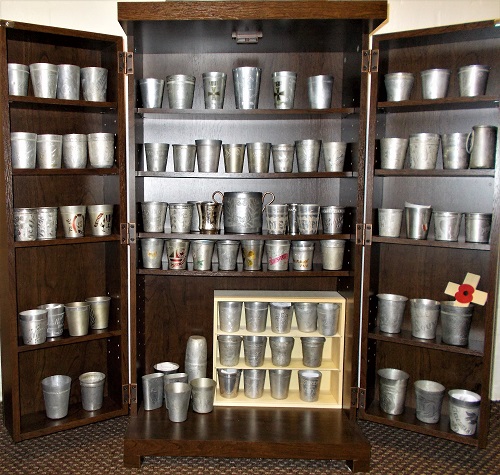
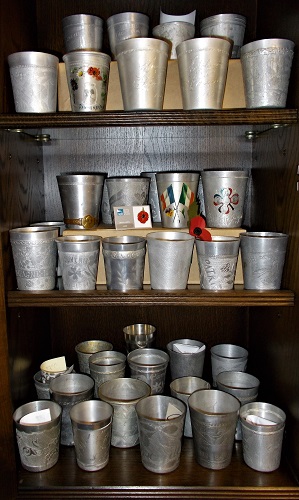
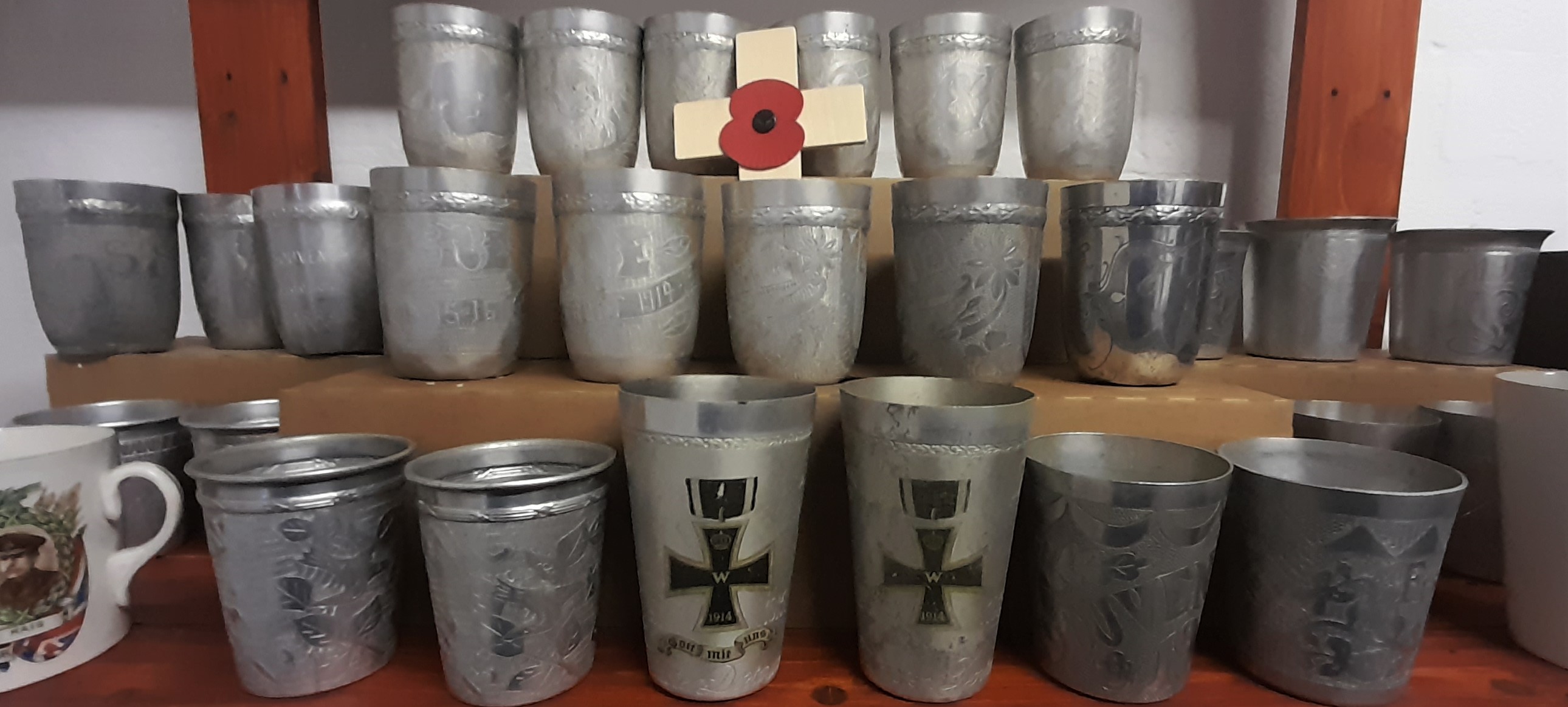
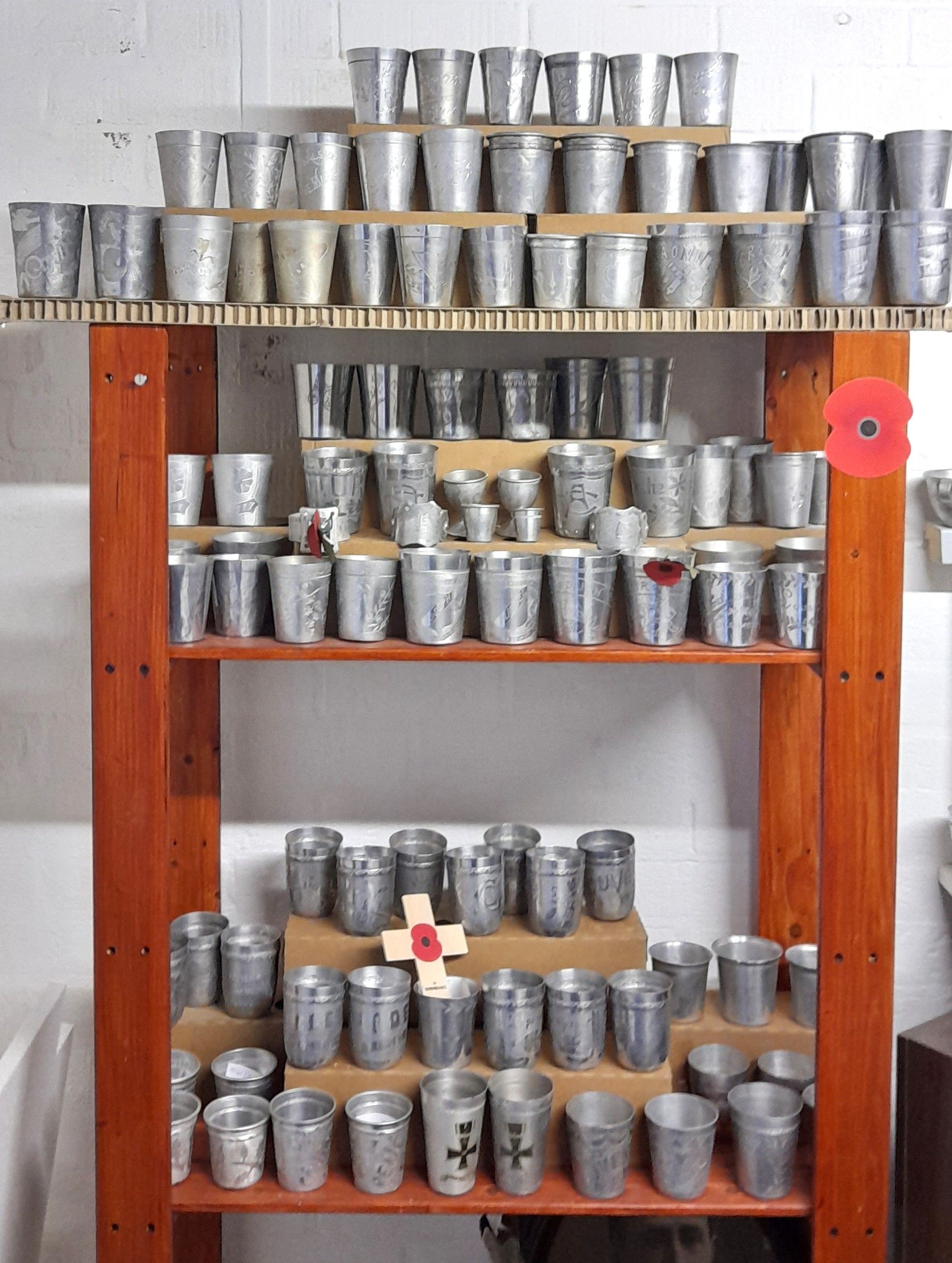
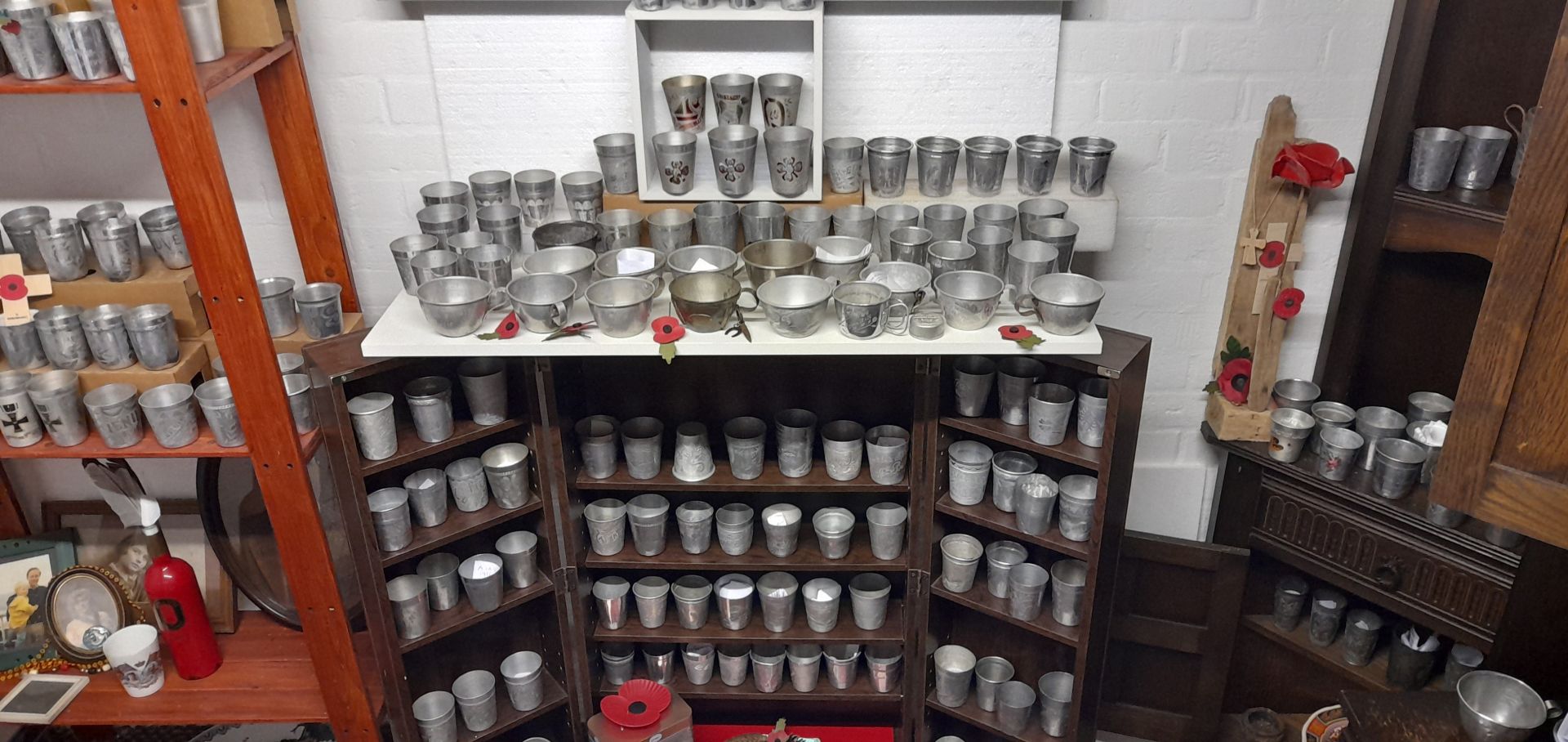
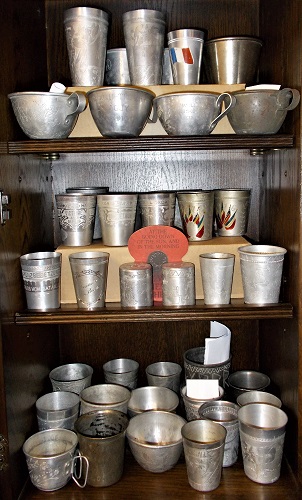
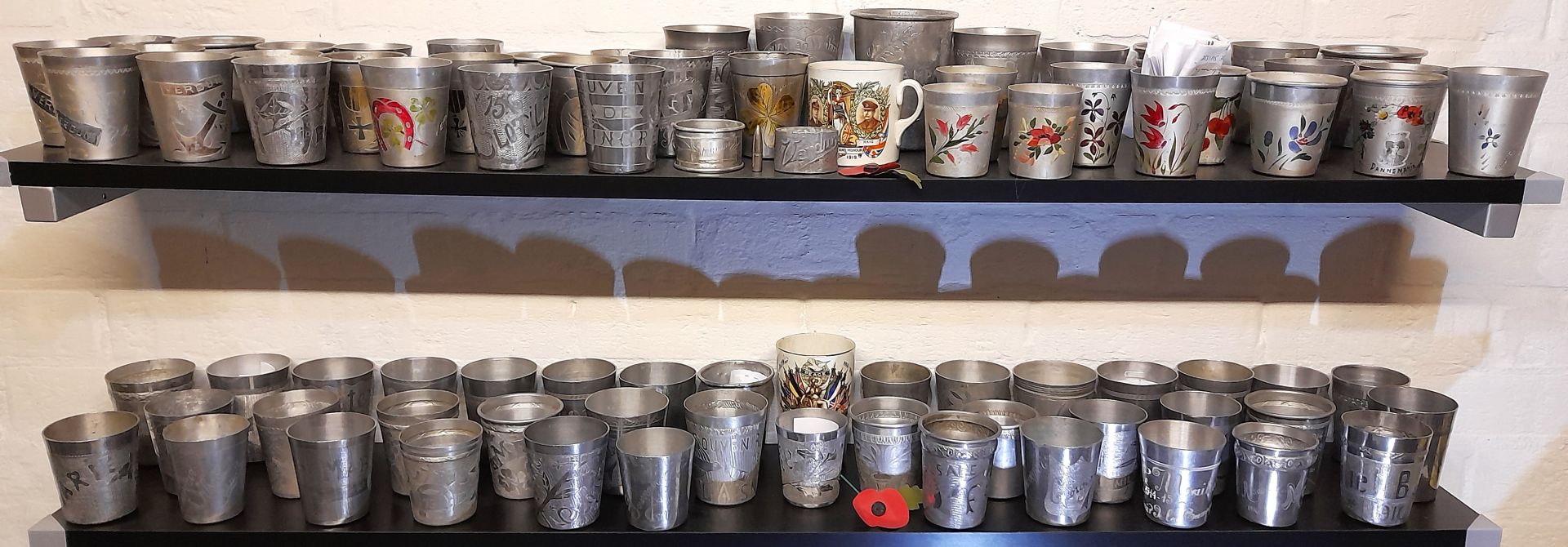
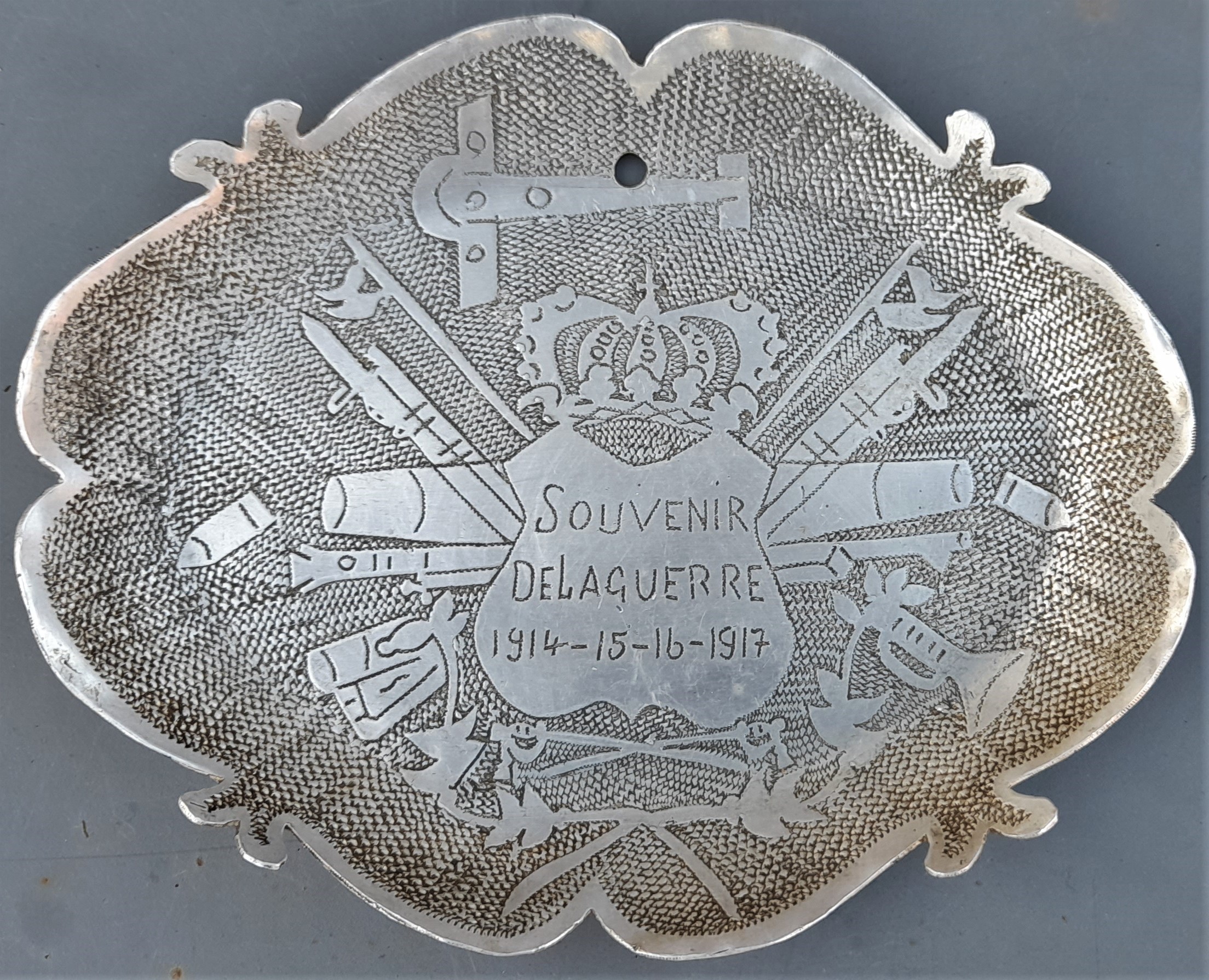
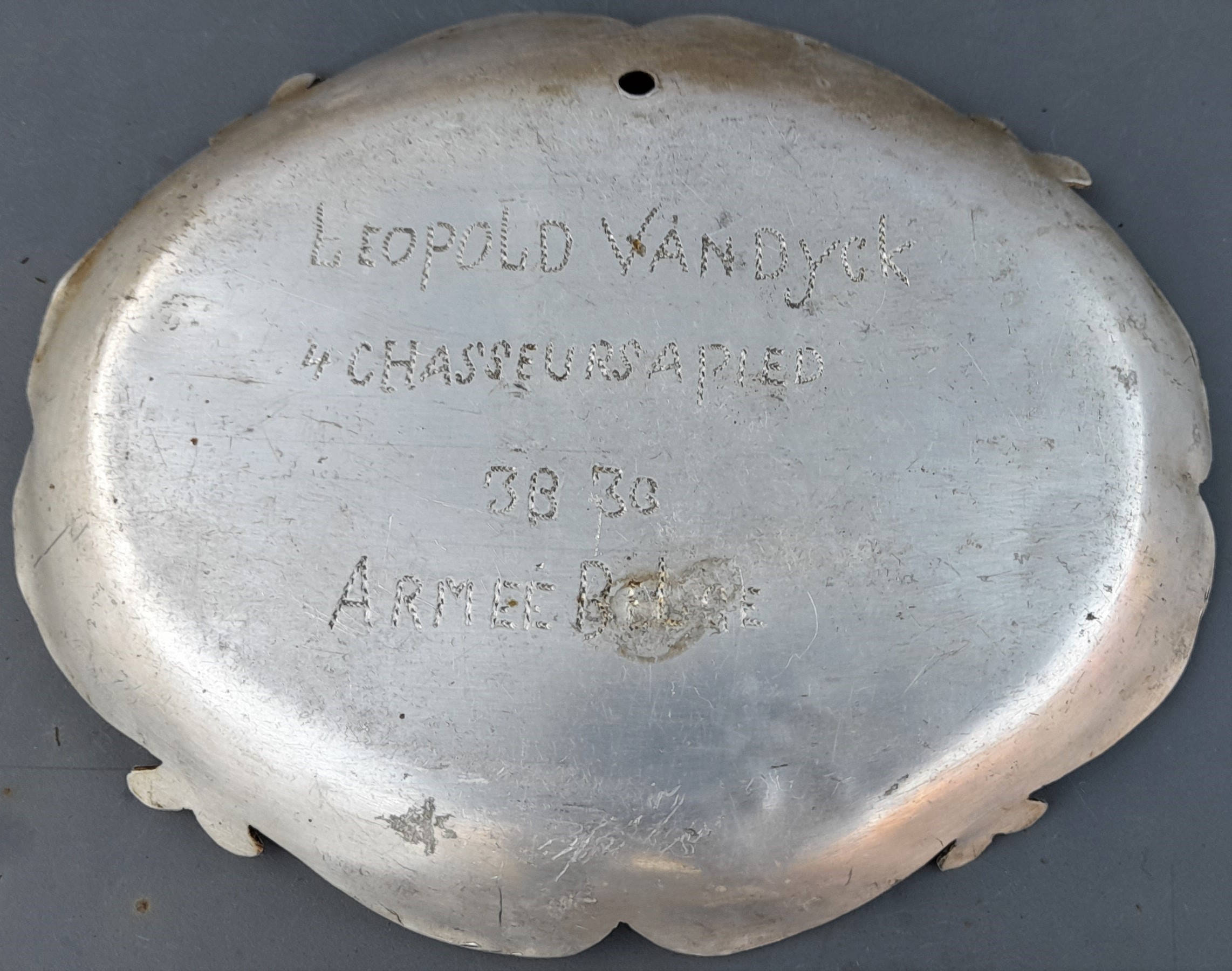
Above, a Belgian army demi-gourd crafted with decorative engravings, marked "Leopold Van Dyck" and his regiment.
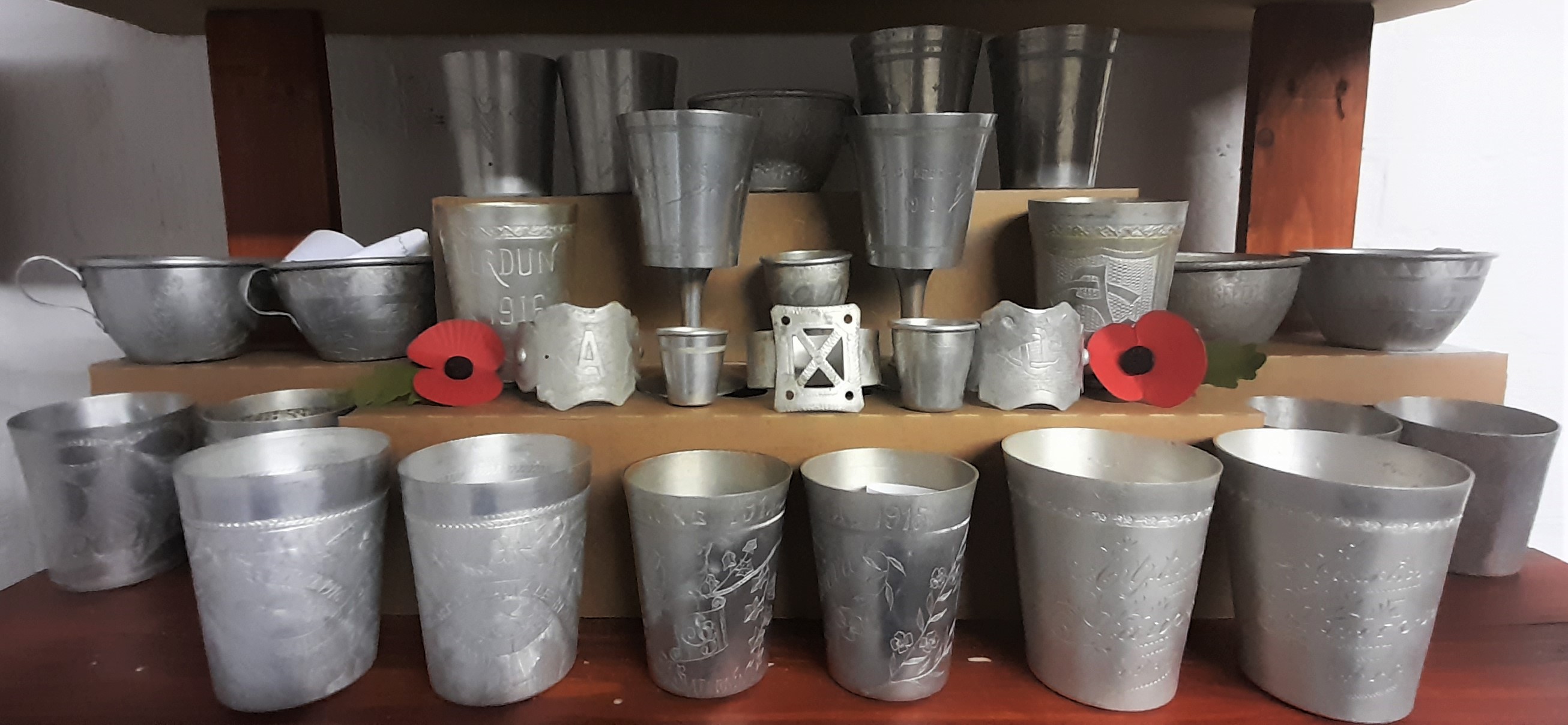
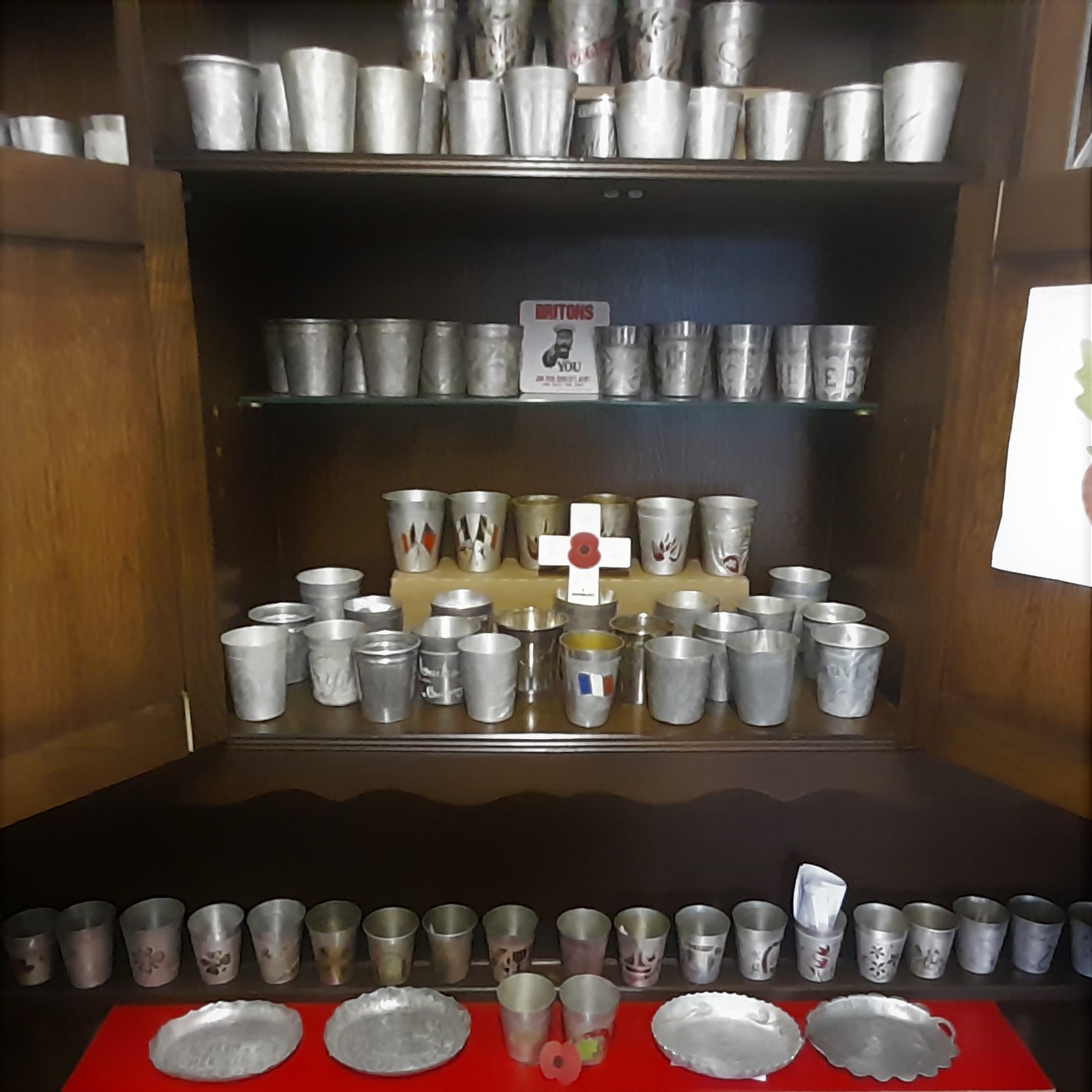


The objects remembered diverse aspects of the Great War, for example, battles, place names, army or service units, names of soldiers, families, sweethearts and some were made for propaganda purposes.
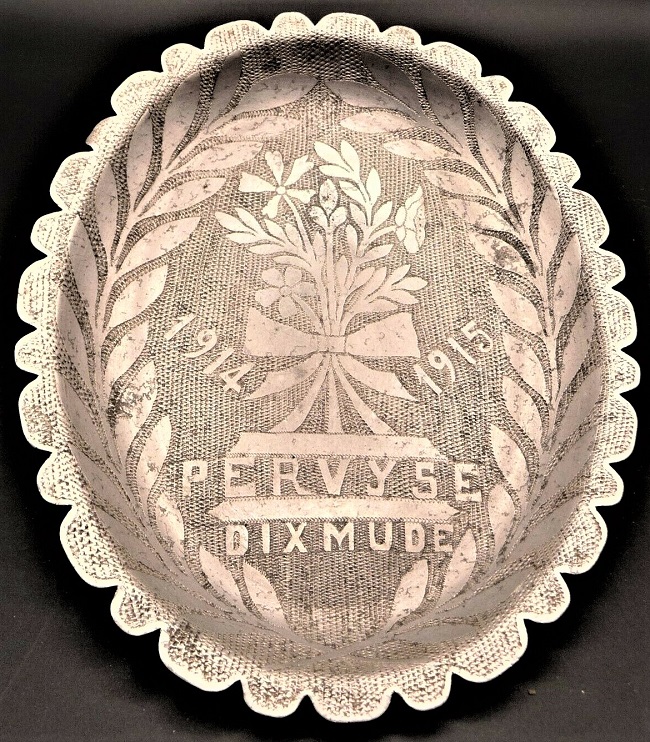
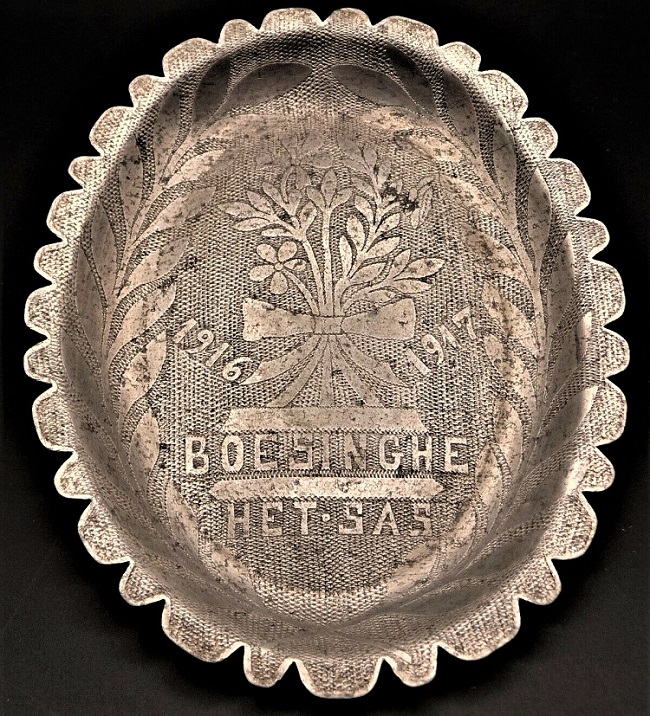
(Above) Engraved and crafted from demi-gourds
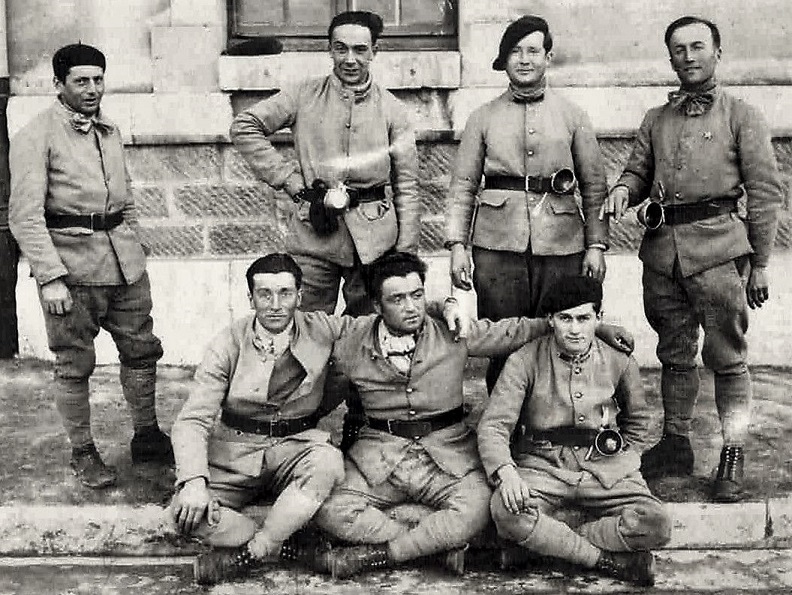
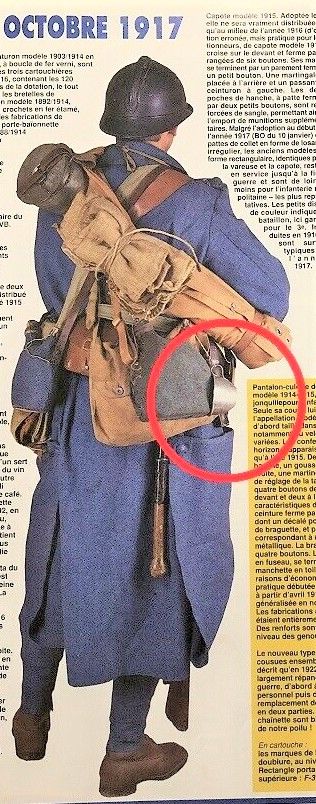 Shown above is a group of soldiers, some with their drinking quarts visible.
Shown above is a group of soldiers, some with their drinking quarts visible.
The quart was known as the Quart Réglementaire Modèle 1852 (Statutory Quarter Cup Model 1852)
....sometimes used for drinking the issued pinard or tafia spirit mix.....
The quart was hung from one or both strings, or the sling, on the drinking canteen,
and usually carried on the waist belt (see image left)
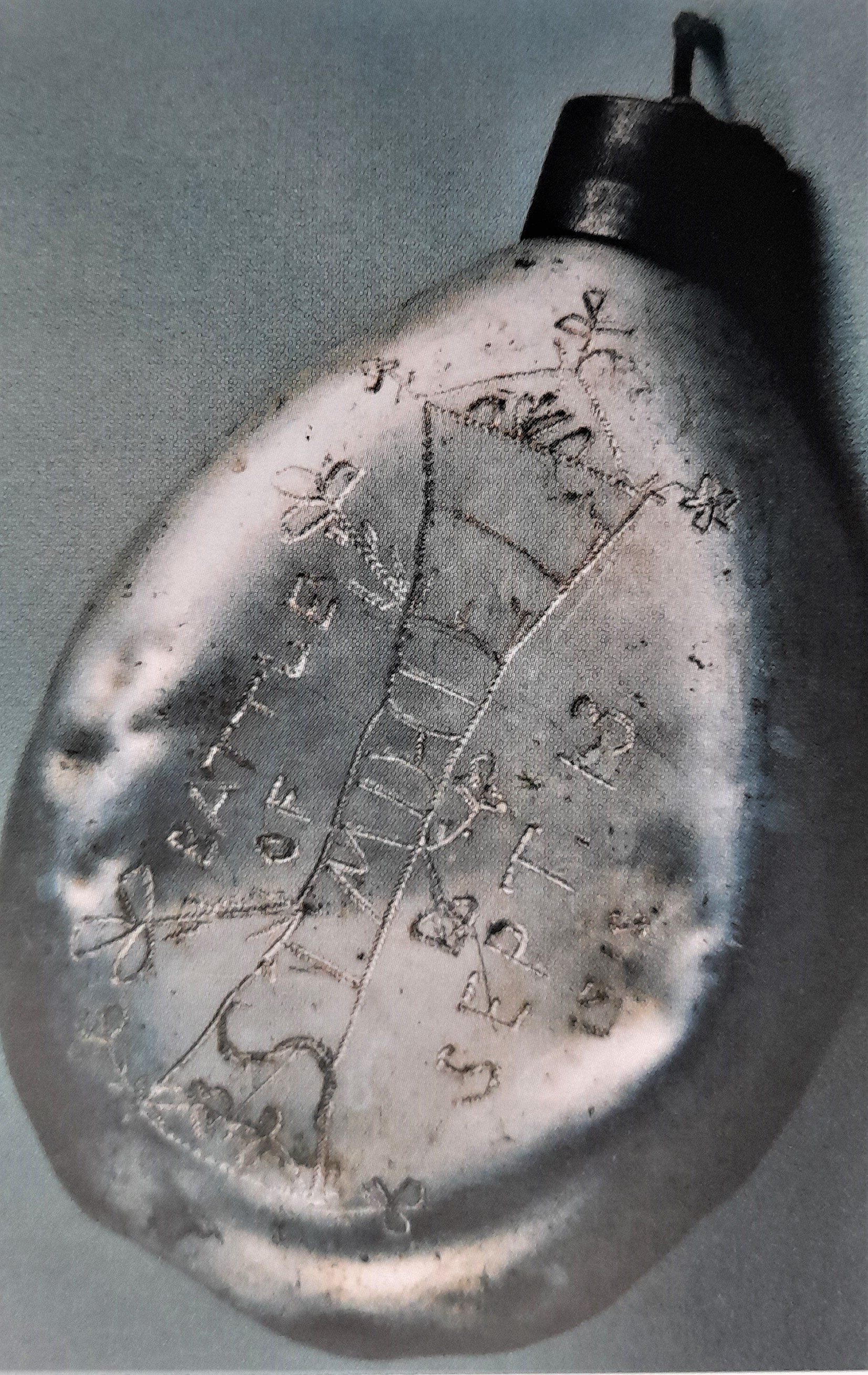
This German canteen has engraved flowers and "Battle of St Mihel Sept. 13, 1918"
- obverse has an American flag and "J. H. Risdale, Battery C 42 Arty C.A.C."
Whilst used in actual battlefield areas, basic drinking vessels also provided sustenance for physically injured and mentally exhausted soldiers - for example, soldiers drank "Bene 'n' Hot" (Benedictine liqueur with hot water) given in Casualty Clearing Stations along the many ports in Normandy or Auxiliary Hospitals based in and around. Nurses would mix the medicinal drink with hot water to ease pain for some, or to raise the spirits amongst those on the wards.
(One place in particular that gave itself up to become a hospital was the home of Benedictine D.O.M. - Palais Benedictine, Fecamp. (Hospital Auxillaire No: 34).
.JPG?343)
Drinking bottle with caps - initials & dated clover leaf
.jpg?343)
(Below) Some examples of Quarts (front and back)
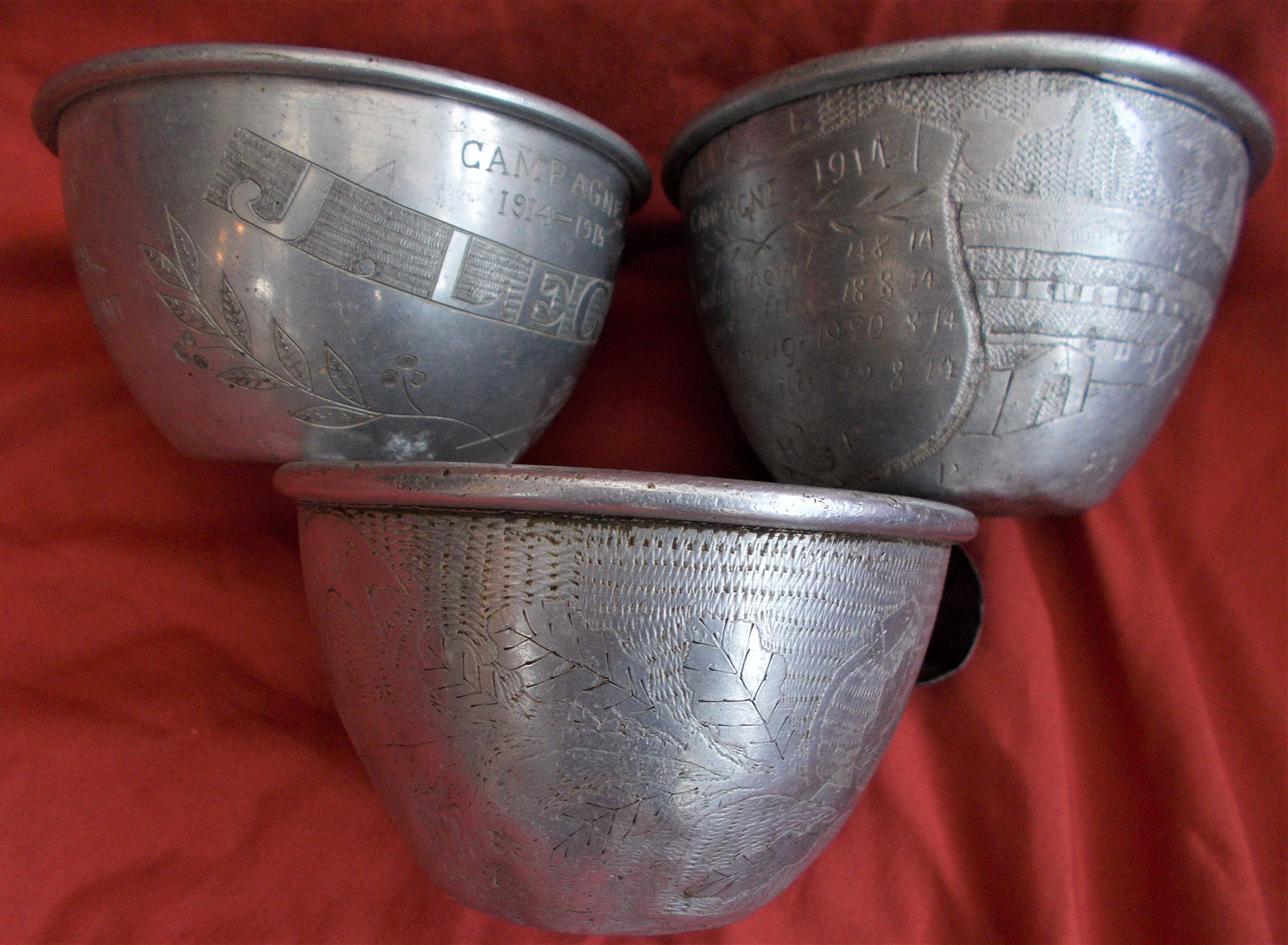
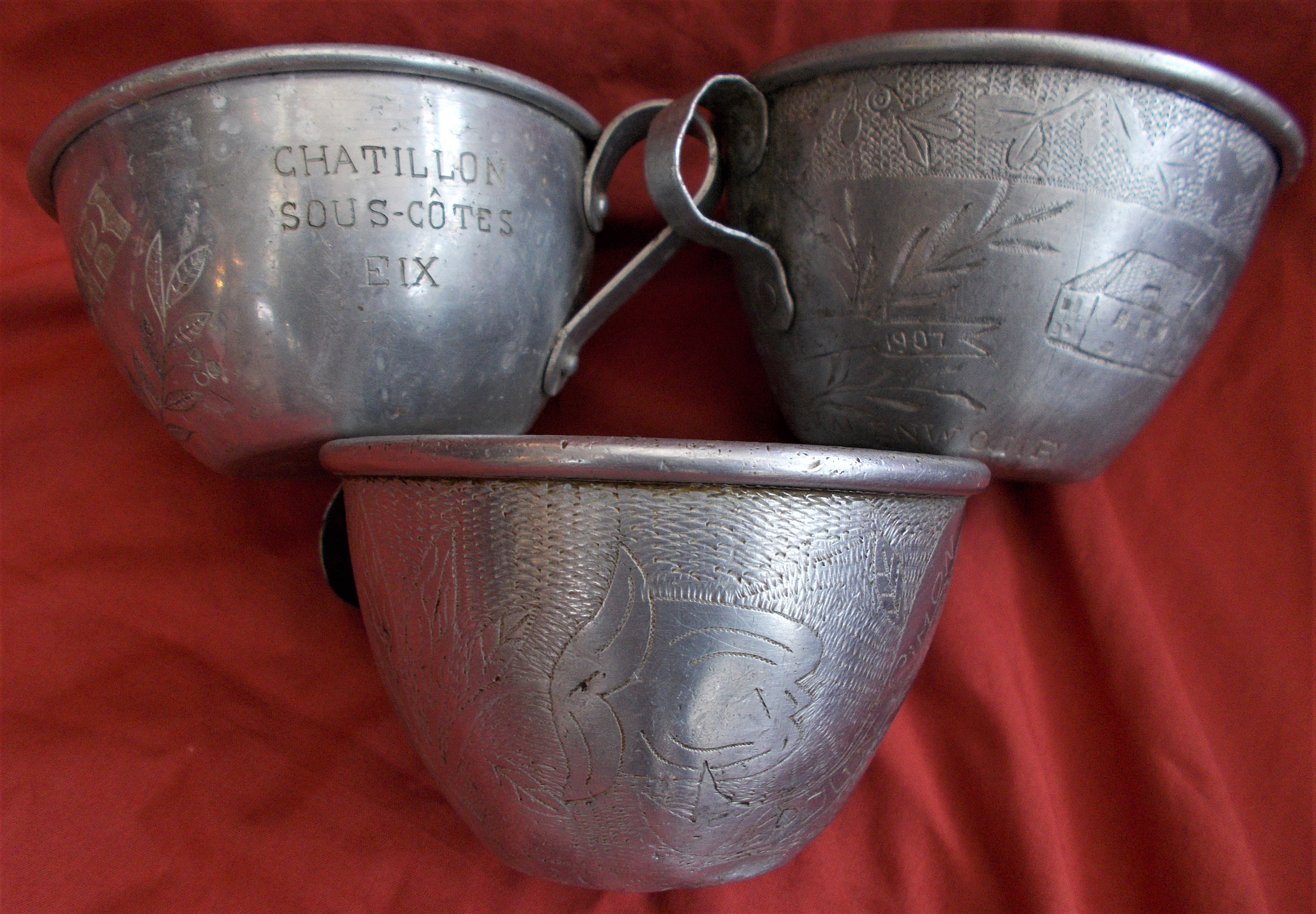
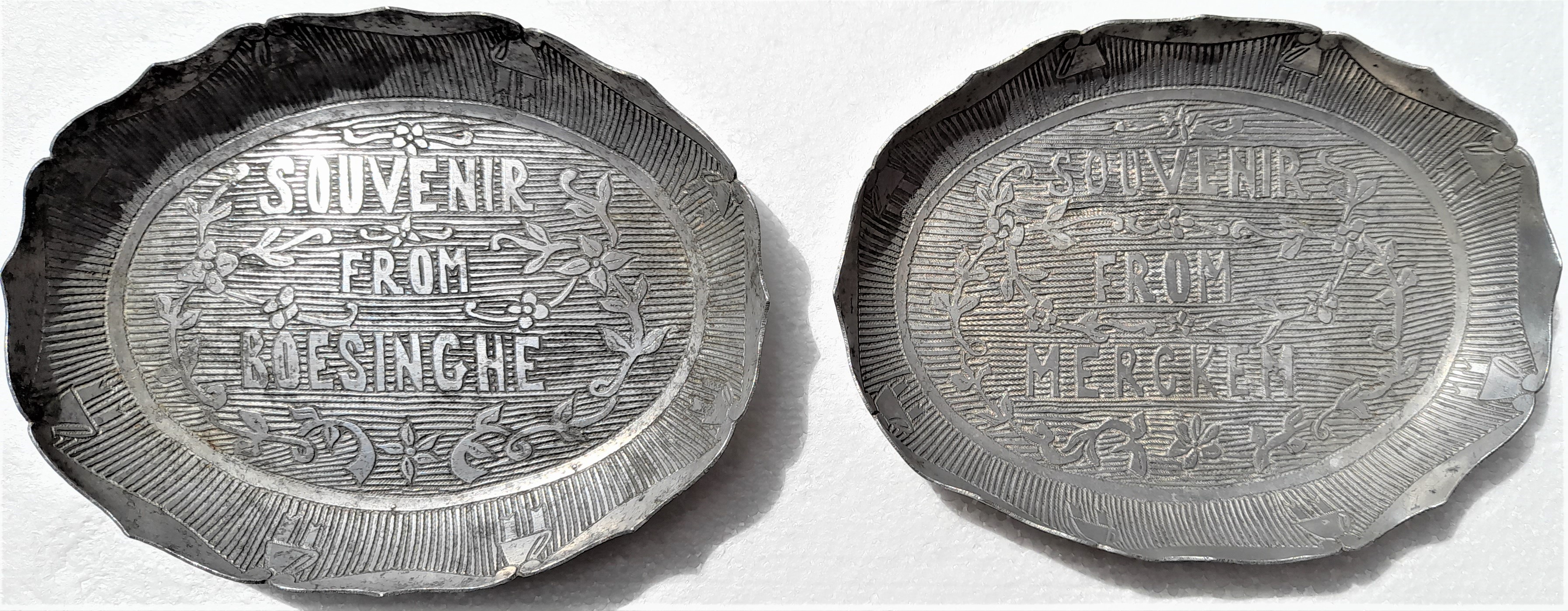
(above & below) Pair of worked Demi Gourdes, left, engraved "SOUVENIR FROM BOESINGHE from ACHILLE ALLO 1918", and right, engraved "SOUVENIR FROM MERCKEM to MISS ELIZABETH BENSON 1918"
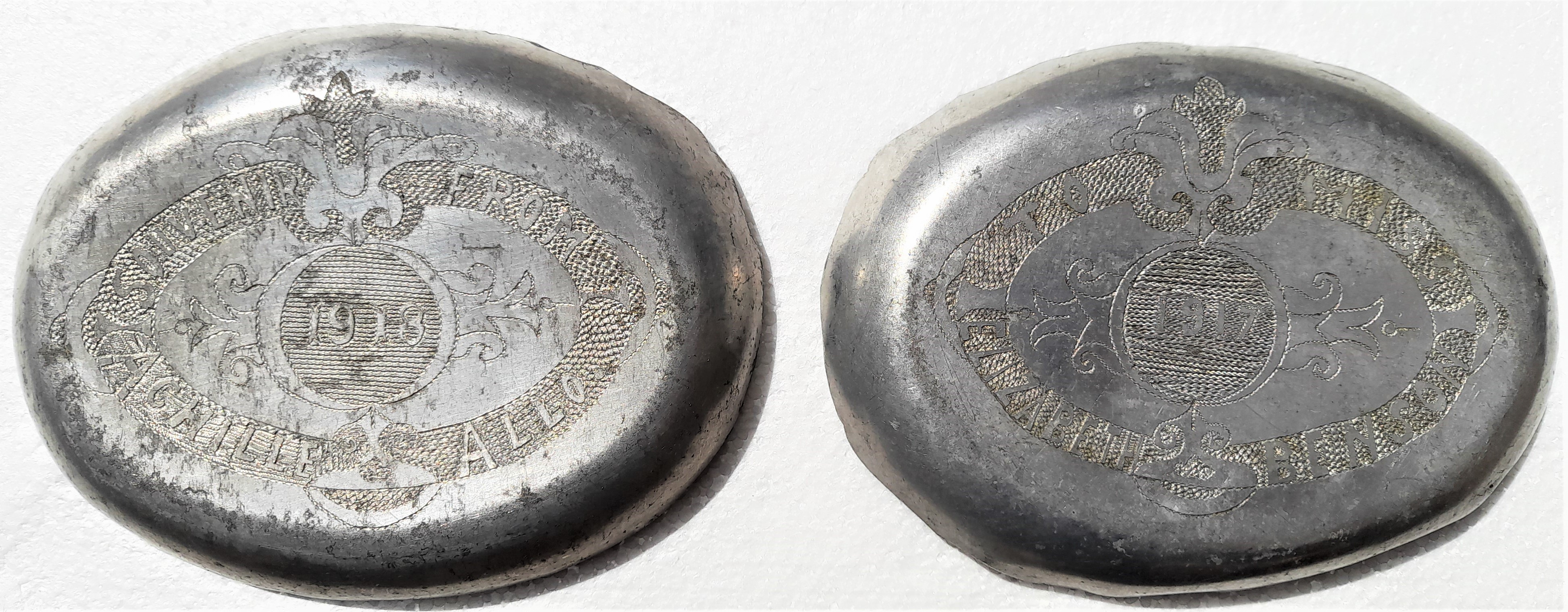
They can generally be placed into various groups, as shown below
- the date 1916 often appears, as many believed the War would be over by then !
Crudely hole-punched items, made by convalescents in a French Nursing Home, for charity sale to provide income for war disabled.
.JPG?174)
Engraved / decorated items crafted in workshops, rest areas etc. behind field combat lines.
.JPG?445)
.JPG?445)
Vessels bearing the initials or name of the owner, family members, loved ones, or a sweetheart.
.JPG?348)
Timbales specifically commissioned by those wanting a memory relic of the war - bearing their name or dedicated to a Family member, sometimes with a date and/or placename, battle name or conflict area - maybe crafted by a third party for extra income to supplement their military pay, for example.
Below: showing the Initials of Family members (1916 dated on each one)
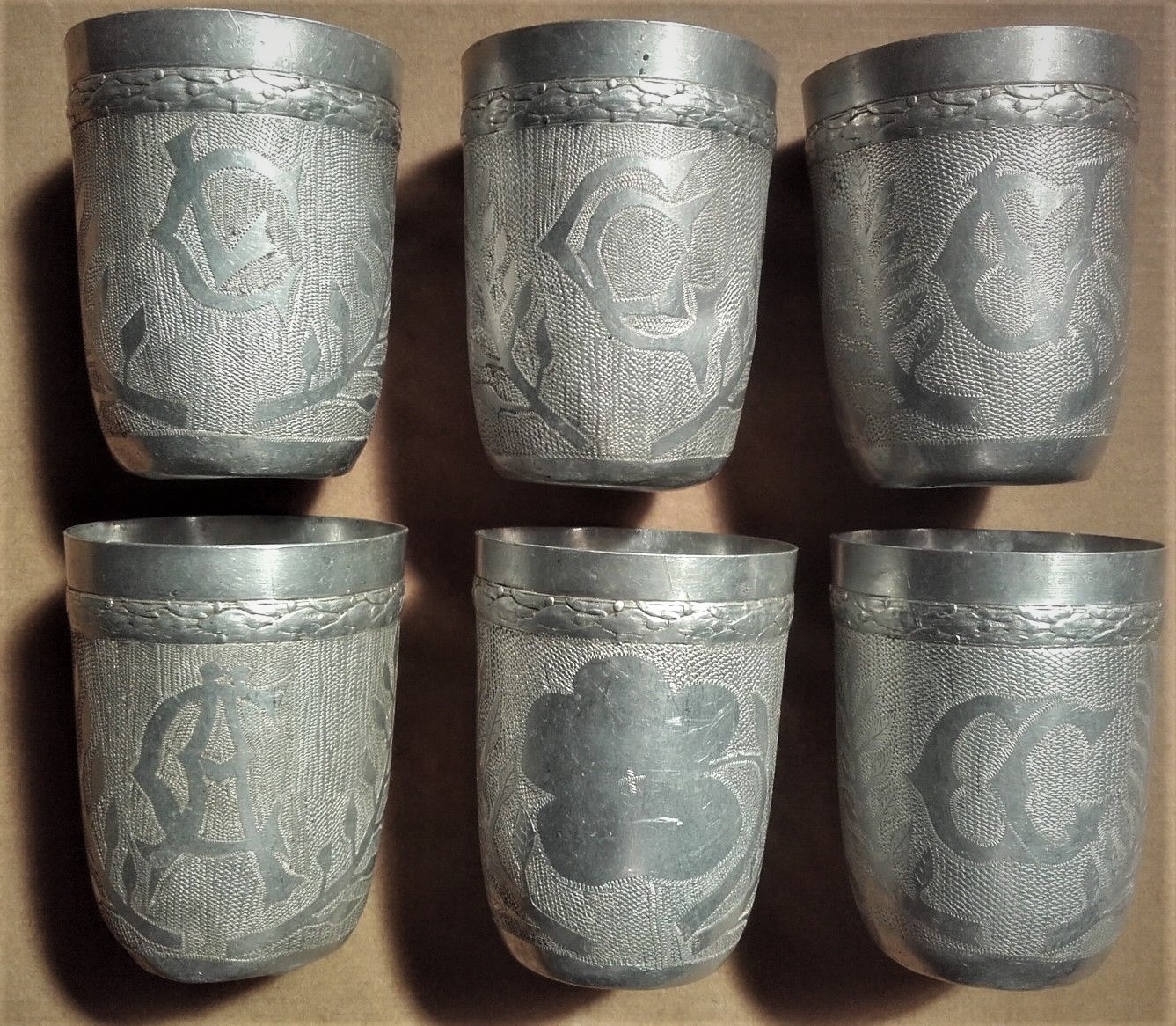
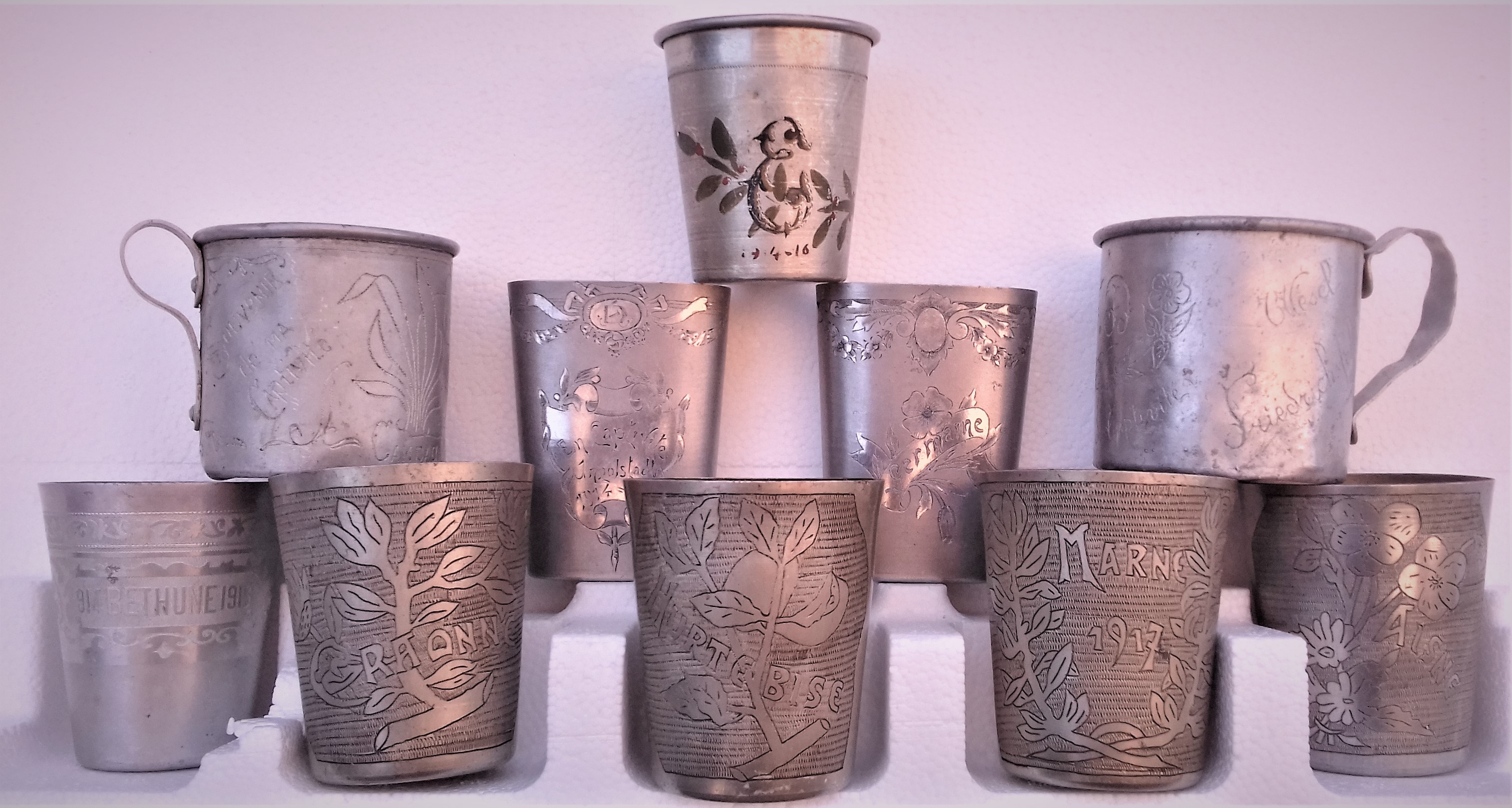
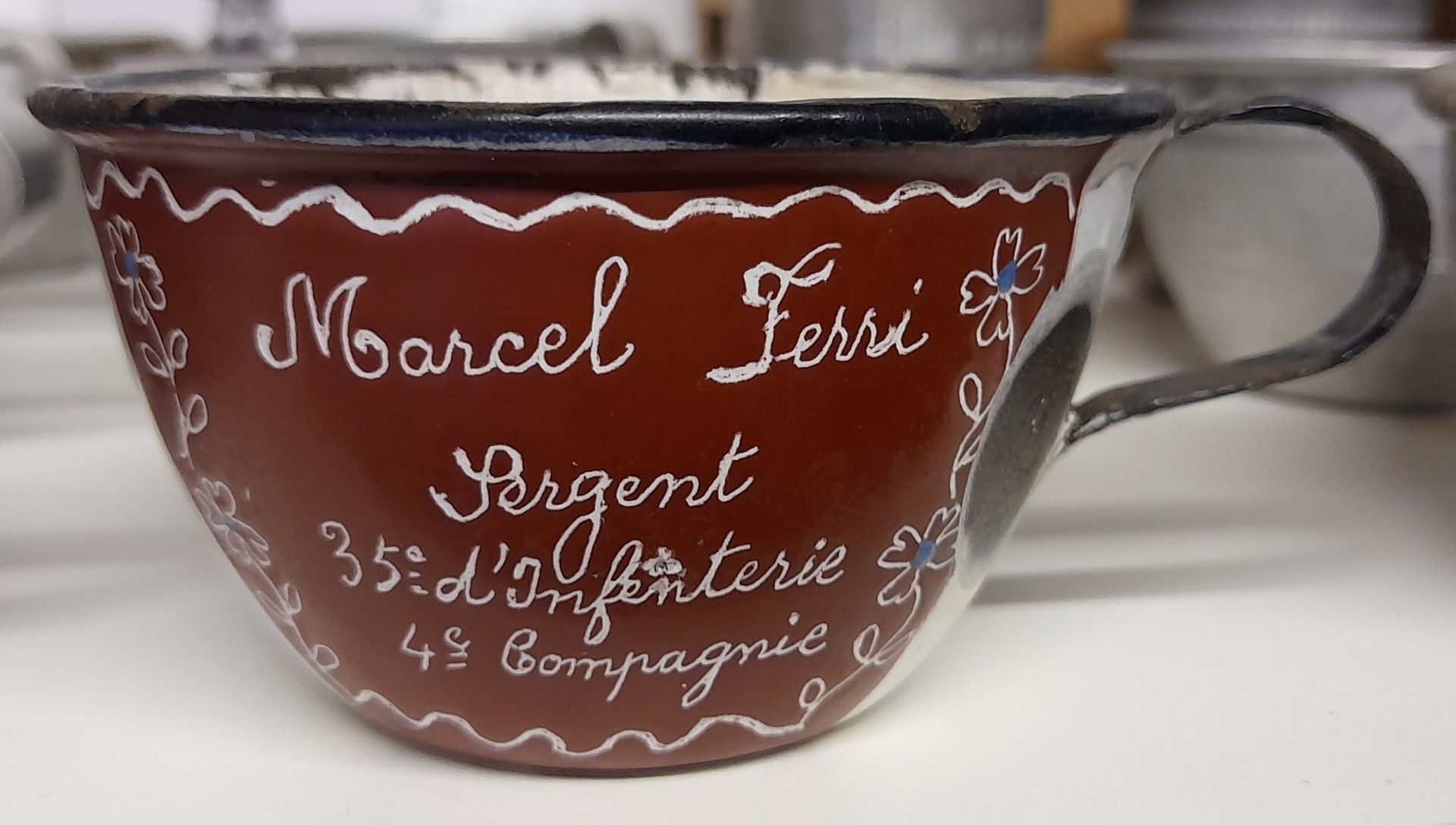
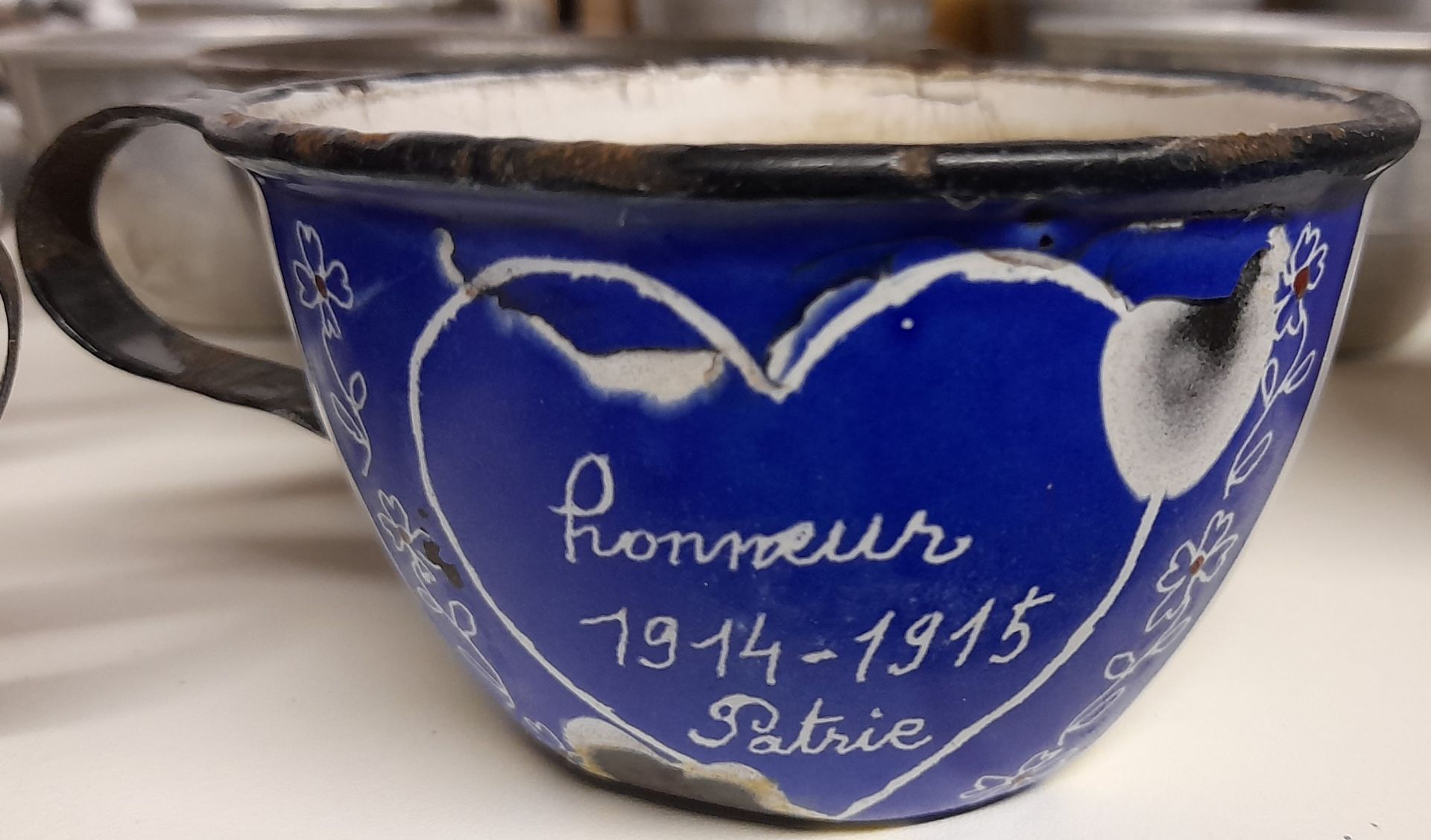
(above) Enamelled quart for Sergeant Marcel Ferri
Nursing Medics' invalid feeding cups used by the French Red Cross,
originally called the Société française de secours aux blessés militaires (SSBM),
in hospitals, field dressing stations, convalescent homes. Objects were crafted as a result of programmes aimed at rehabilitating the wounded through occupational therapy. Engraving small drinking vessels could be done by bedridden and convalescing men, often in dedicated workshops.
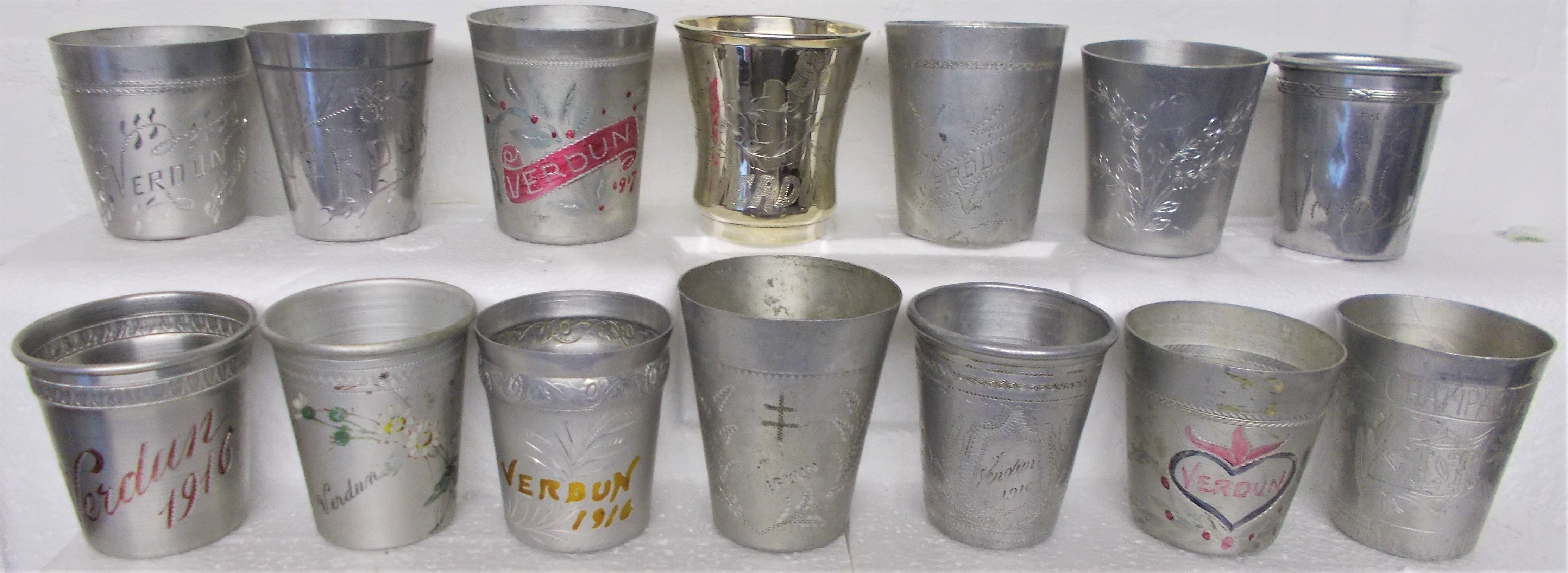
(above) Timbales, marked "VERDUN"
The Battle of Verdun, was fought from 21 February to 18 December 1916 on the Western Front. The battle was the longest of the First World War and took place on the hills north of Verdun-sur-Meuse in north-eastern France.
Objects worked upon by American Service Nurses - enlisted to France in the Army Services (1918/19) in Trenches and Hospitals, who engraved items in "Idle Time" to reference their military experience. (AEF American Expeditionary Forces for example .. or the AFS American Ambulance Field Service)
Items realized industrially for propaganda or patriotic purposes showing coloured flags, sometimes emphasising "frontier occupations" between Countries....
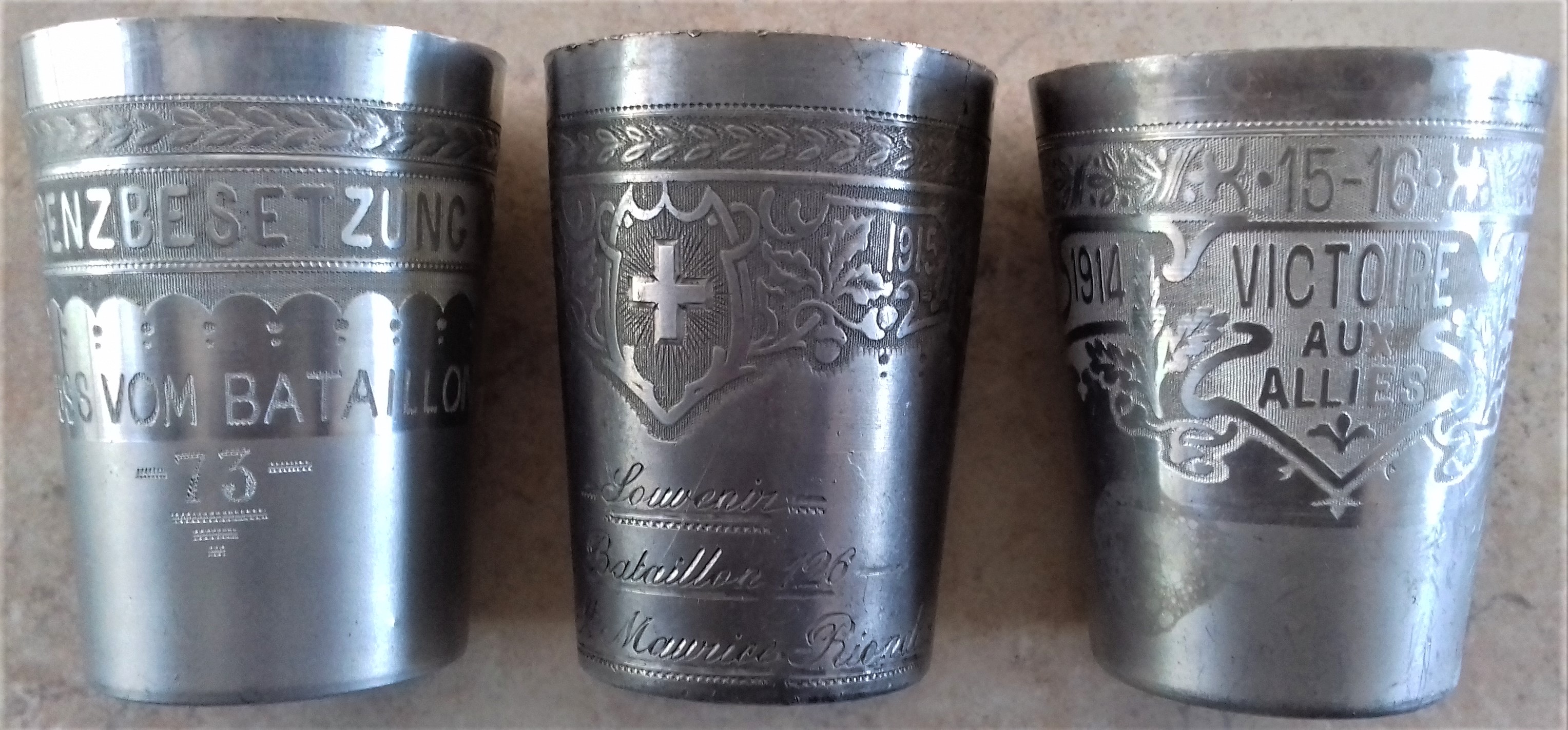
(above & below from left to right) - left marked "GRENZBESETZUNG - gruss vom bataillon 73" (Border Occupation - Greetings by the 73rd Battalion) / middle marked "OCCUPATION DES FRONTIERES - souvenir du bataillon 126, Dailly - St Maurice - Riondaz" (Border Occupation - 126th Battalion) / right marked "VICTOIRE AUX ALLIES - L'UNION FAIT LA FORCE"
(Victory to the Allies - Unity is Strength)

.JPG?325)
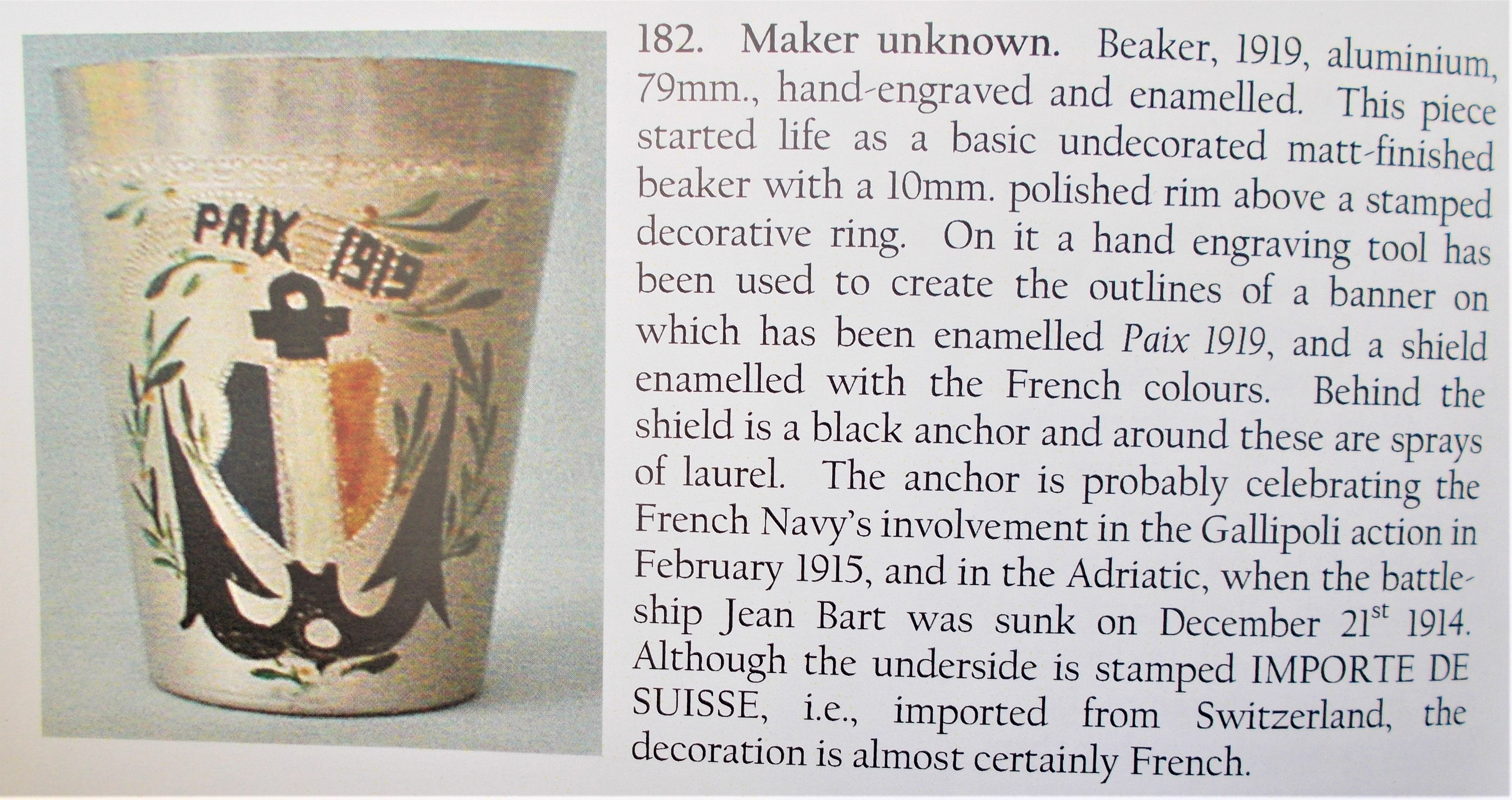
(Extract from "Memories of Conflict" by Anthony King)
"VICTOIRE AUX ALLIES 1914 - 1916 AMIENS"
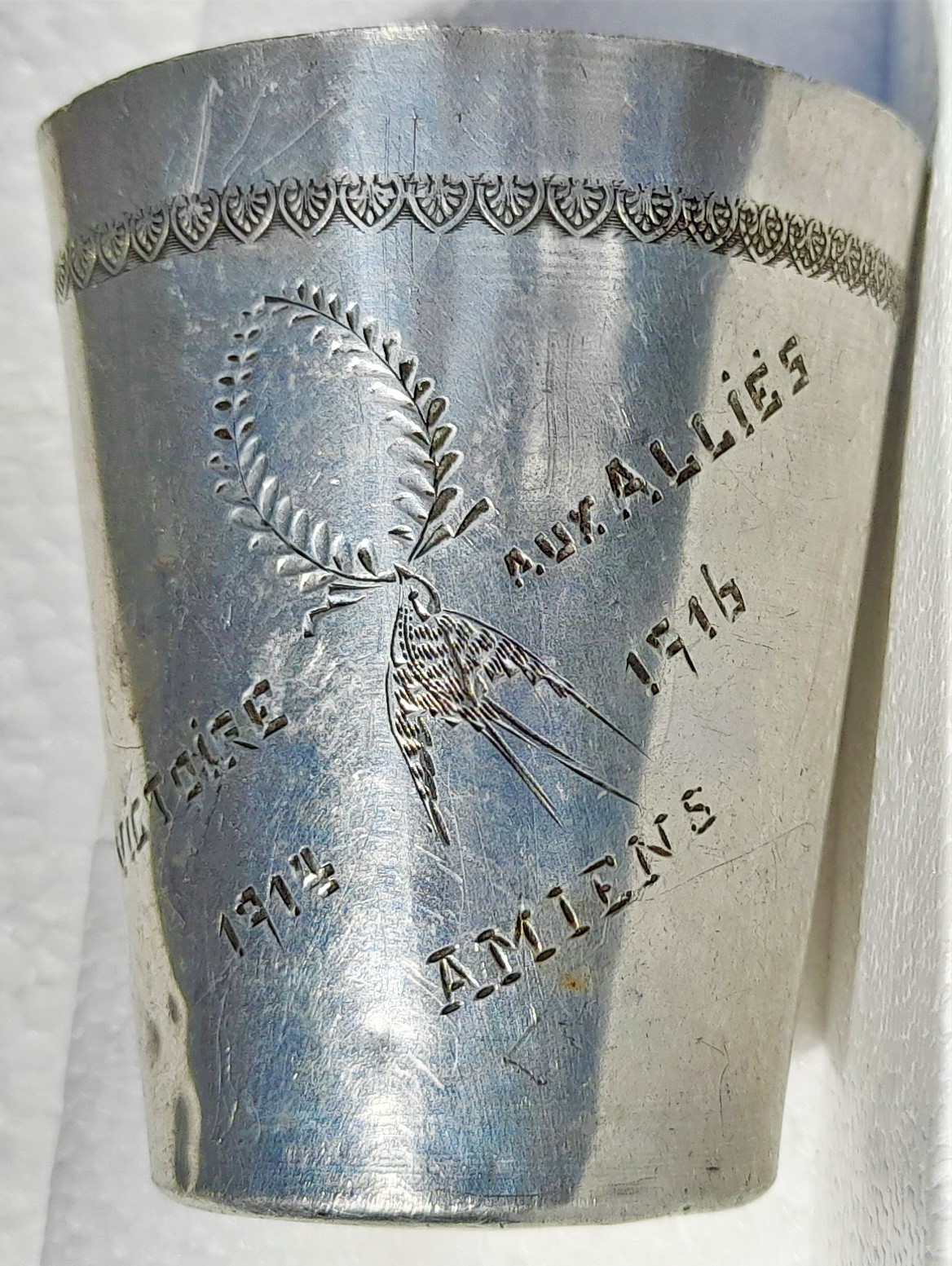
(Below) Examples of "tourist souvenir" work - engraved following a template pattern

(Below) Two silver hallmarked pieces
.JPG?219)
Drinking vessels bearing the legend: "Souvenir of the Orient" often decorated with a star and crescent, emblems of the Ottoman Empire, by those who participated in the campaign of the Orient 1915 - 1916.
In October 1915 the first British troops landed at the Northern Greek port of Salonika (now Thessaloniki) from Gallipoli and France. The British Salonika Force (BSF) fought alongside French, Greek, Italian, Russian and Serbian contingents. British and French colonial troops from the Indian subcontinent, Africa, and Indochina also took part. The Armée d'Orient was a field army of the French Army who fought on the Macedonian front. It was formed in September 1915 during the conquest of Serbia by German-Austrian-Bulgarian forces, and shipped to the Greek port of Salonika where its first units arrived on 5 October. Despite several offensives, the front stabilized on the Greek-Serbian border until September 1918, when the Bulgarian army disintegrated after defeat in the Battle of Dobro Pole.
On 11 August 1916, all allied troops on the Salonika Front came under a united command, and named Allied Army of the Orient. The Supreme commander became the French commander of the Armée d'Orient Maurice Sarrail.. He was replaced as commander of the Armée d'Orient by Victor Cordonnier, and the army itself was renamed the Armée française d'Orient (AFO).
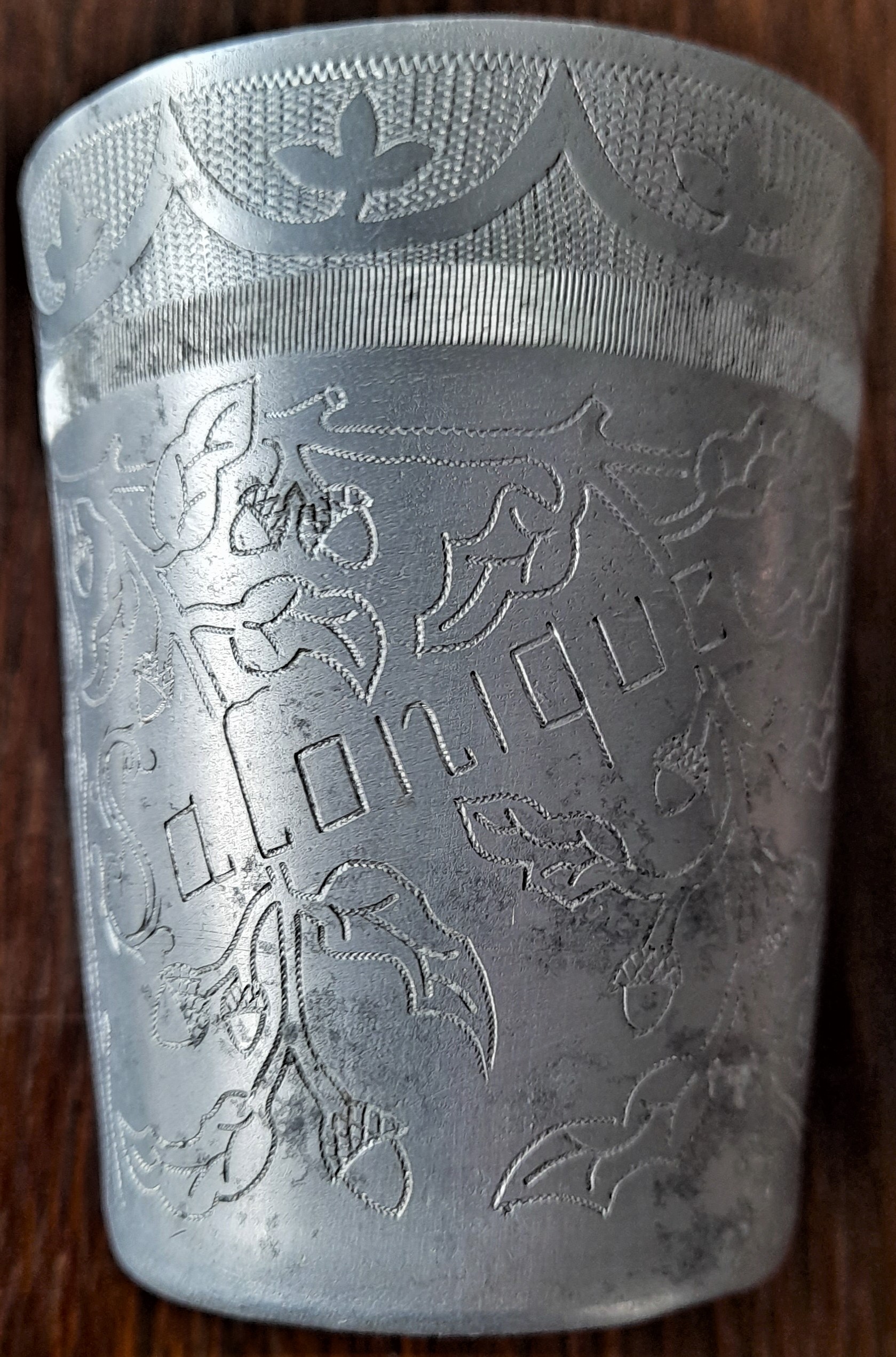
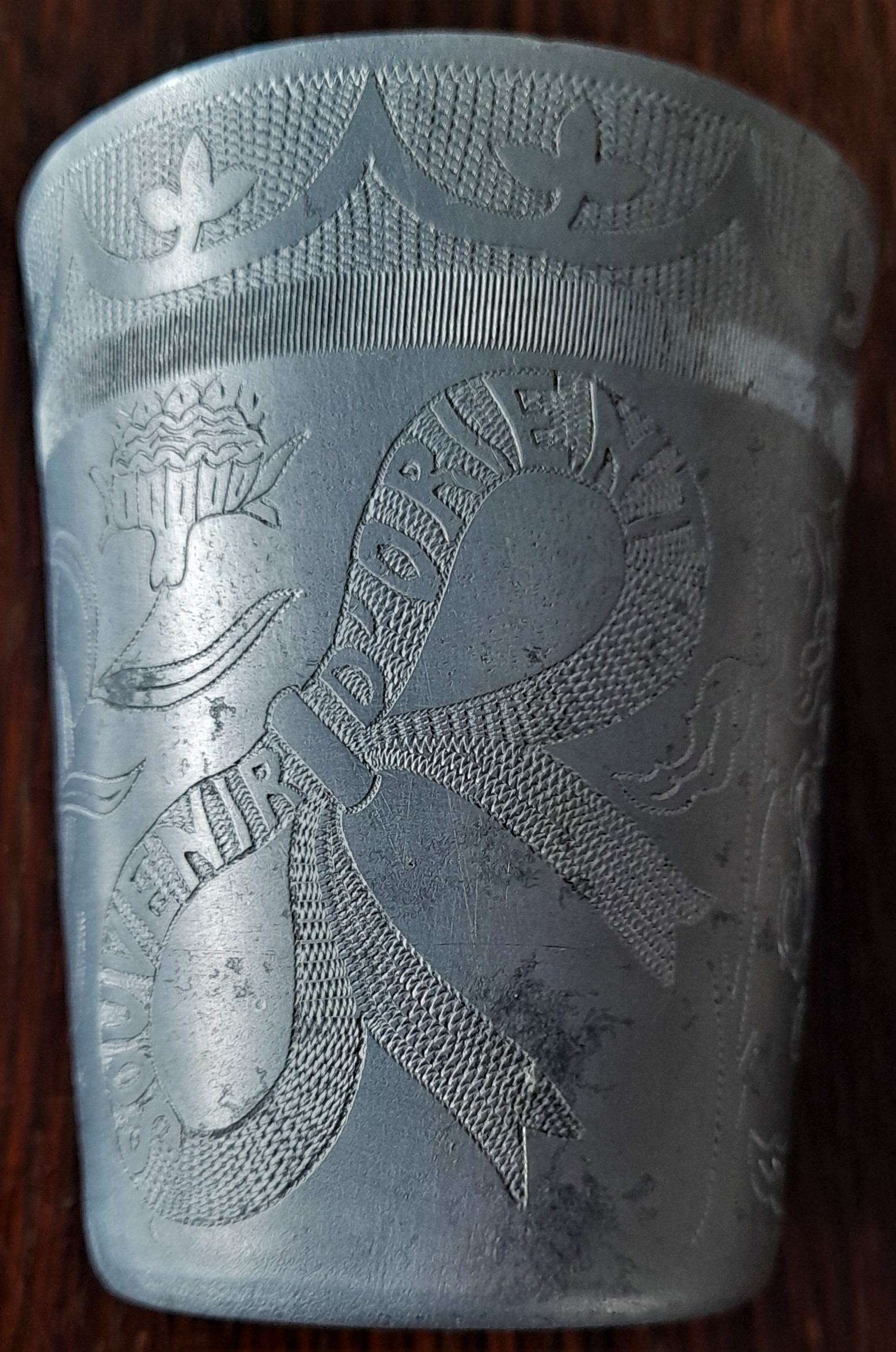
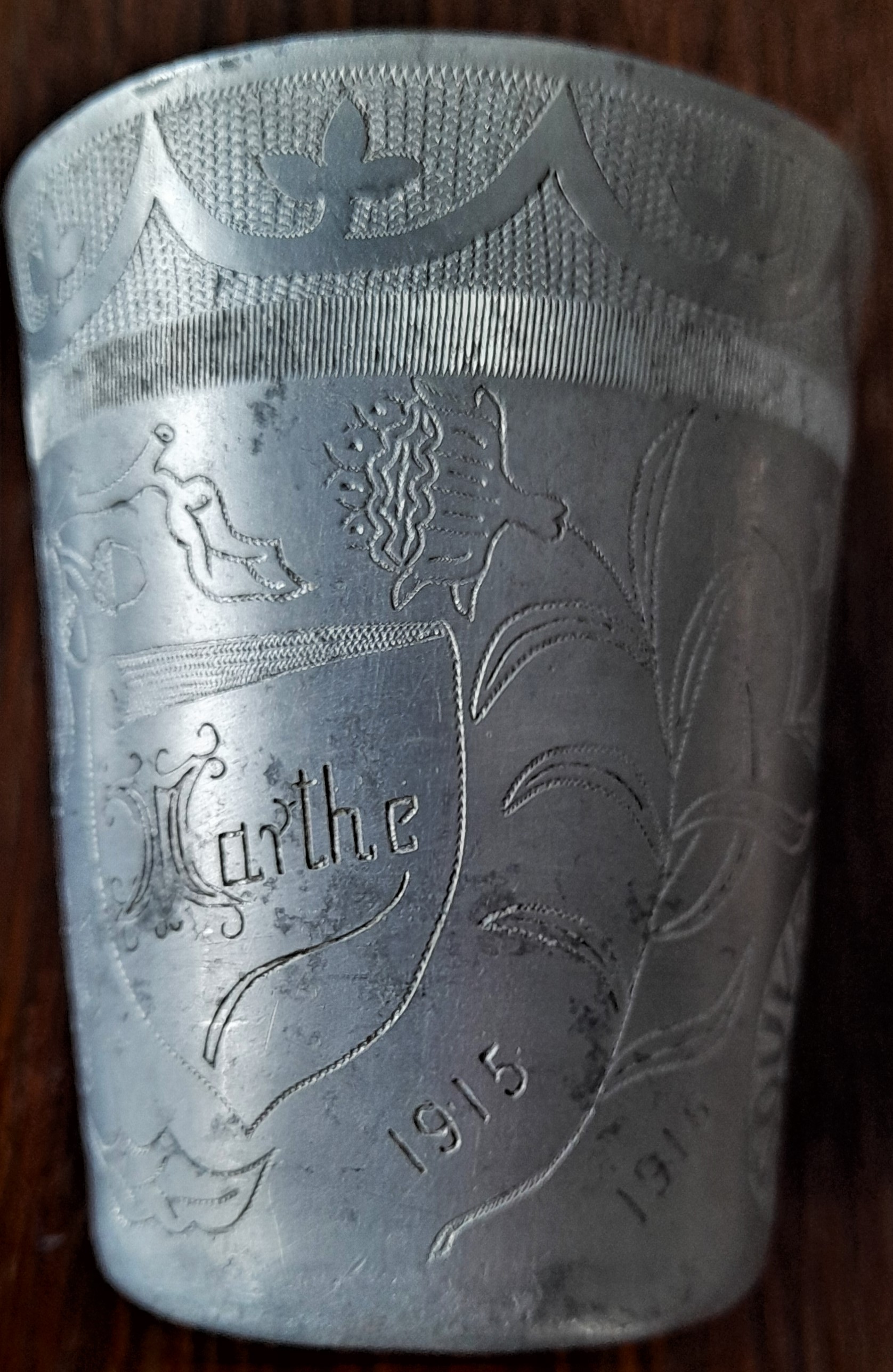
.JPG?343)
.jpg?912)
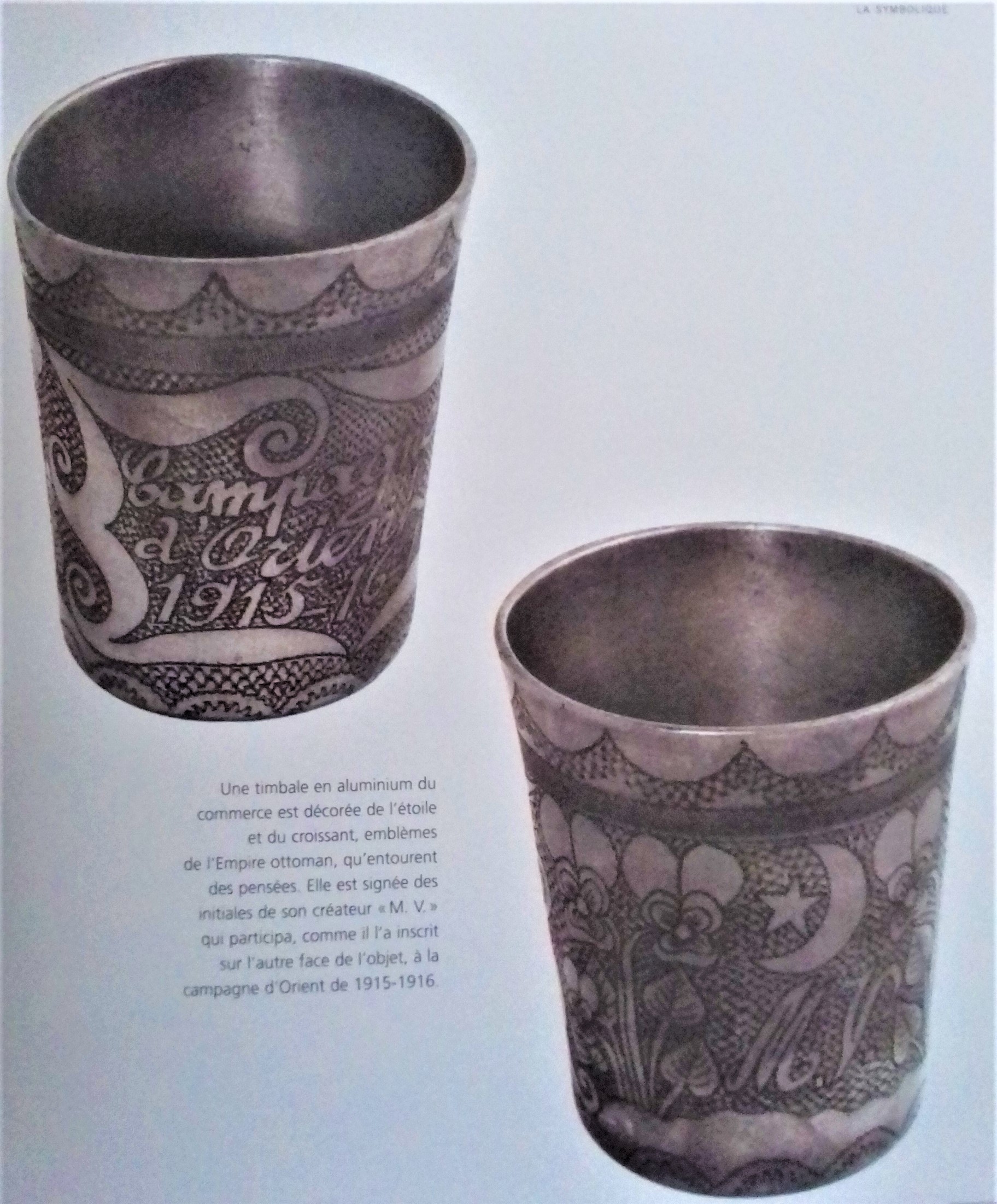
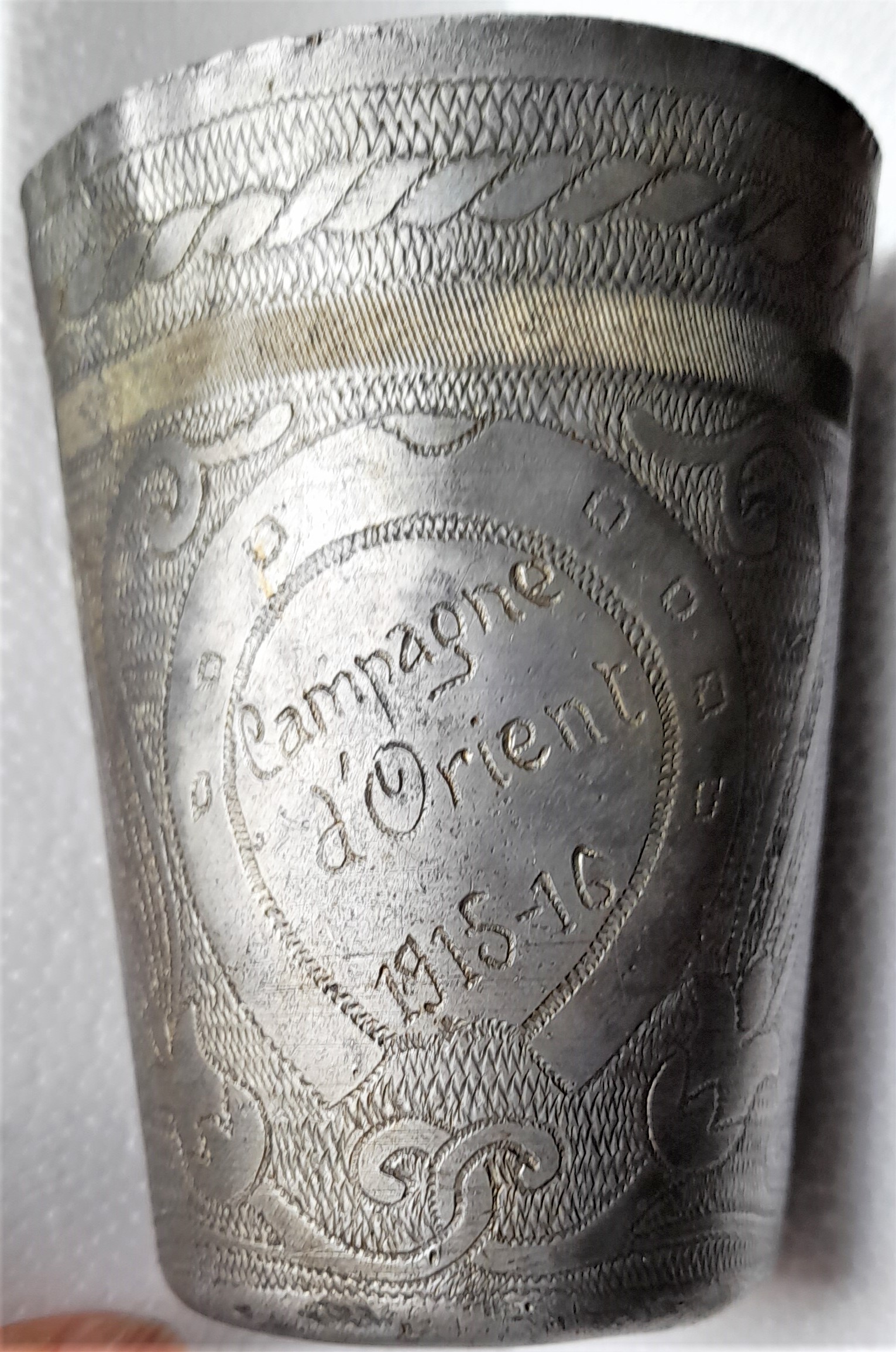
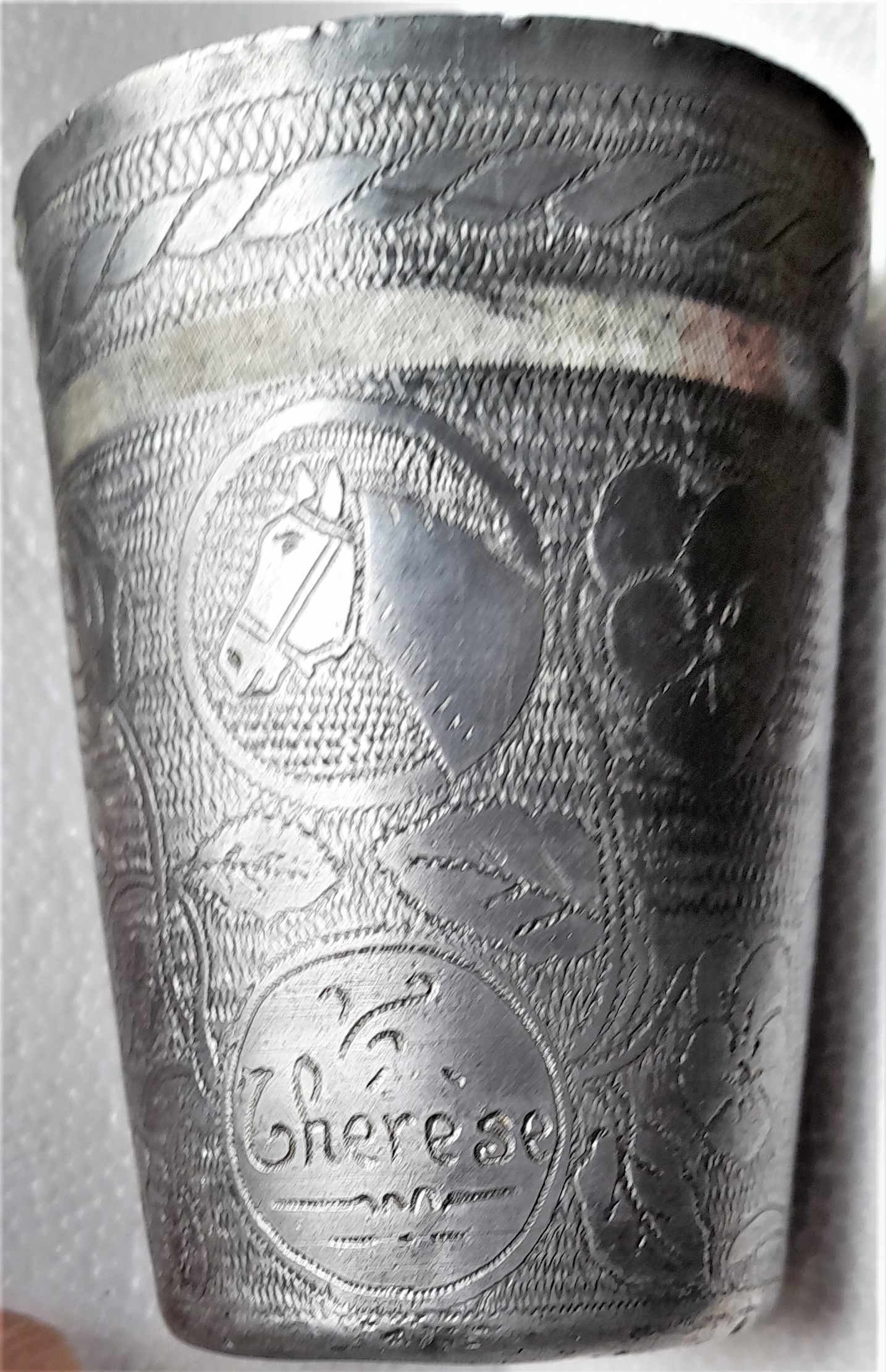
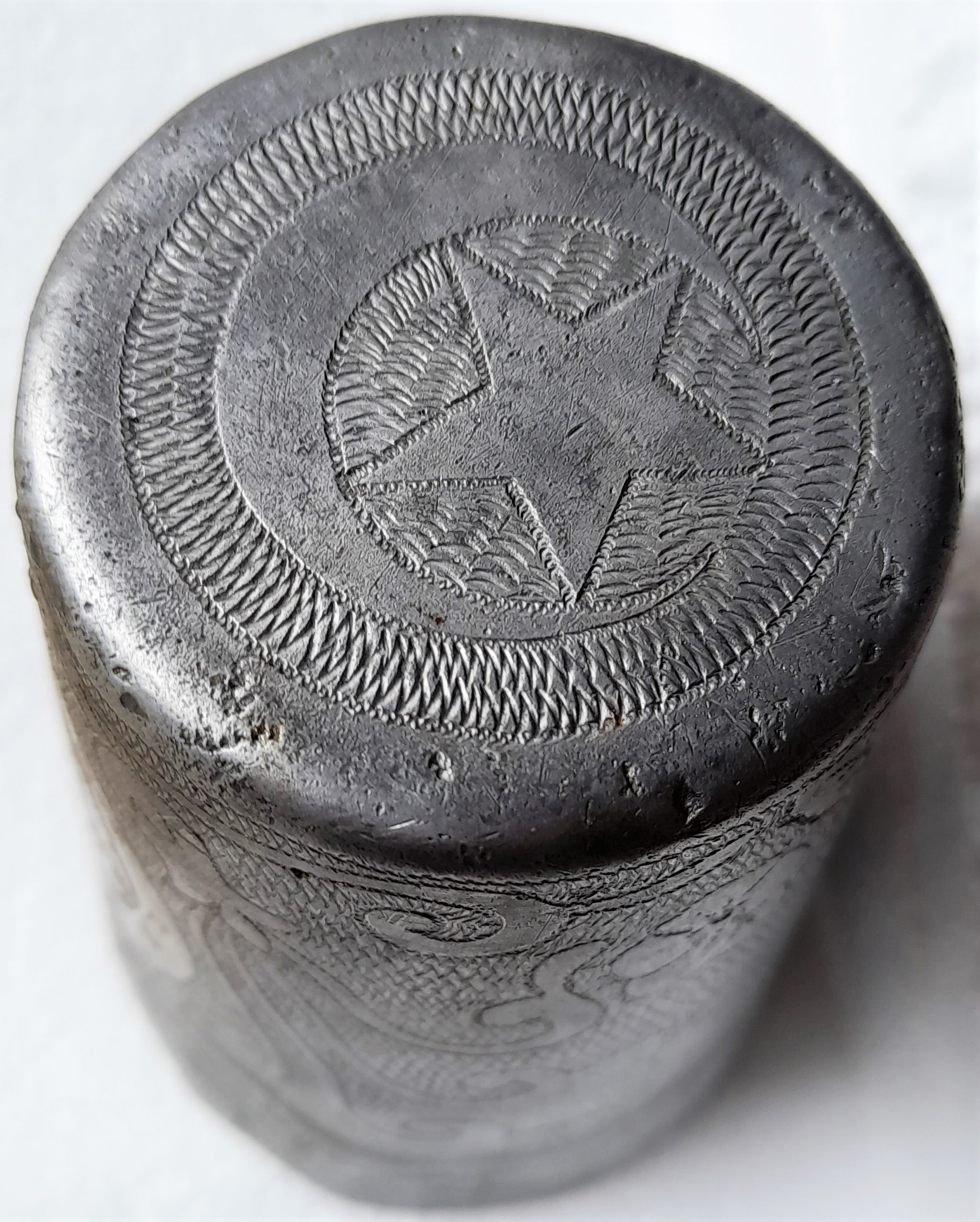
(above) Horseshoe with legend "Campagne d'Orient 1915-16", with framed horse head and Name "Therese" -
a crescent moon and star is engraved on its base.
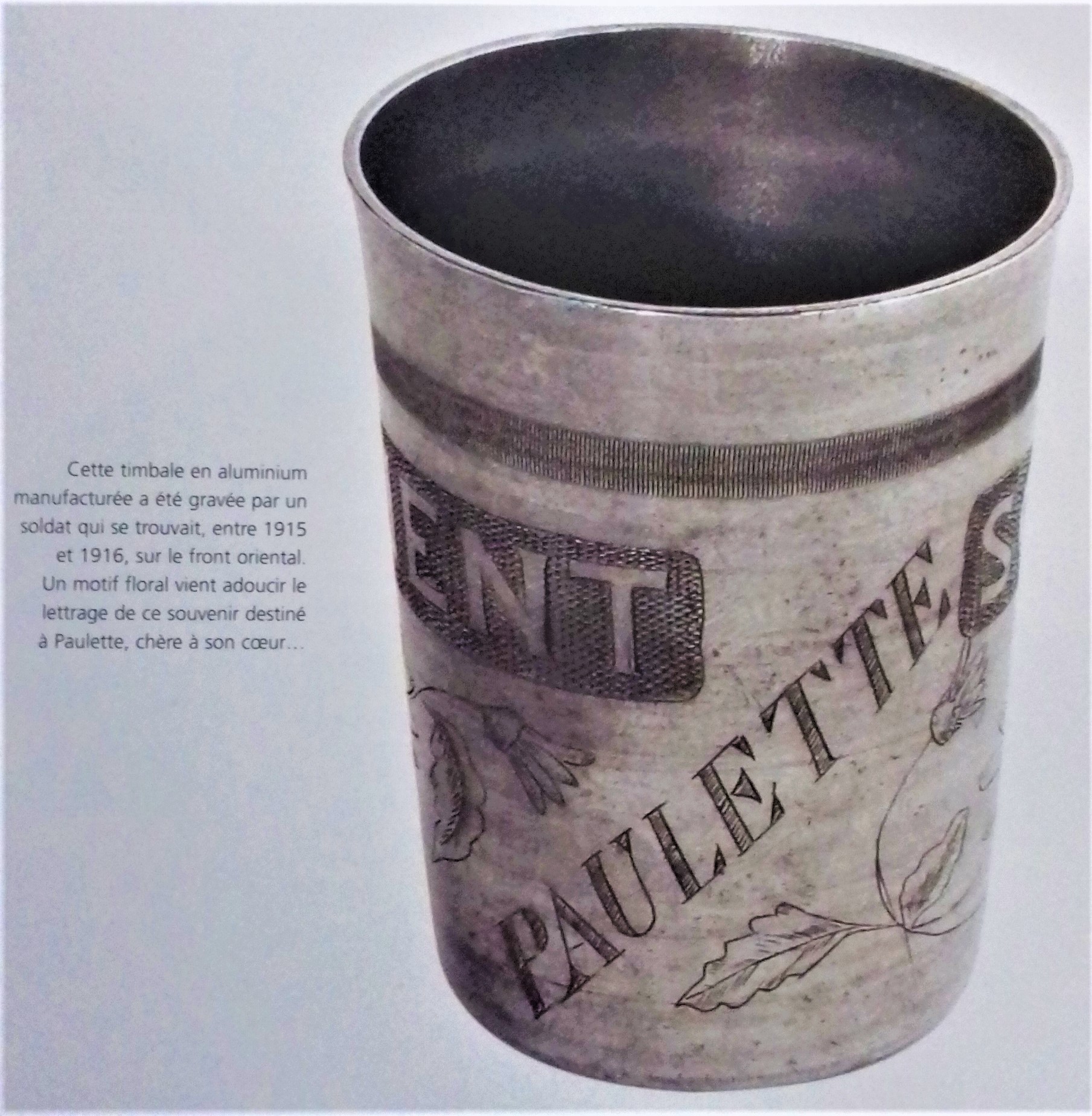
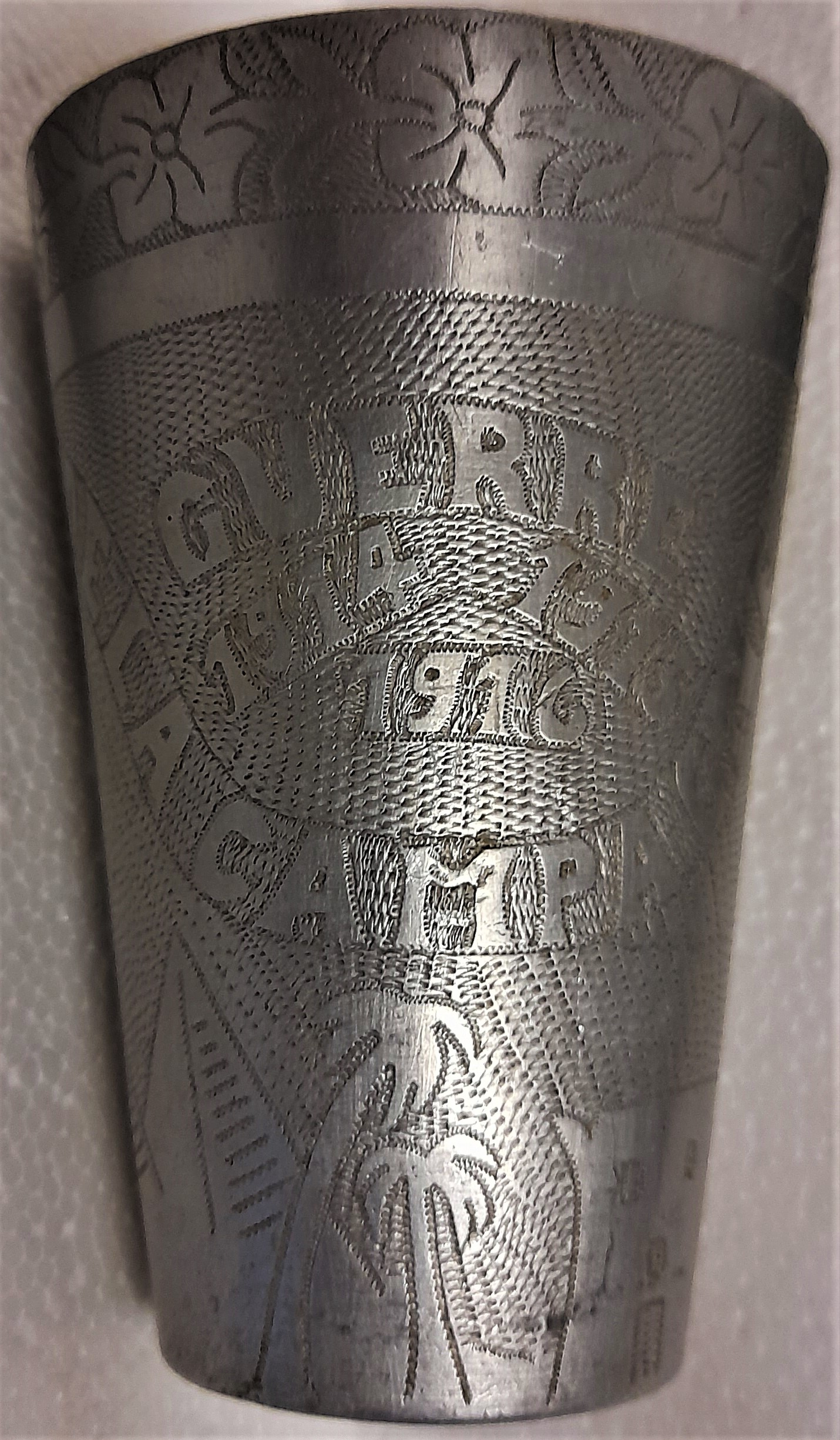
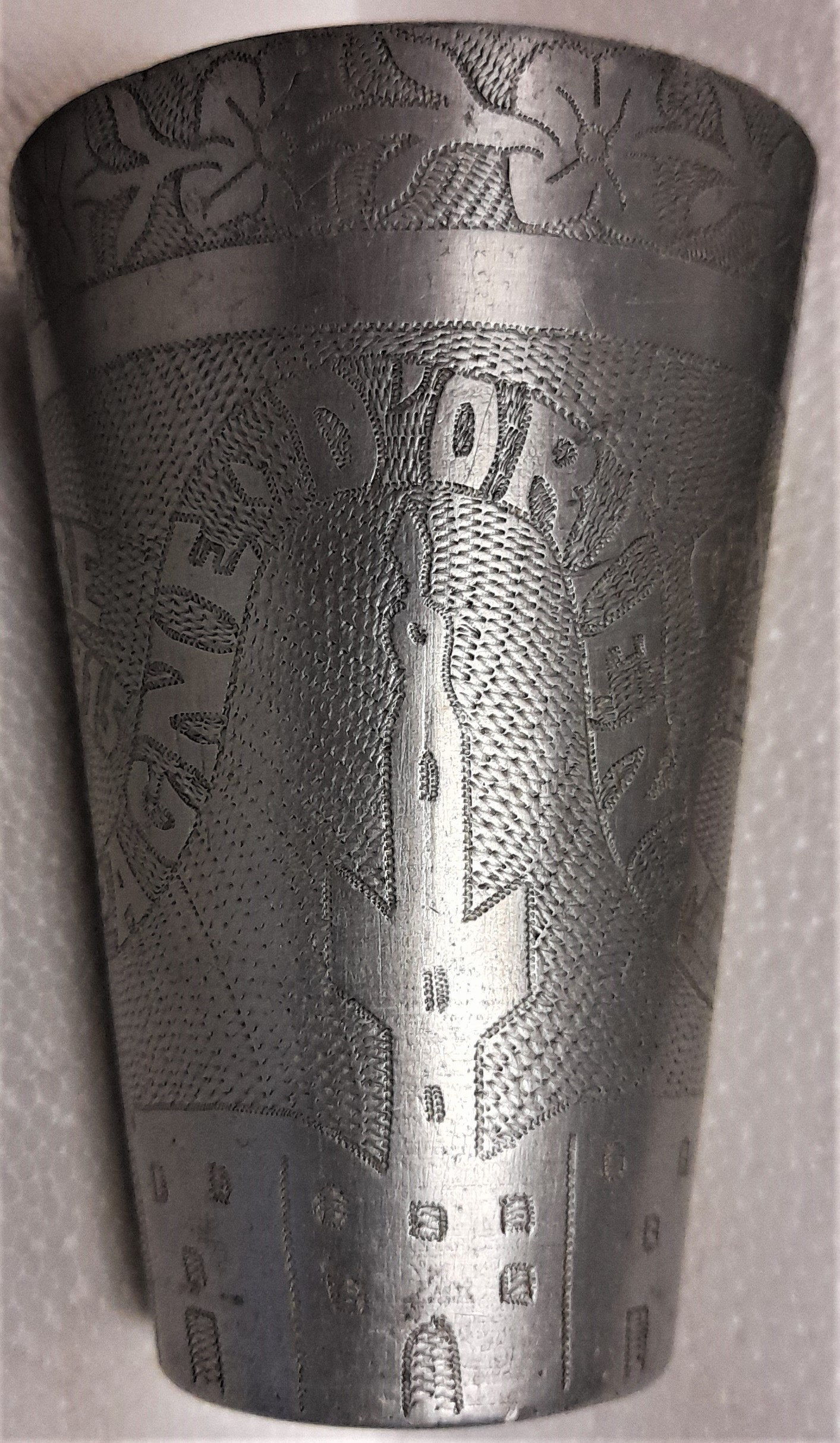
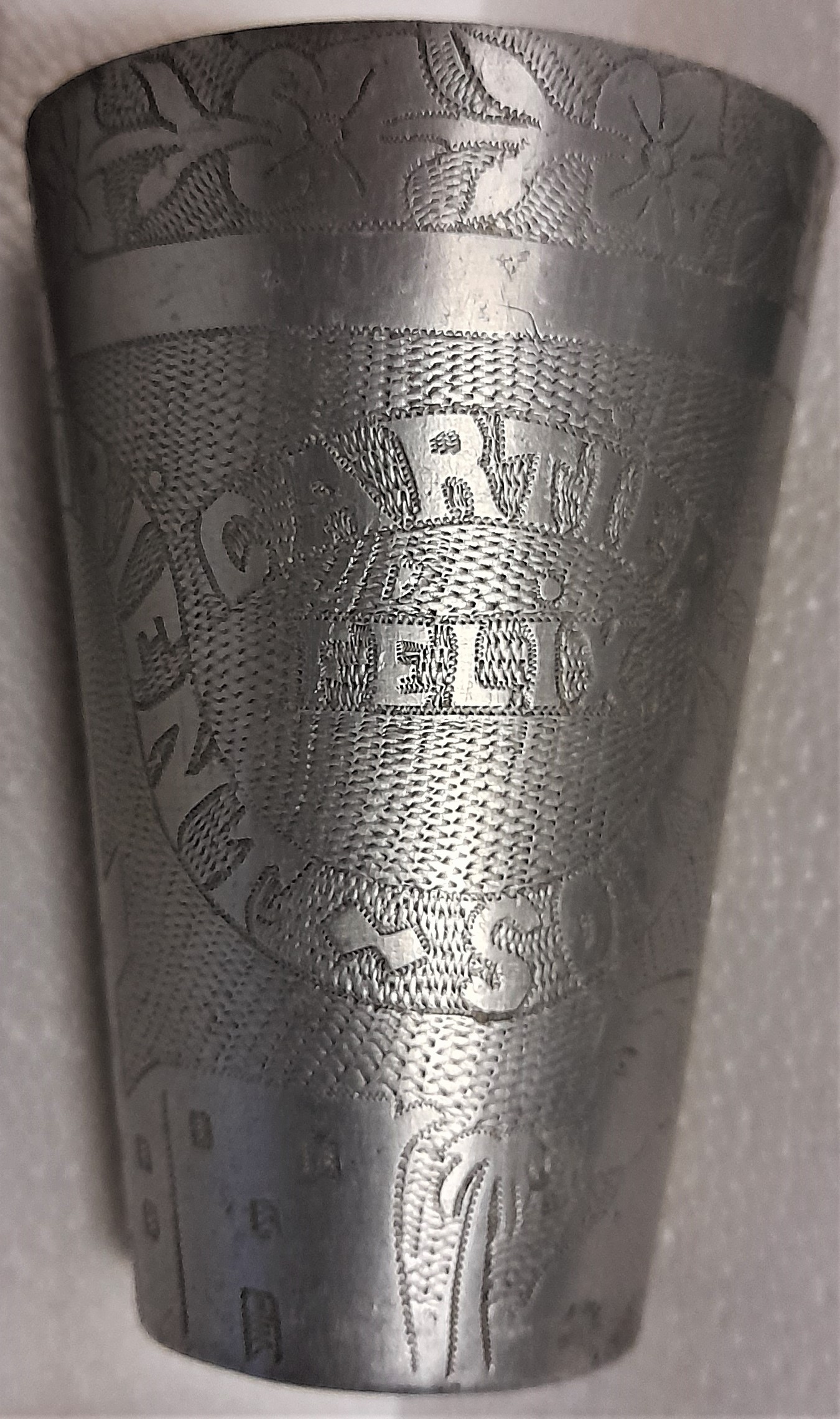
(above) Campaign of The Orient, for "FELIX CARTIER" with mosque, pyramids, sphinx, house, aeroplane and palm trees.
(below) A similar design, with the Poilu's Name "MARCELLE" on the side, and "HENRY" on the base.
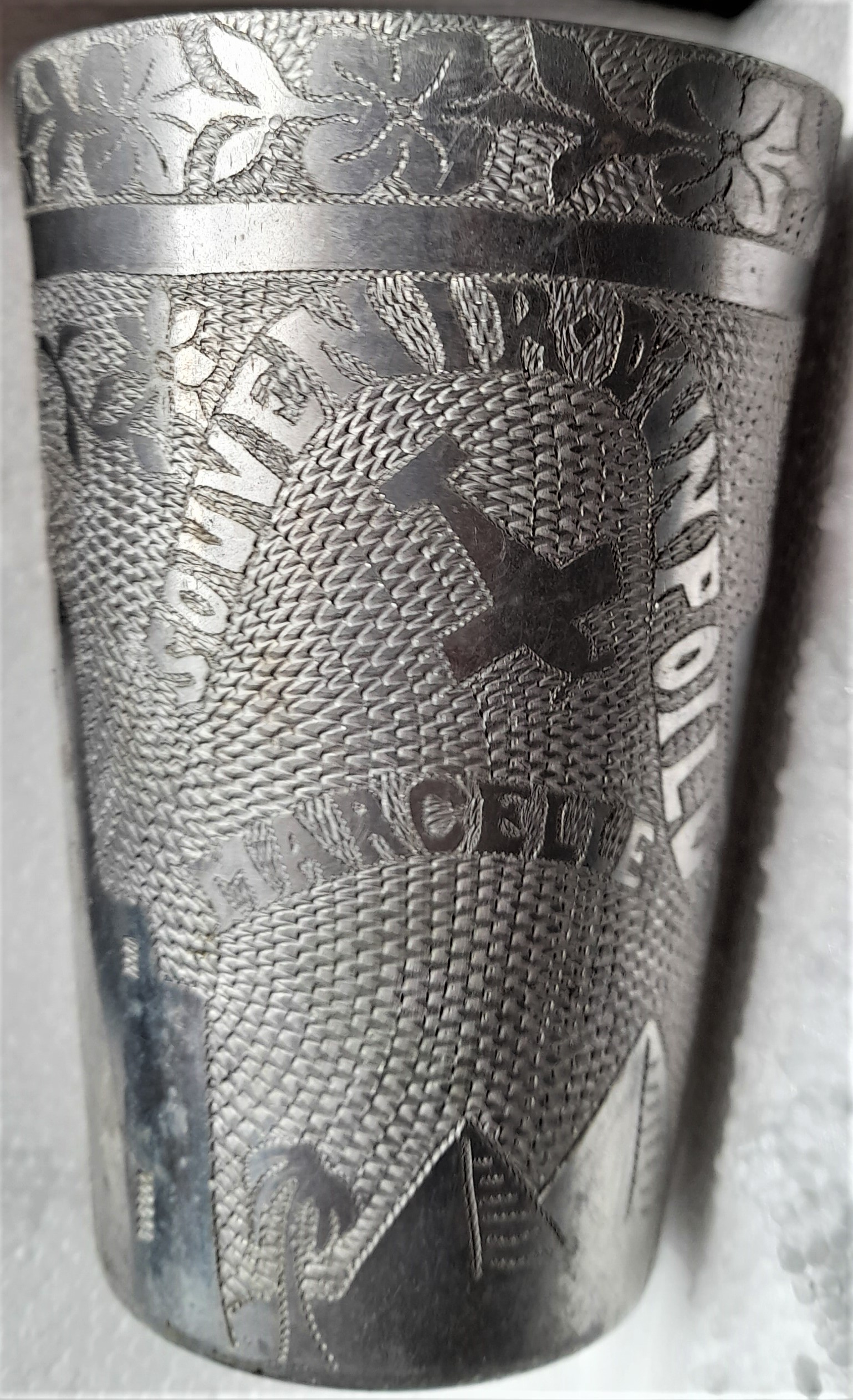
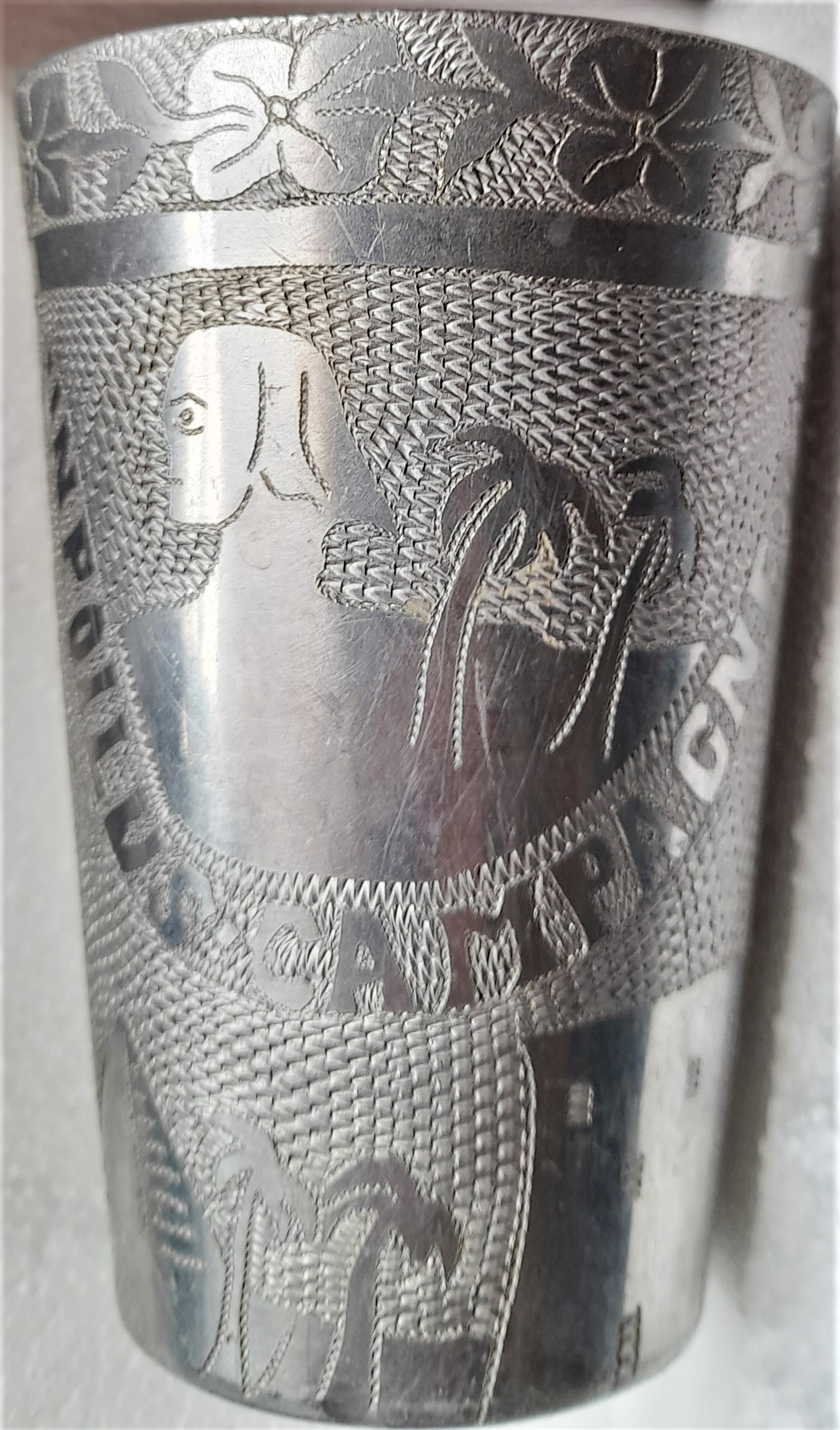
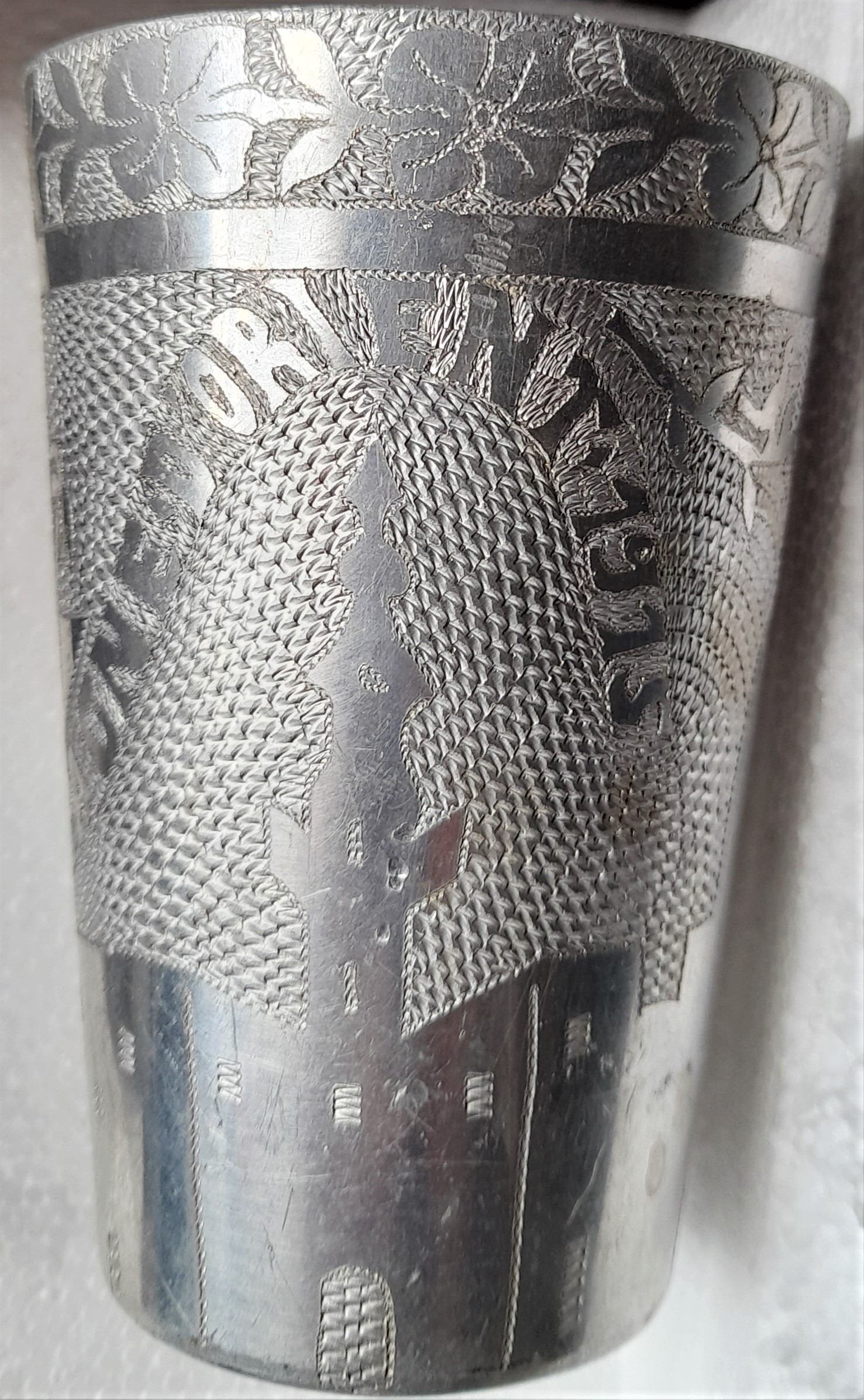
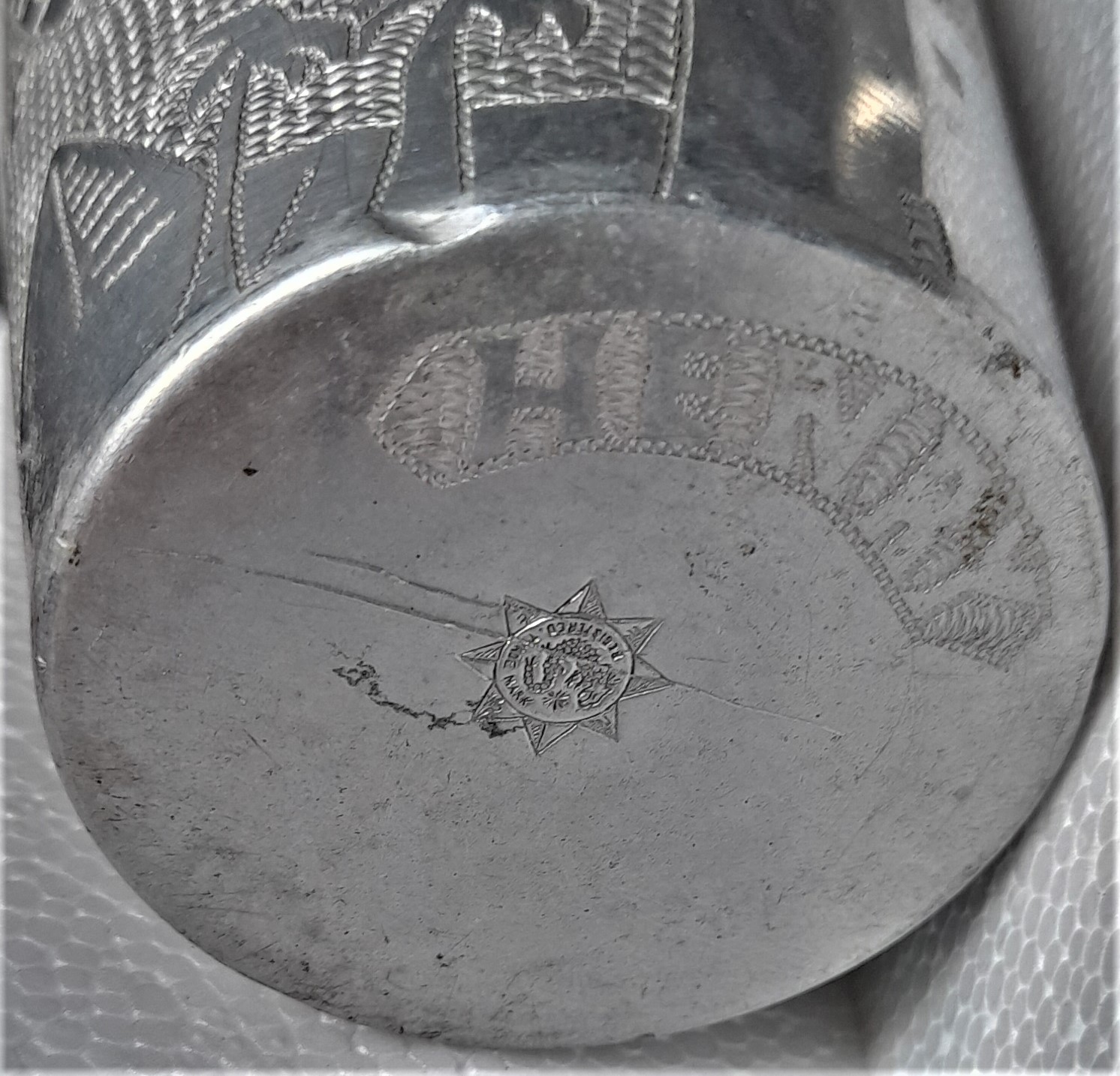
Objects personalised in Prisoner-of-War camps, for internees to remember their captivity.
.jpg?343)
.JPG?343)
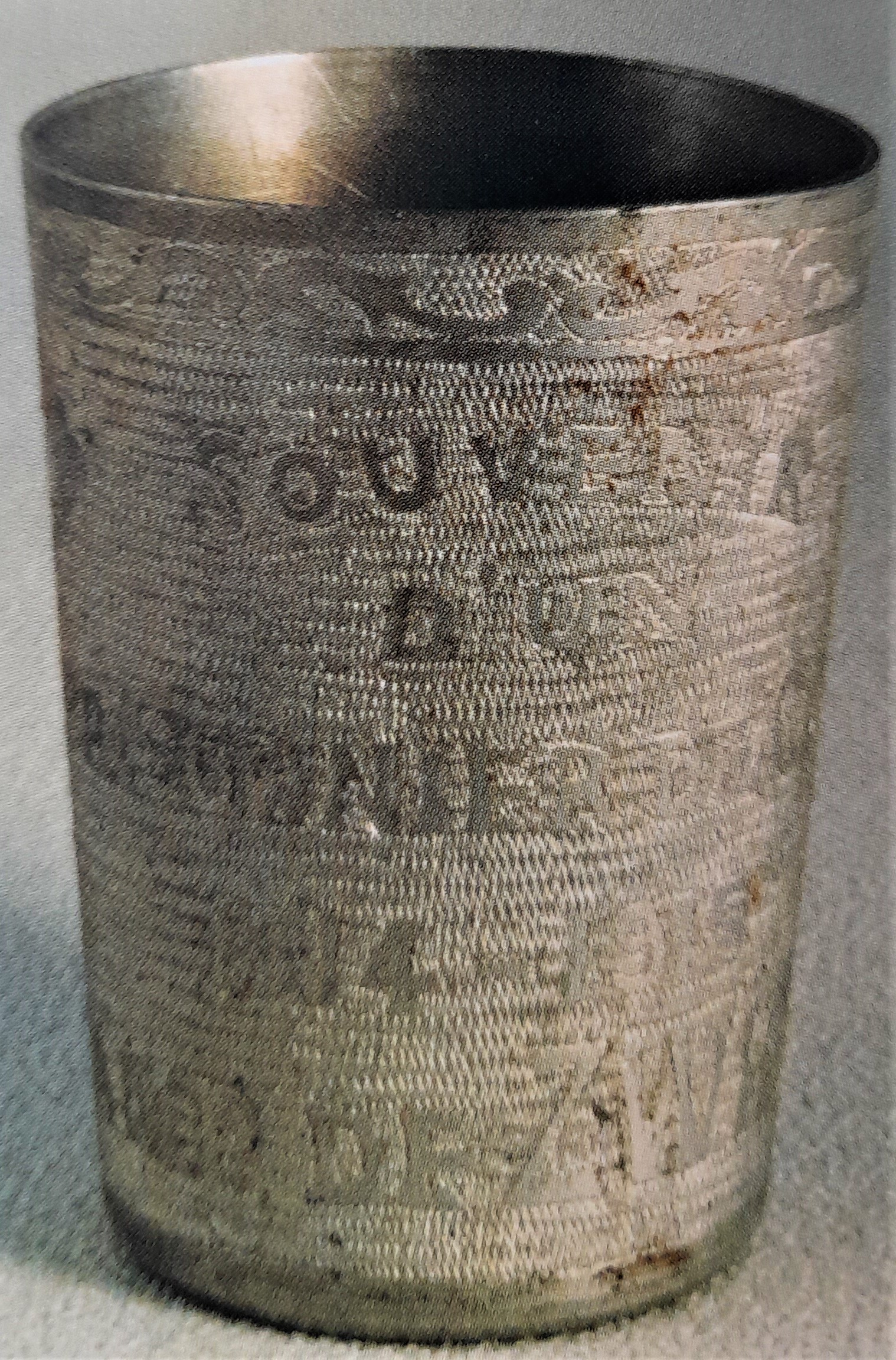
(above) Timbale engraved "Souvenir d'un Prisonnier de Guerre 1914-1915 Camp de Zwickau"
and initials "A.S." - Zwickau Camp was in Eastern Germany
.jpg?723)
(above) engraved "Aus Sibirischer Gefangenschaft 1914 - 1916" meaning
"From Siberian Captivity" - the beaker carries the names of some prisoners
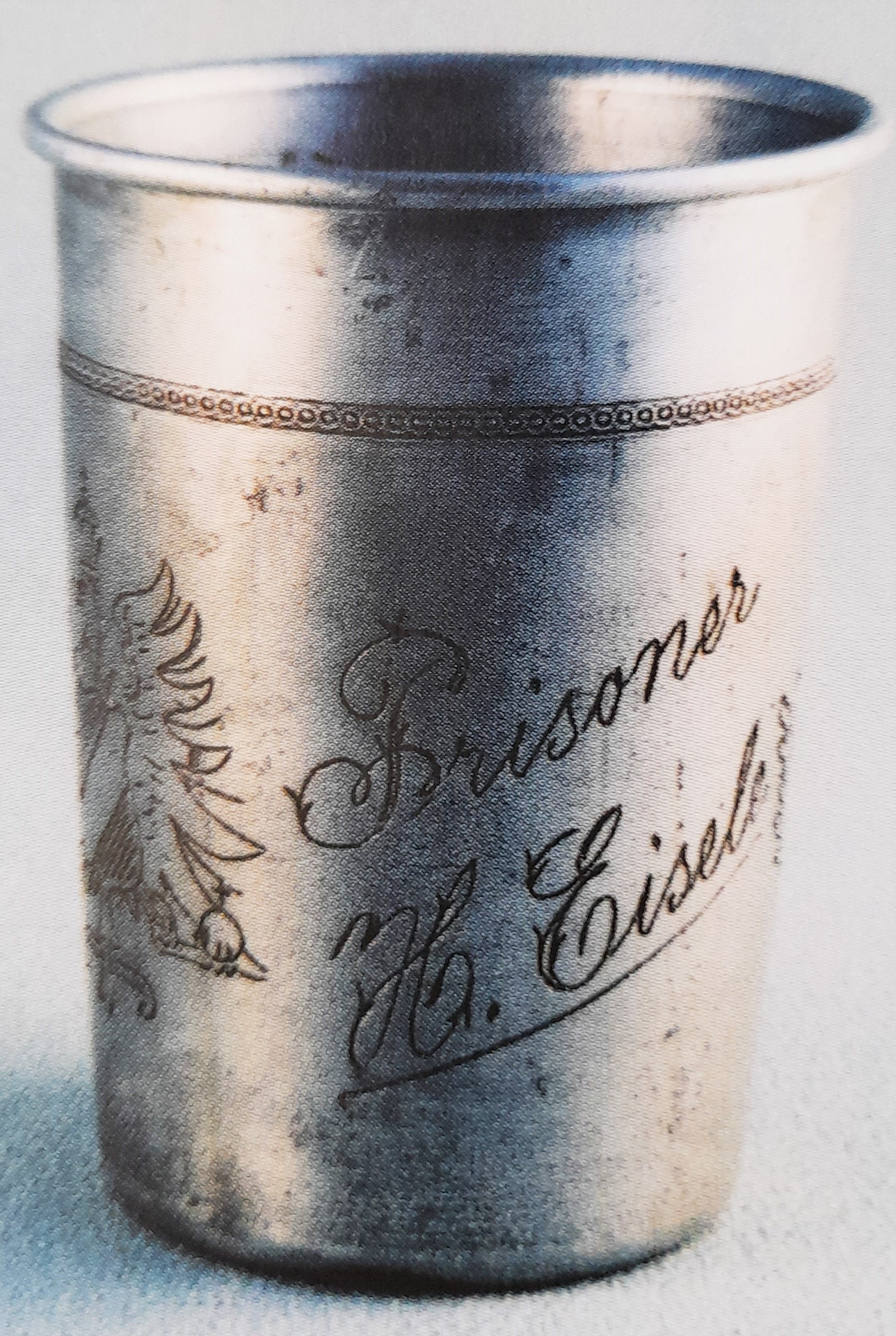
(above) Timbale made by a German Prisoner for an American Officer, engraved with an Imperial Eagle, US Army insignia, and the legend: "Prisoner H. Eisele. W.F. Stauton Captain F.A. comdg. Camp 5 St. Nazaire"
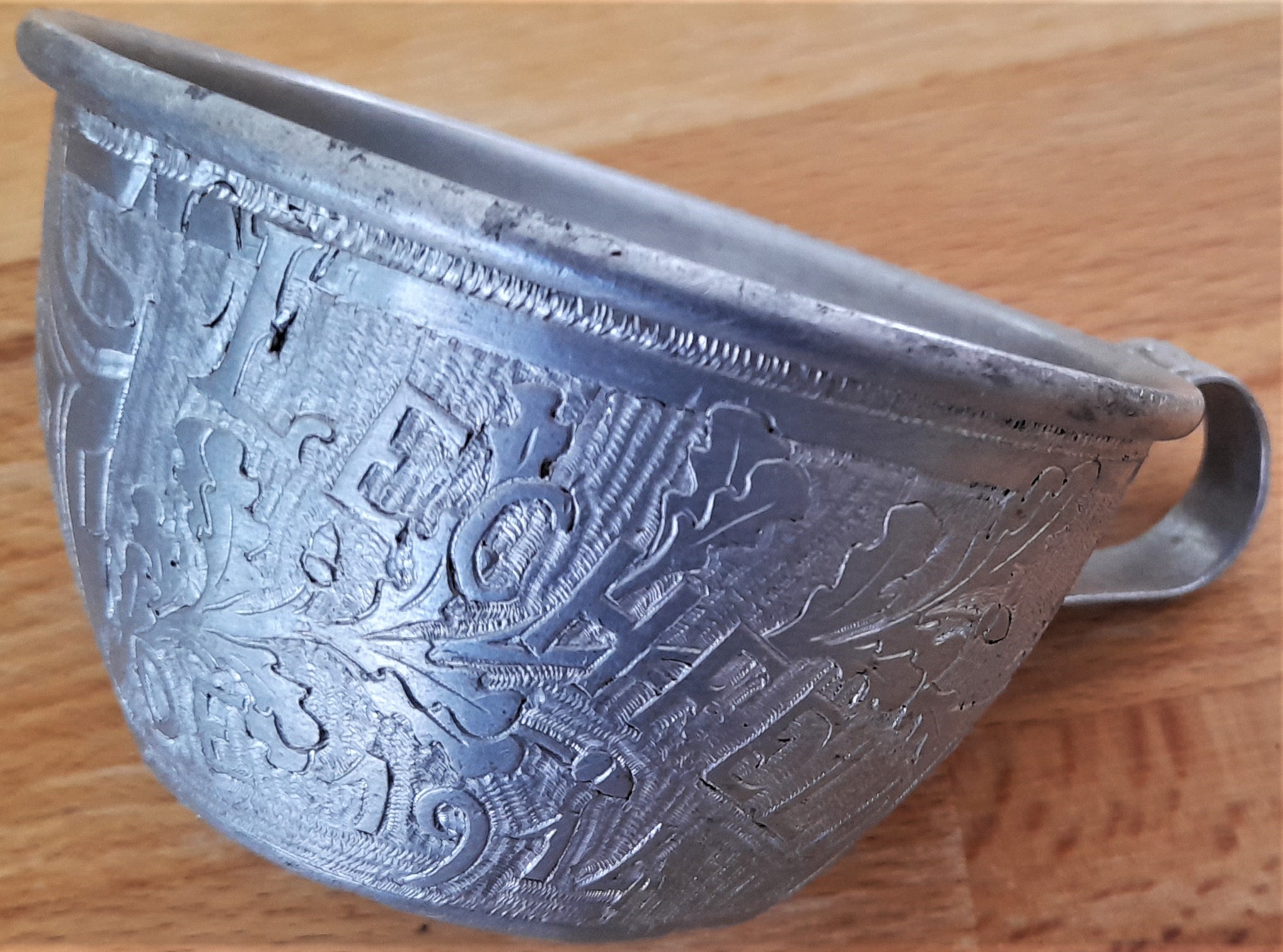
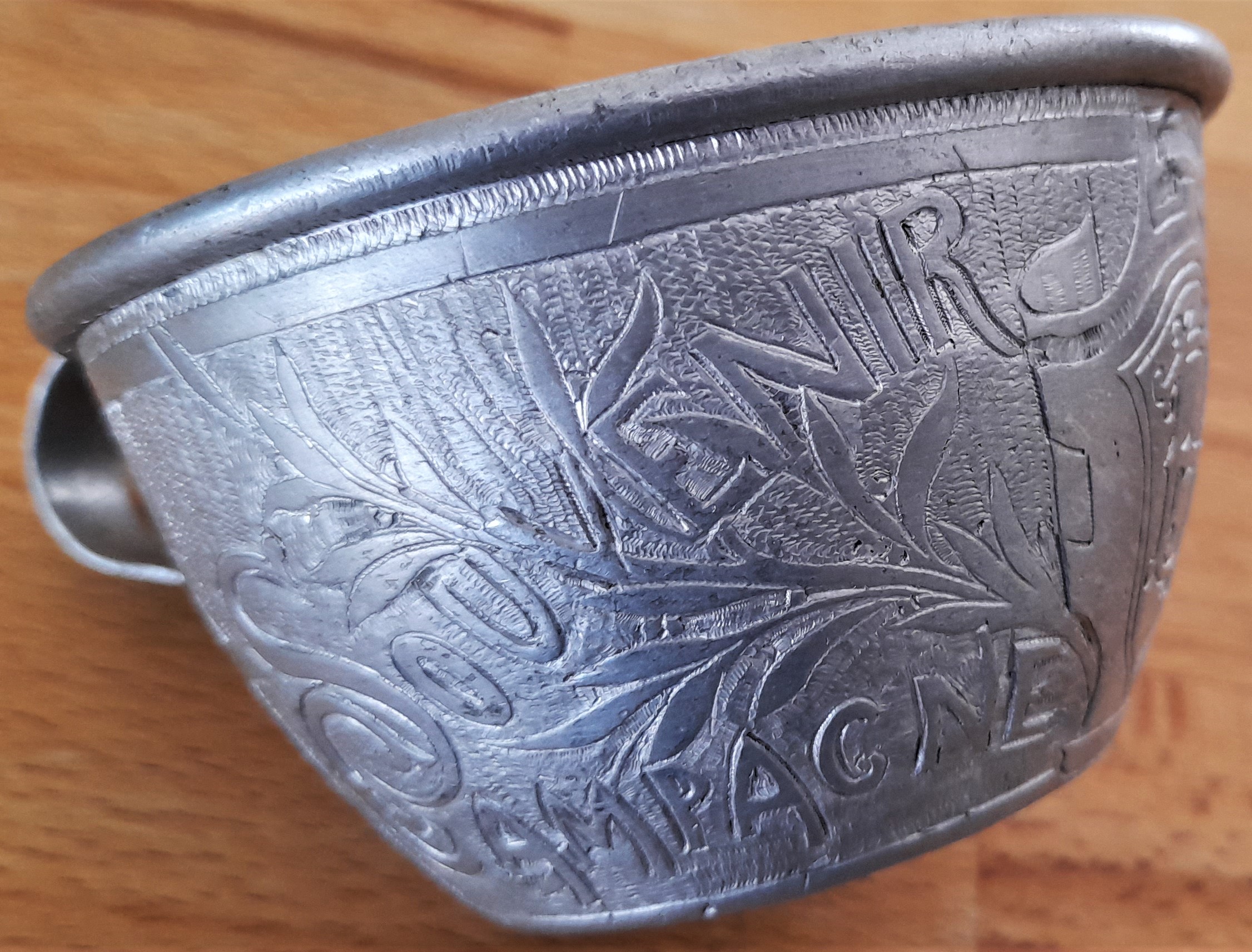
(Above & below) P.O.W. memory - a quart marked "107" "SOUVENIR CAMPAGNE DE 1914" "LECHFELD"
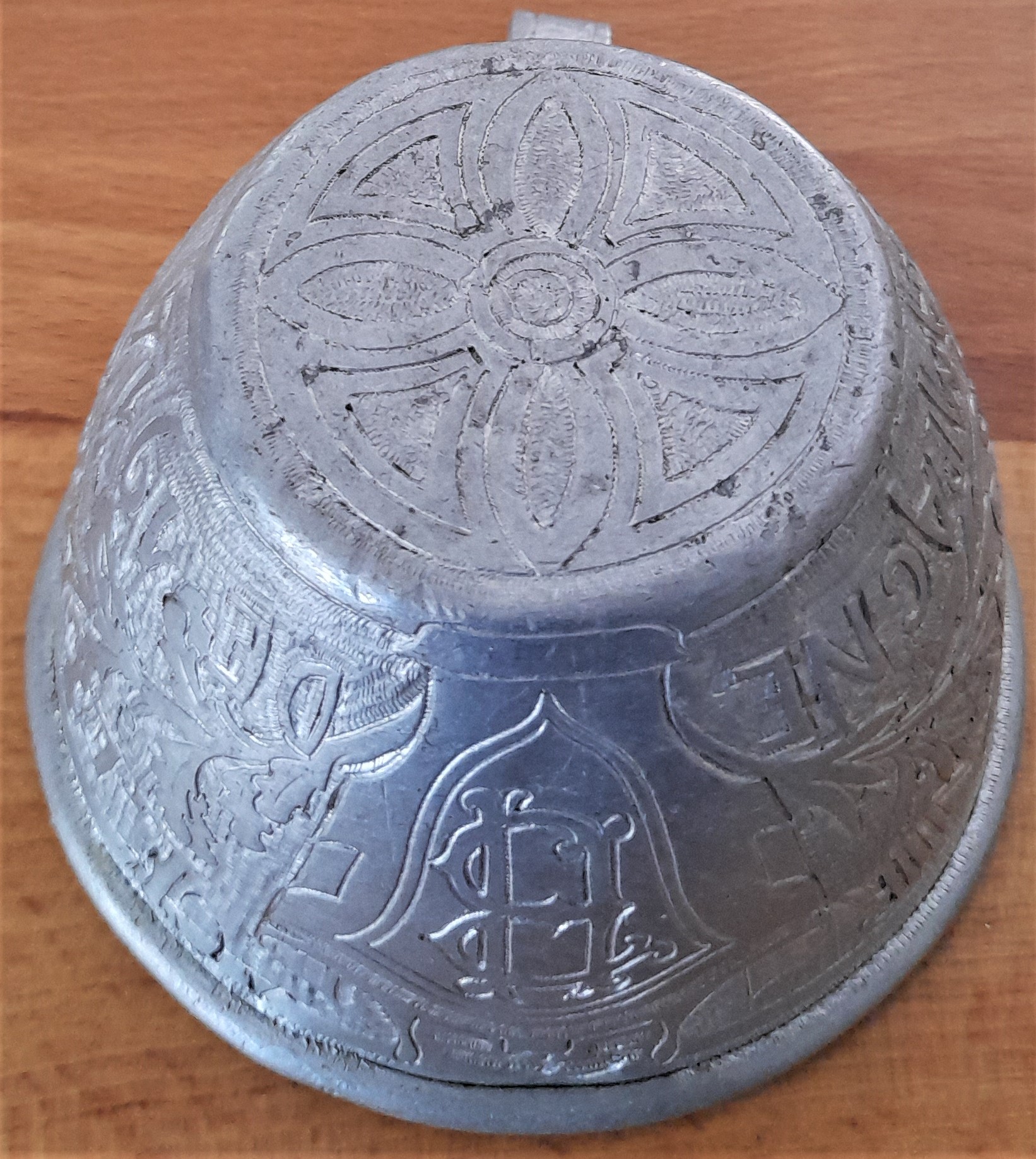
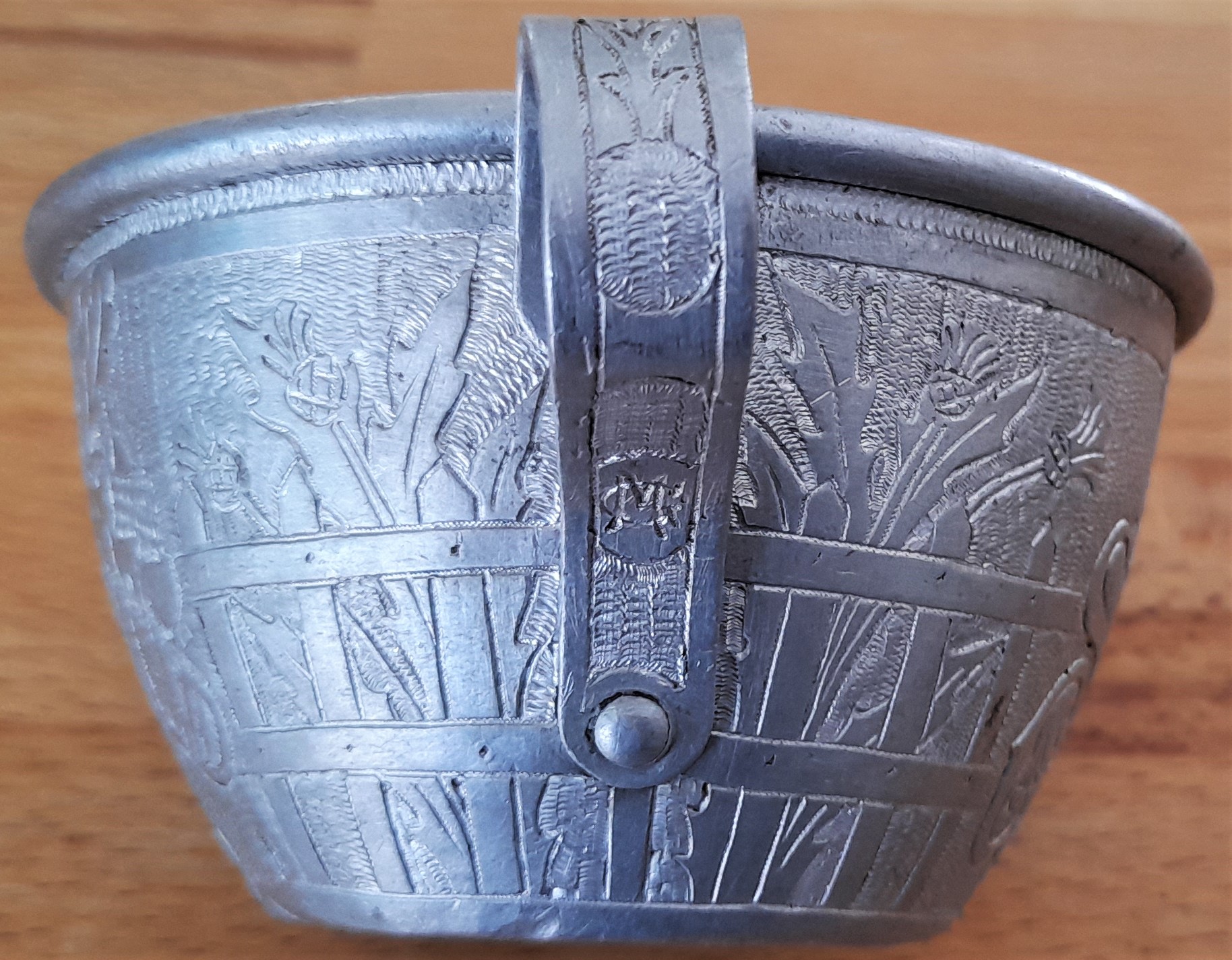
(Below, left) a Bulgarian aluminium aperitif cup inscribed "In memory of the fallen heroes in 1915-1918"
(Below, right) a Bulgarian aluminium aperitif cup inscribed "A memory from the war 1917"
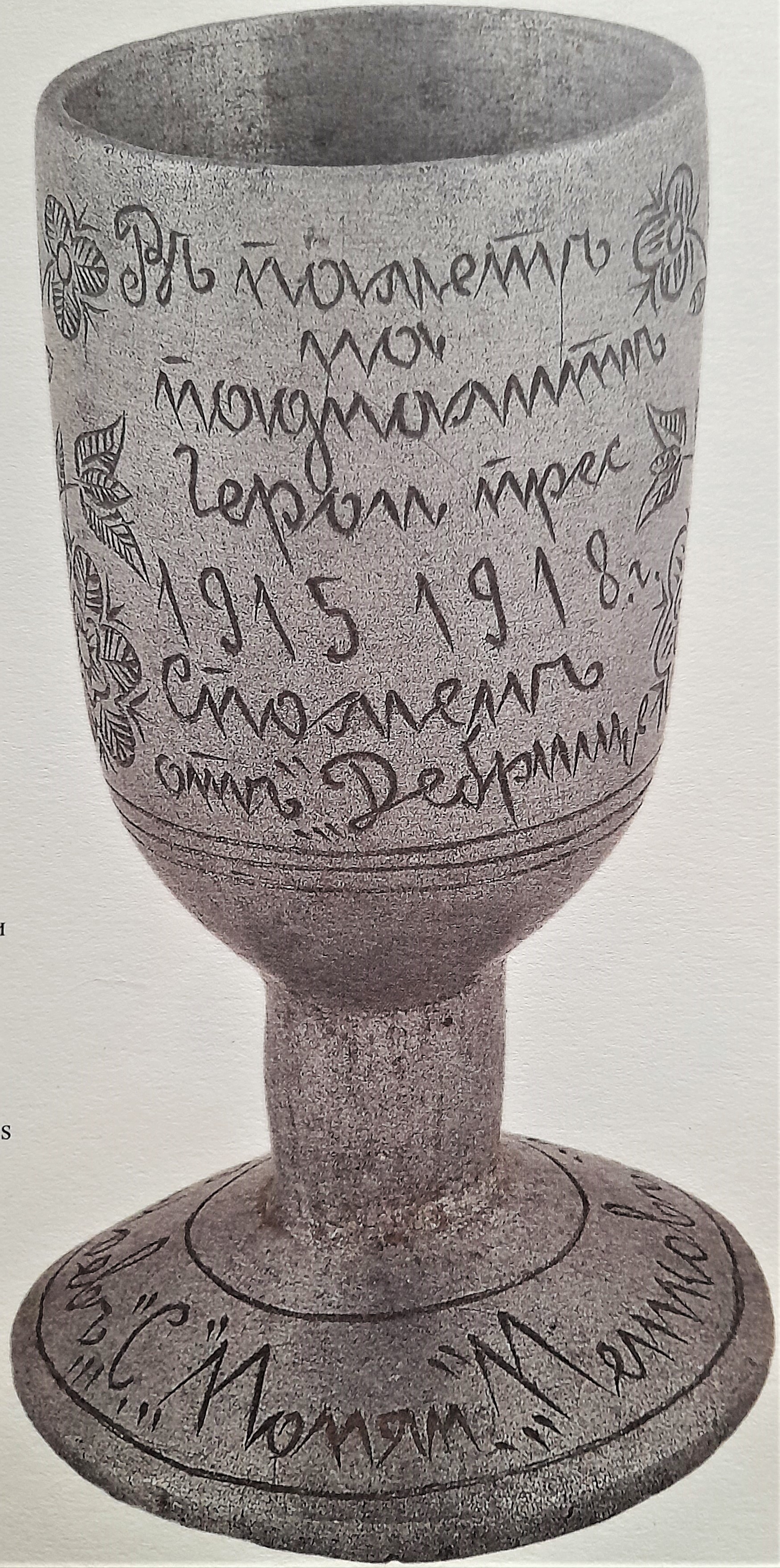
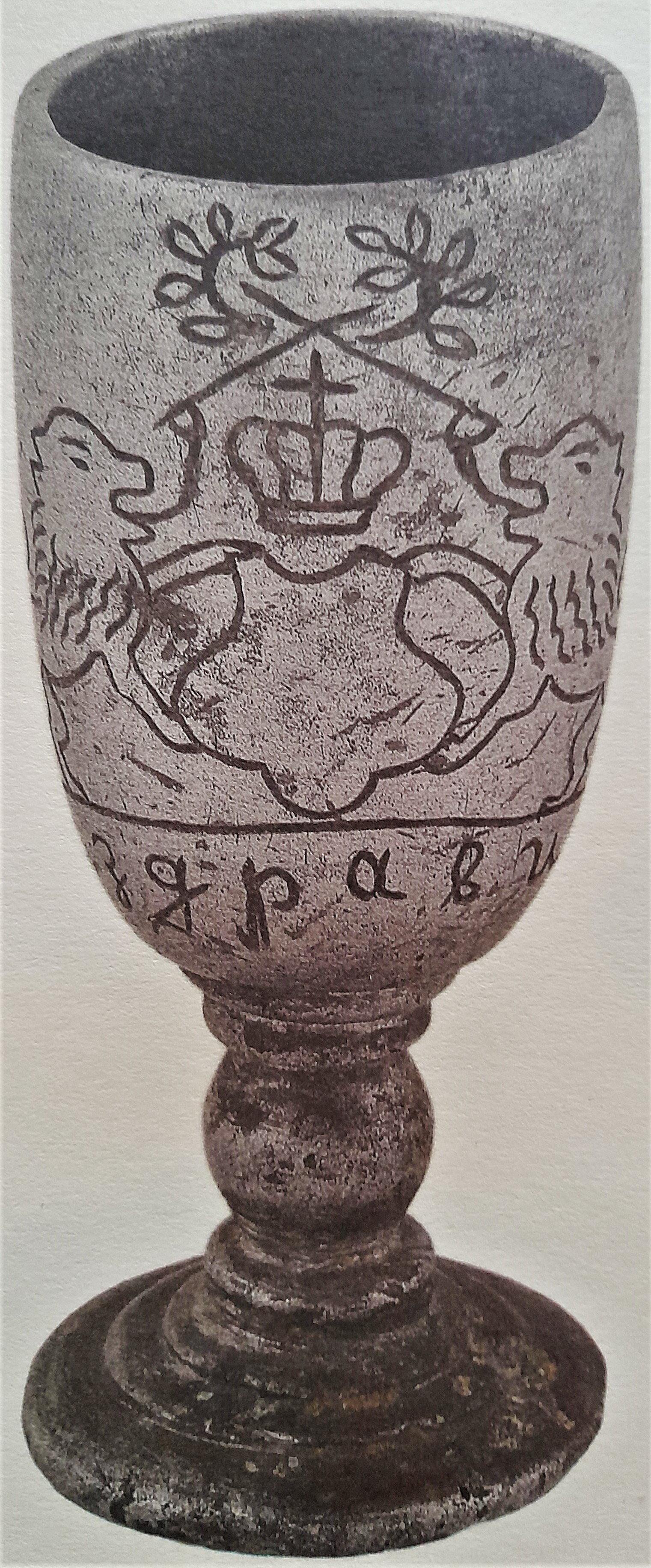
(Below) British engraved aluminium drinking cups
Left cup (in both photos) engraved "1917 FRANCE" "NANCY FROM DAVID"
with Royal Engineers Badge & motto: "HONI SOIT QUI MAL Y PENSE"
Right cup (in both photos) engraved banner - "ENGLAND HOME AND BEAUTY" above a heart with "LOVING AND TRUE"
and Royal Artillery UBIQUE Badge with cannon & motto: "QUO FAS ET GLORIA DUCUNT"
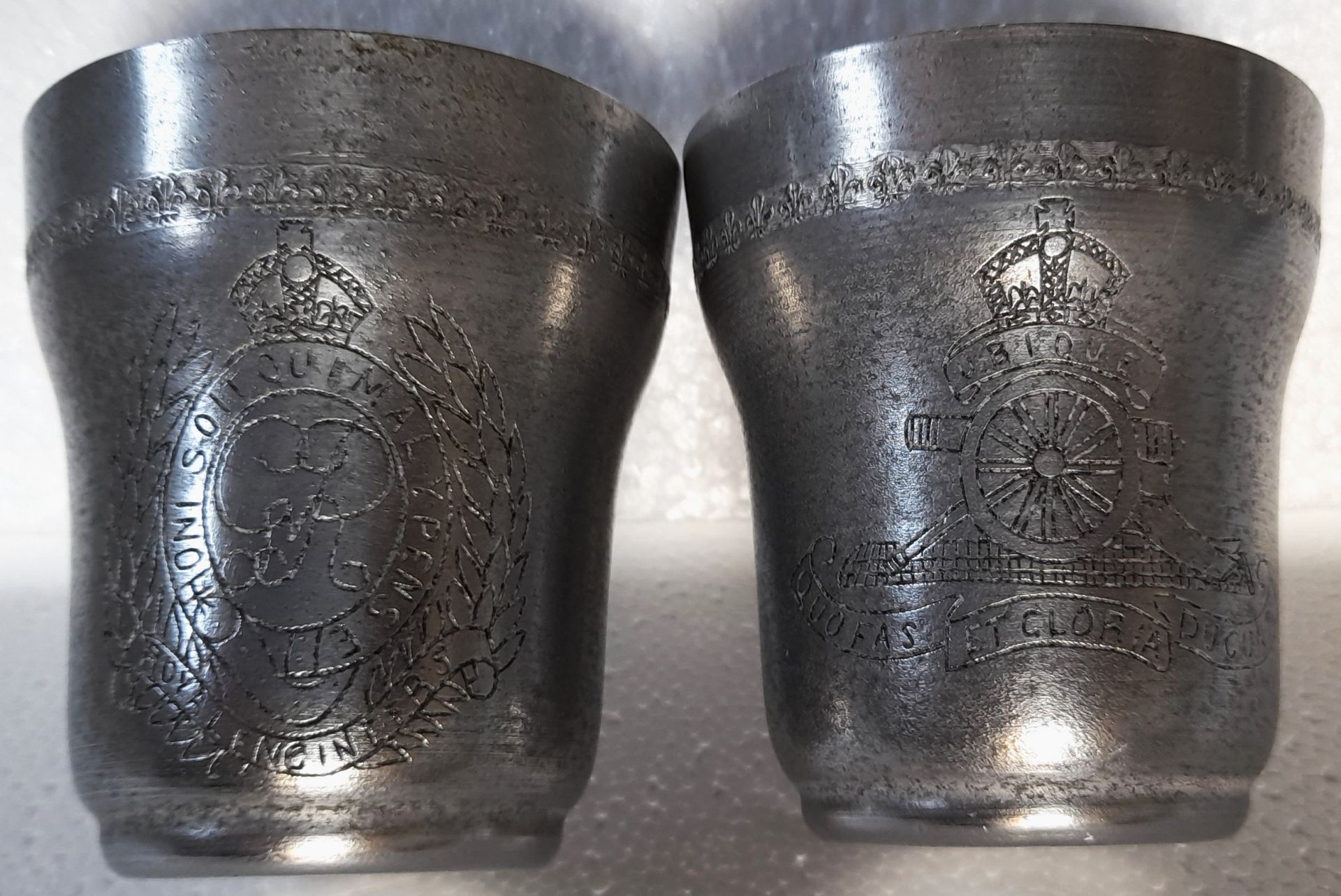
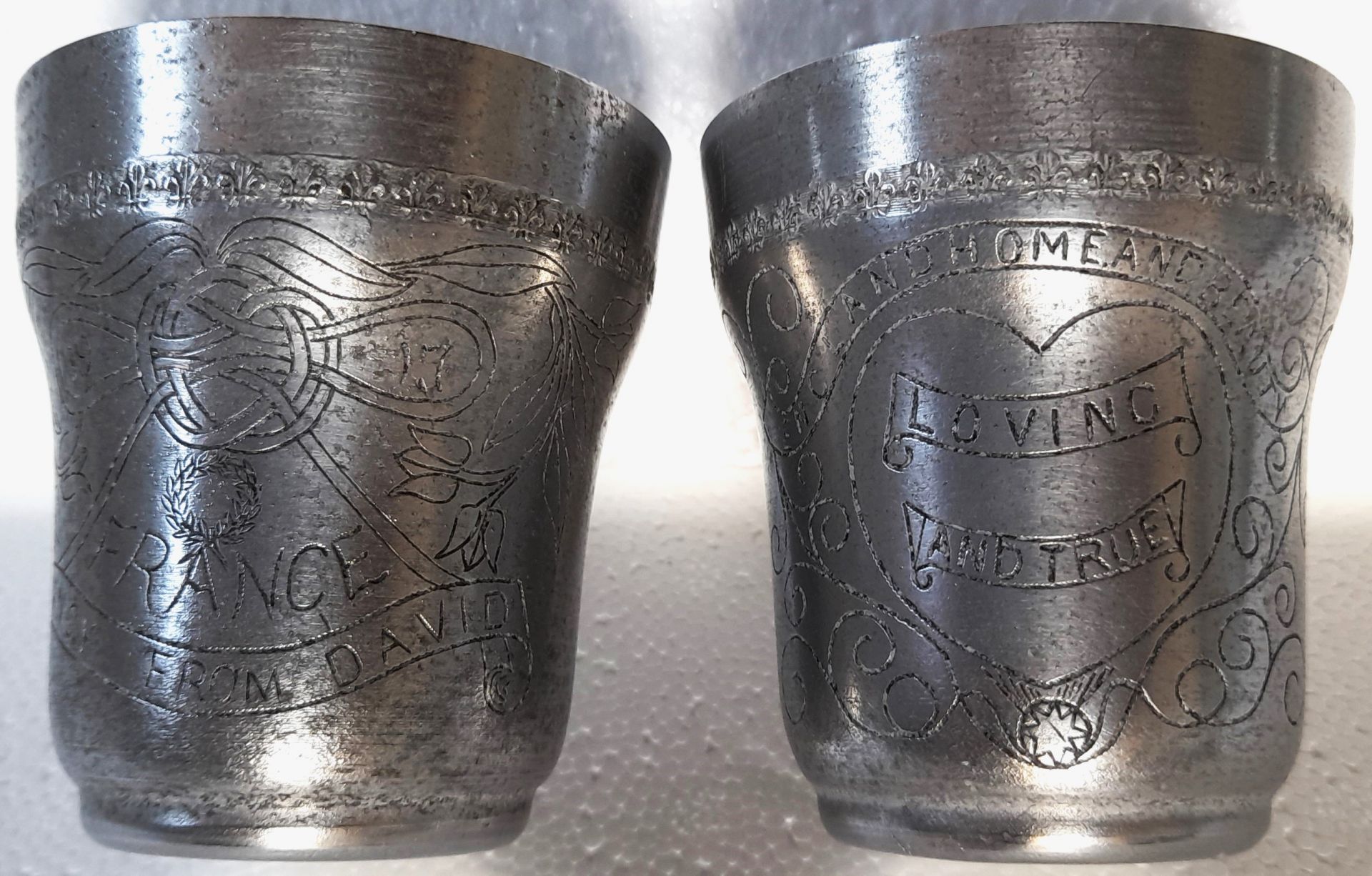
(Below) Left cup (in both photos) engraved with Lucky Clover emblem and "CANADA" "AUSTRALIA" "COMMONWEALTH" 1917 and a horseshoe with thistles "FROM M. VANE 1917"
Right cup (in both photos) with Royal Engineers Badge & motto: "HONI SOIT QUI MAL Y PENSE" & "France 1915-16-17" and horseshoe surrounded by a floral display and "GOOD LUCK" "1917"
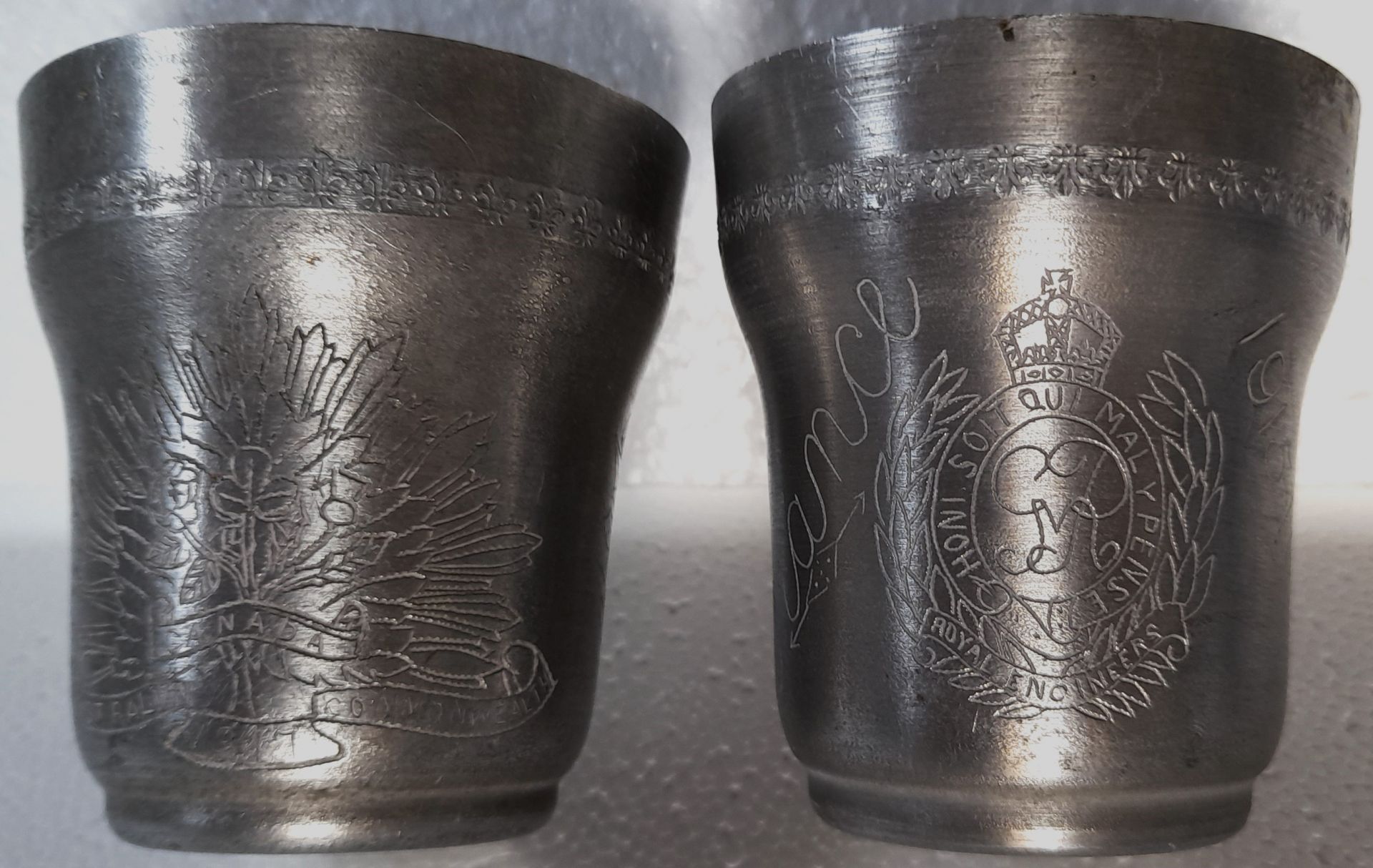
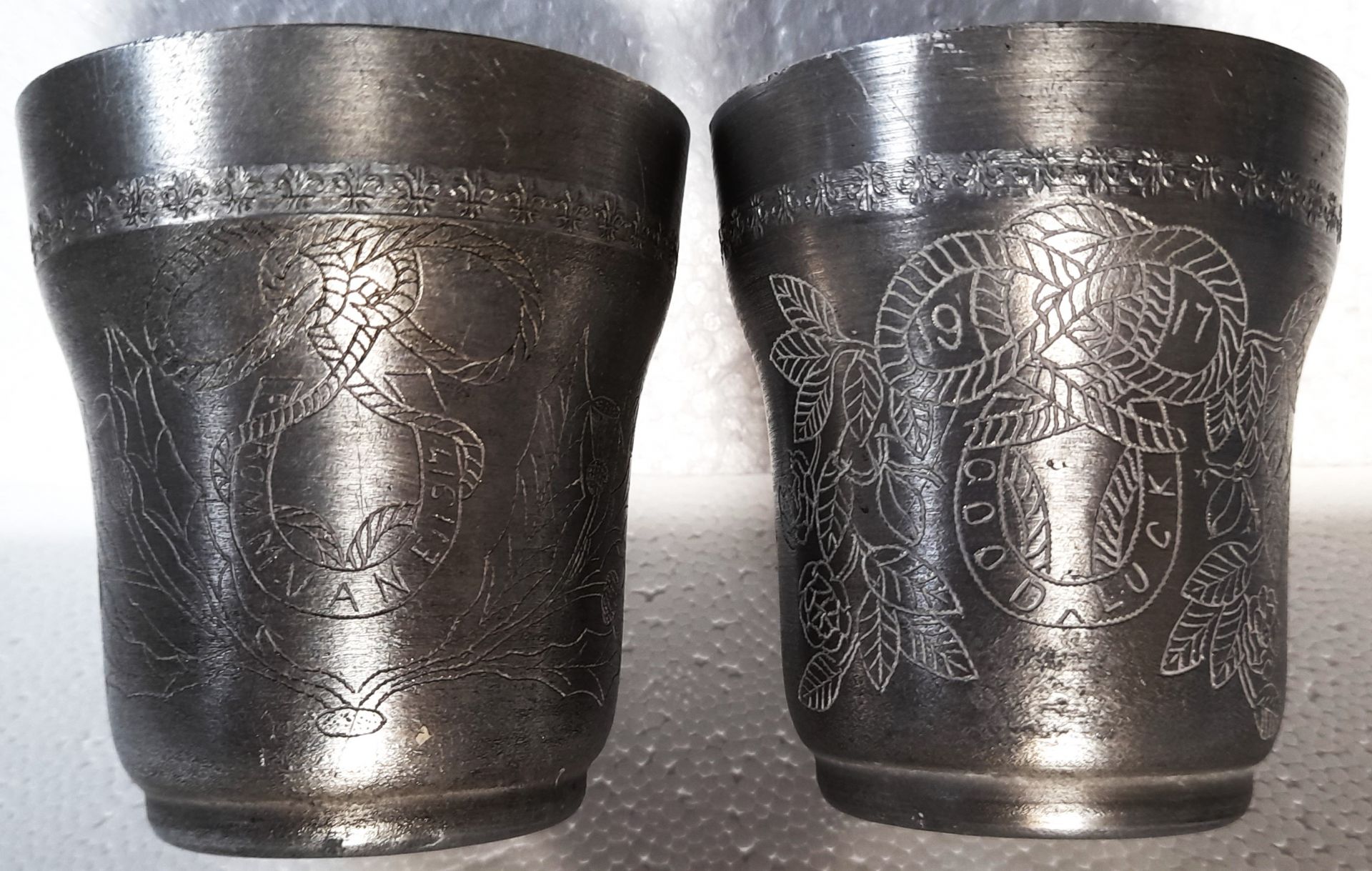
THE AUSTRO-HUNGARIAN PRESENTATION CUP 1914-1915
.JPG?633)
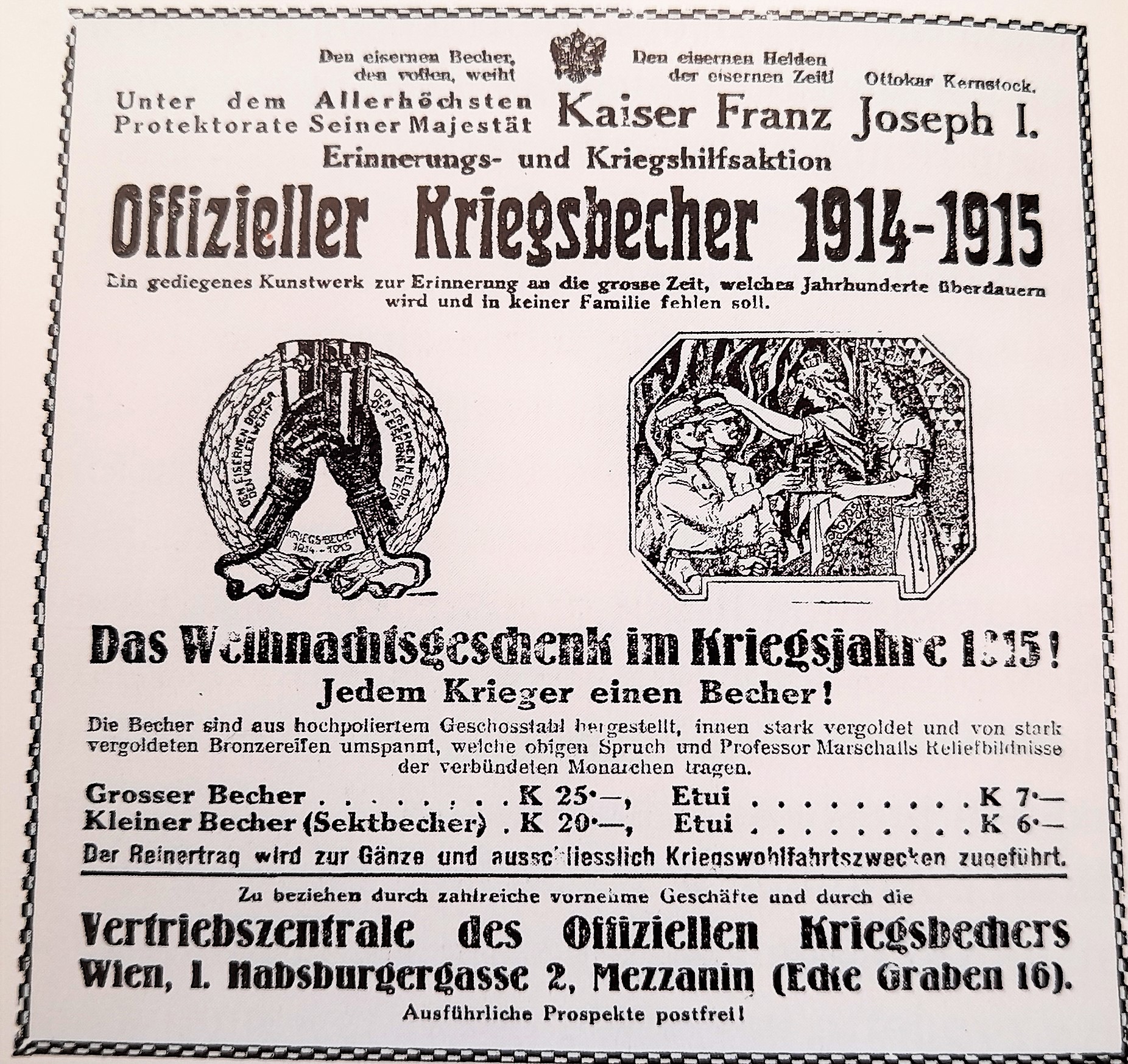
Journal advertisement offering this nickel plated gilt iron presentation beaker - "The Christmas Gift in the War Year 1915 !"
"MORE OFFICIAL WAR MUG 1914-1915"
Text reads that the "Kriegs Becher" (War Beaker) is made "of highly polished bullet tabs, strongly gold-plated inside, with heavily gilded bronze rounds showing Professor R. Marschall's relief portraits of the composite monarchs" (being Wilhelm II and Franz Joseph). "Under the very highest protection of his majesty - a mug for every warrior !"
"I am a dignified work of art in memory of the great time which will last for centuries and should not be missing in any family."
"Memories / Reminder - and War Aid Operation"
"DEN EISERNEN HELDEN DER EISERNEN ZEIT" (THE IRON HERO OF THE IRON AGE) by Ottokar Kernstock (1848 - 1928) (patriotic priest, pastor, poet, librarian and Great War poet of bloodthirsty lyrics, later in 1923 writing the NAZI swastika song).
The metal band around the beaker bears the inscription (translated from German):
"The iron cup, when full, is consecrated to the iron trio of the iron time".
To purchase a large mug cost K 25 (plus 7 for a case), or K 20 (plus 6 for a case) for a smaller "champagne" cup.
"The net income is used for whole and exclusively permitted war welfare purposes."
"To be obtained by numerous noble trades from the Sales Headquarters, Vienna, I, 2 Habsburger, Mezzanine (Corner Graben 16)"
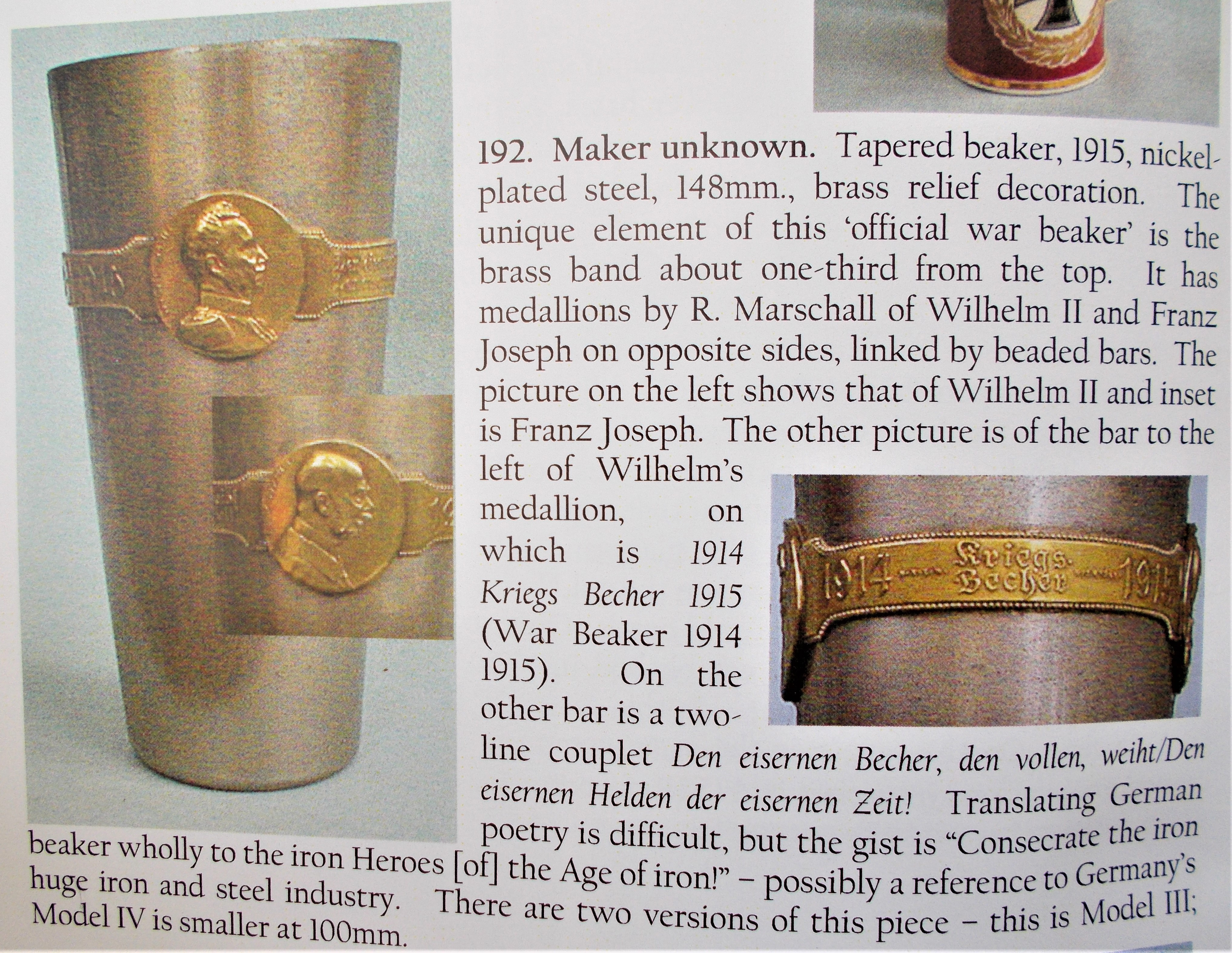
(above extract courtesy of "Memories of Conflict" by Anthony King)
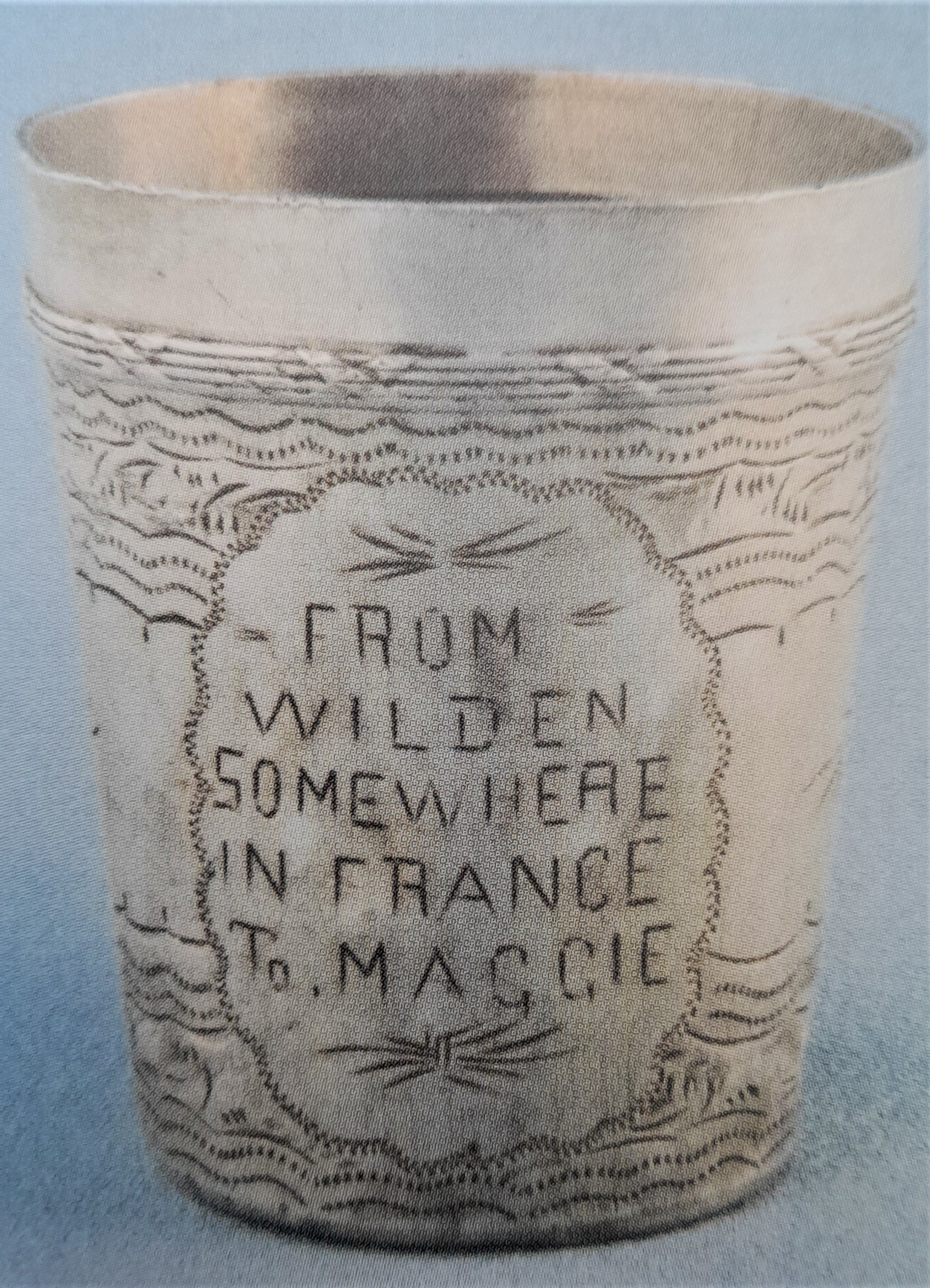
(Above) timbale with a Christmas message to "Maggie" from "Wilden".
Verso engraved: "Wishing You a Merry Xmas and a Happy New Year 1915"
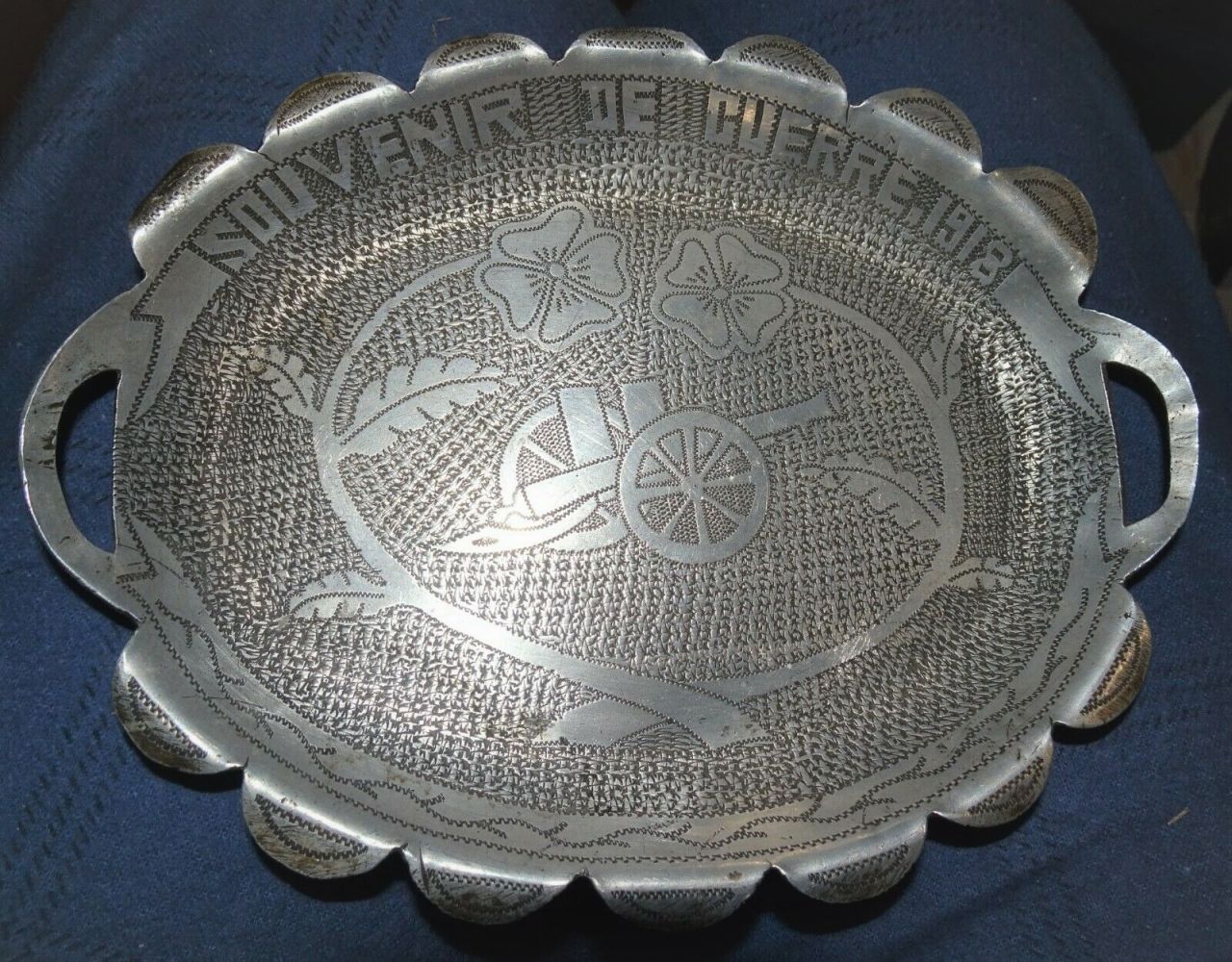
(above) Tray crafted from a canteen showing a French "75" Cannon.
.jpg?422)
(above) This whole engraving is upside-down, with a berry and leaf design on its base,
with the pattern continued around the legend, "SOLANGE 1914/1915"
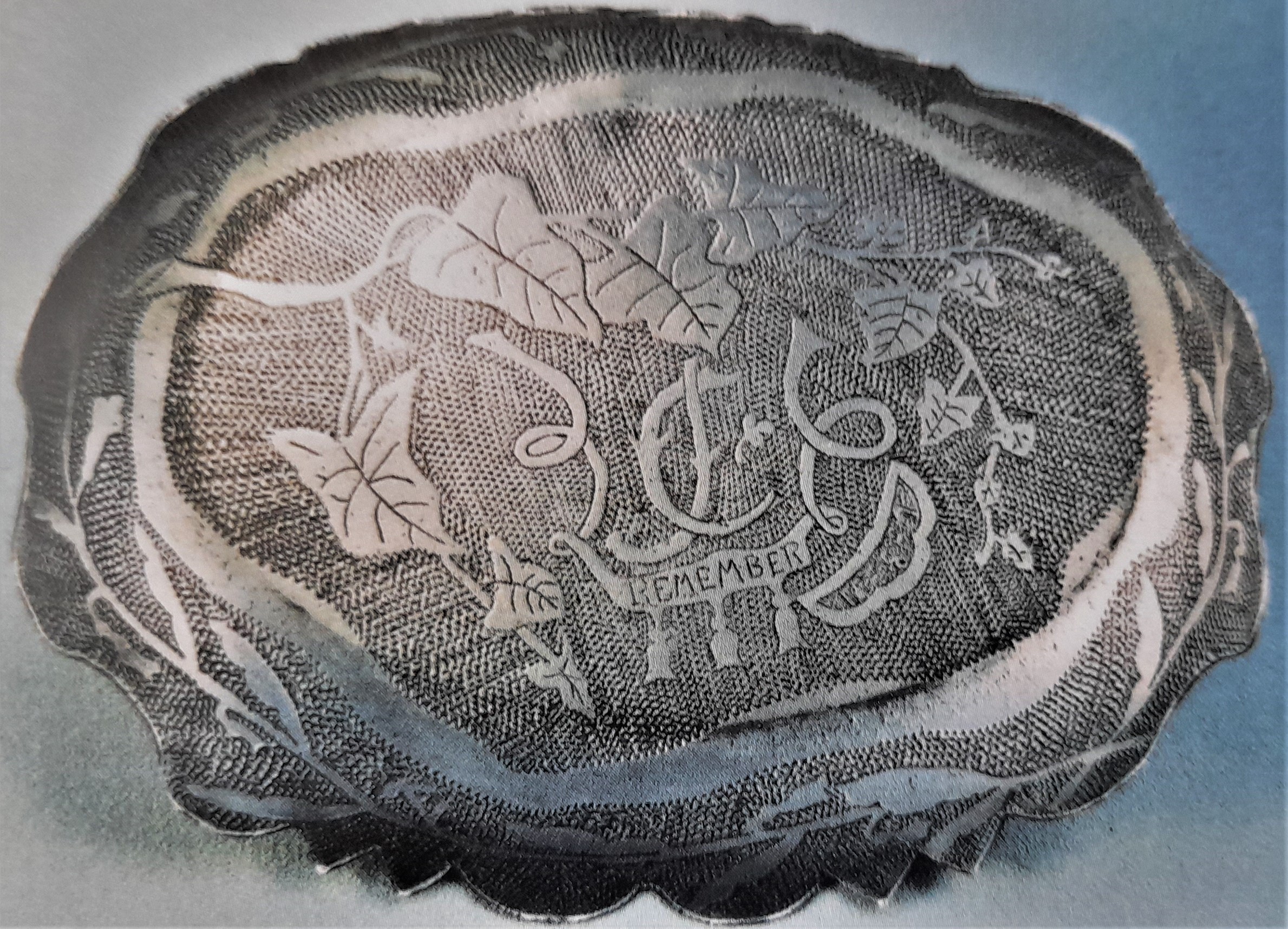
(above) Tray crafted from a Belgian canteen, engraved "Remember 15-8-17"
commemorating the date of Pope Benedict's call for peace to end the war.
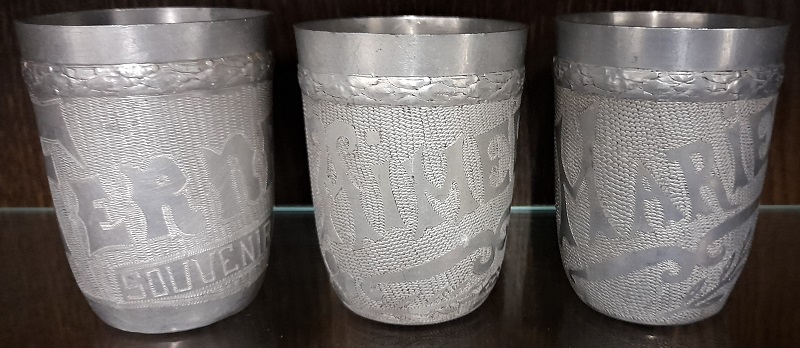
(above & below) A Family threesome, engraved "FERNANDE - SOUVENIR DU FRONT 1914-15-16" /
"AiMEE - Souvenir D'Alsace, Campagne 1914-15-16" / "MARIE - Souvenir D'Alsace, Campagne 1914-15-16"
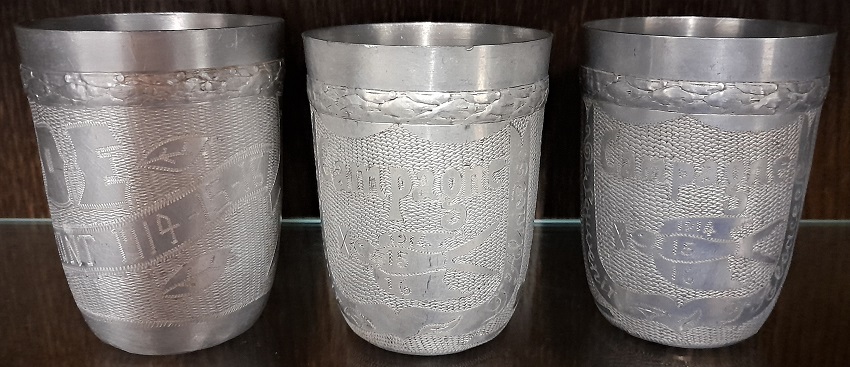
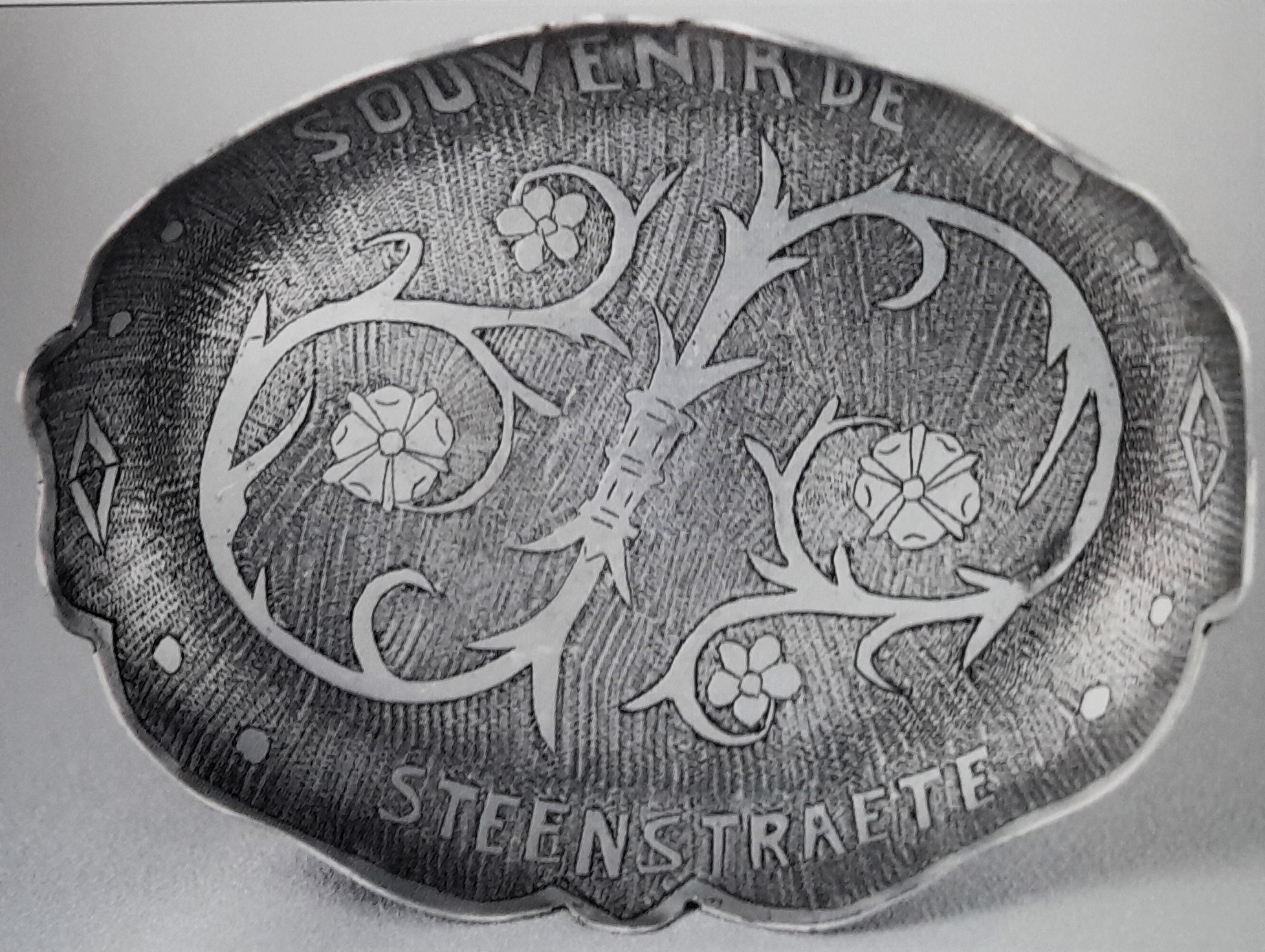
(above) Tray crafted from a Belgian canteen, engraved "Souvenir de Steenstraete"

(Above and below) Six Family related pieces, engraved "Henri - 1915 SOUVENIR DE L'ARGONNE 1916" /
"Lucien Colin - 1915 Souvenir de Verdun 1916" / LEONIE COLIN RAVEL - 1916 SOUVENIR L'ARGONNE" /
"Lucien - 1915 SOUVENIR DE L'ARGONNE 1916" / "1915 Colin, Georges, Emile, 1916 VERDUN"

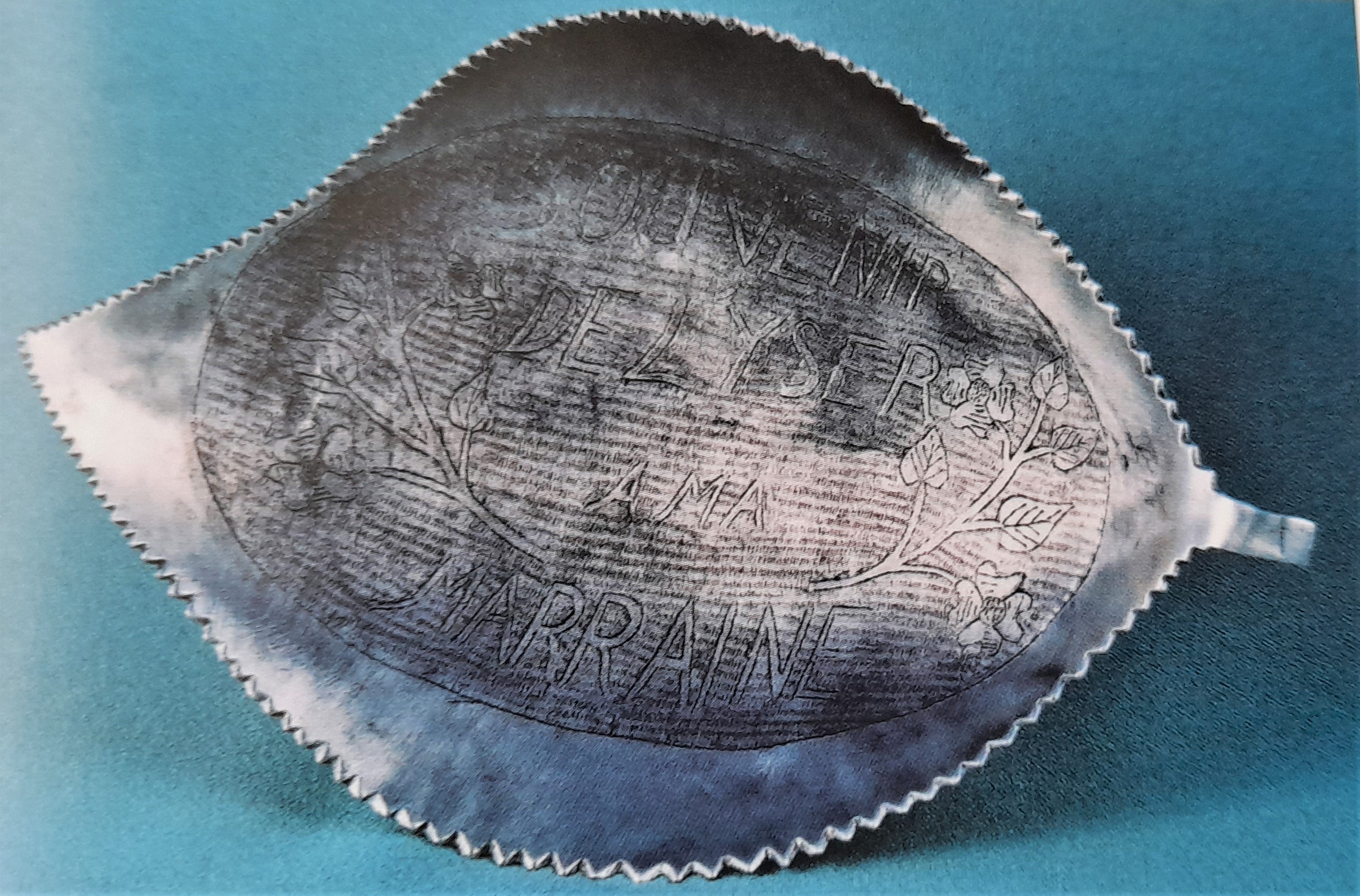
(above) Tray crafted into a leaf shape, engraved "Souvenir de l'Yser a ma Marraine"
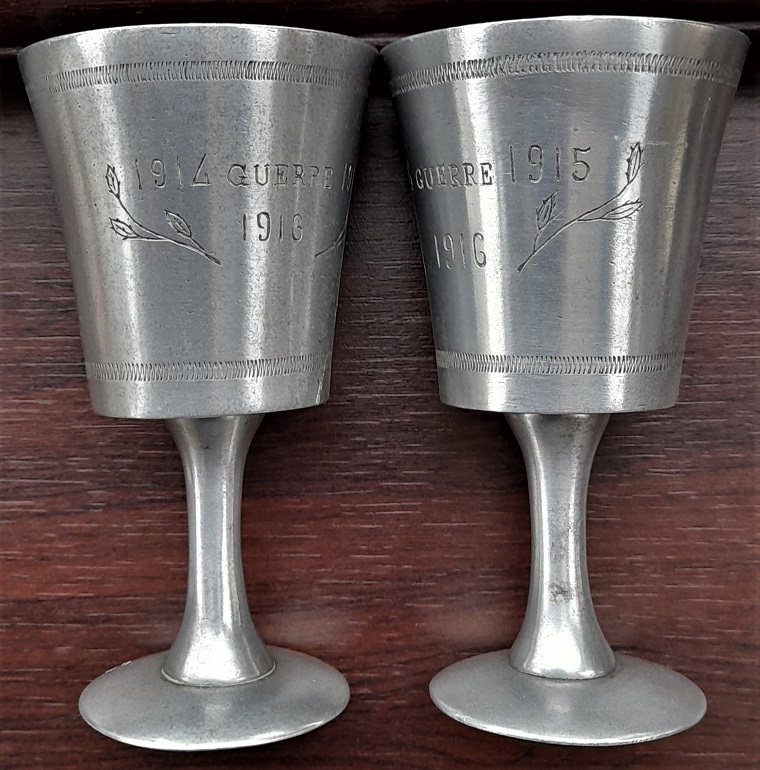
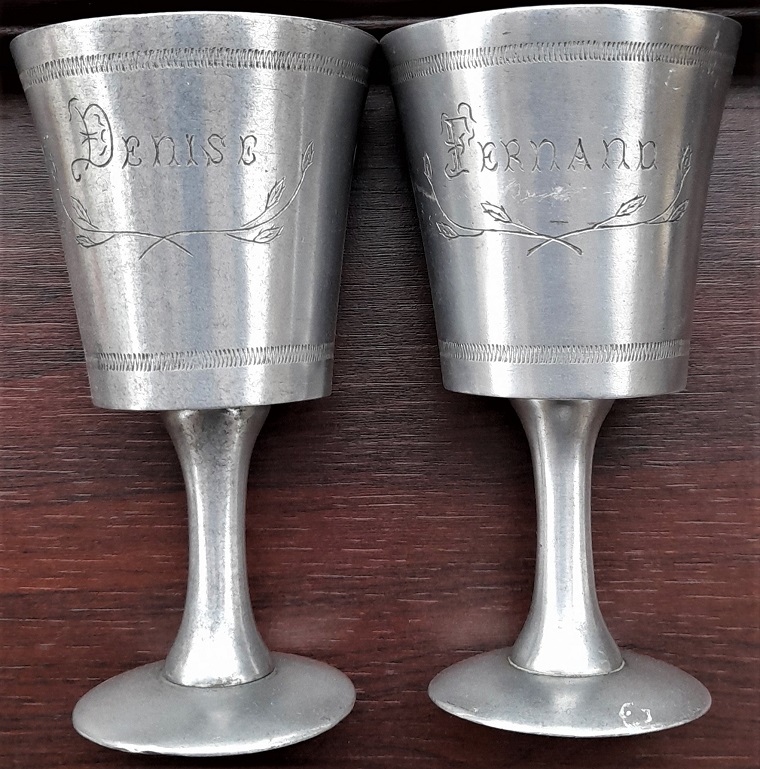
(Above) A pair of timbales, mounted upon aluminium holders, one named "FERNAND" -
the other "DENISE", both floral engraved with "1914 GUERRE 1915 / 1916"
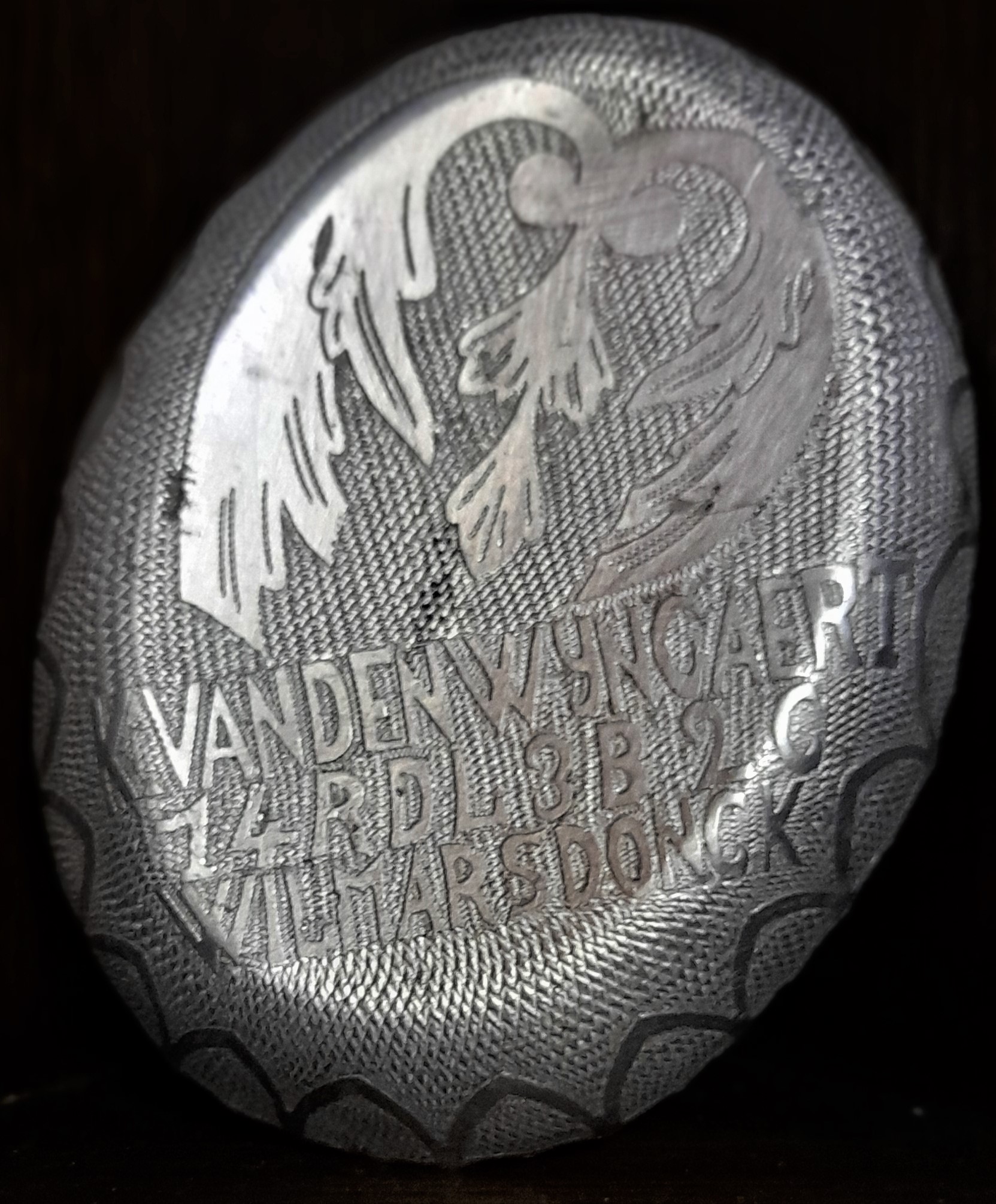
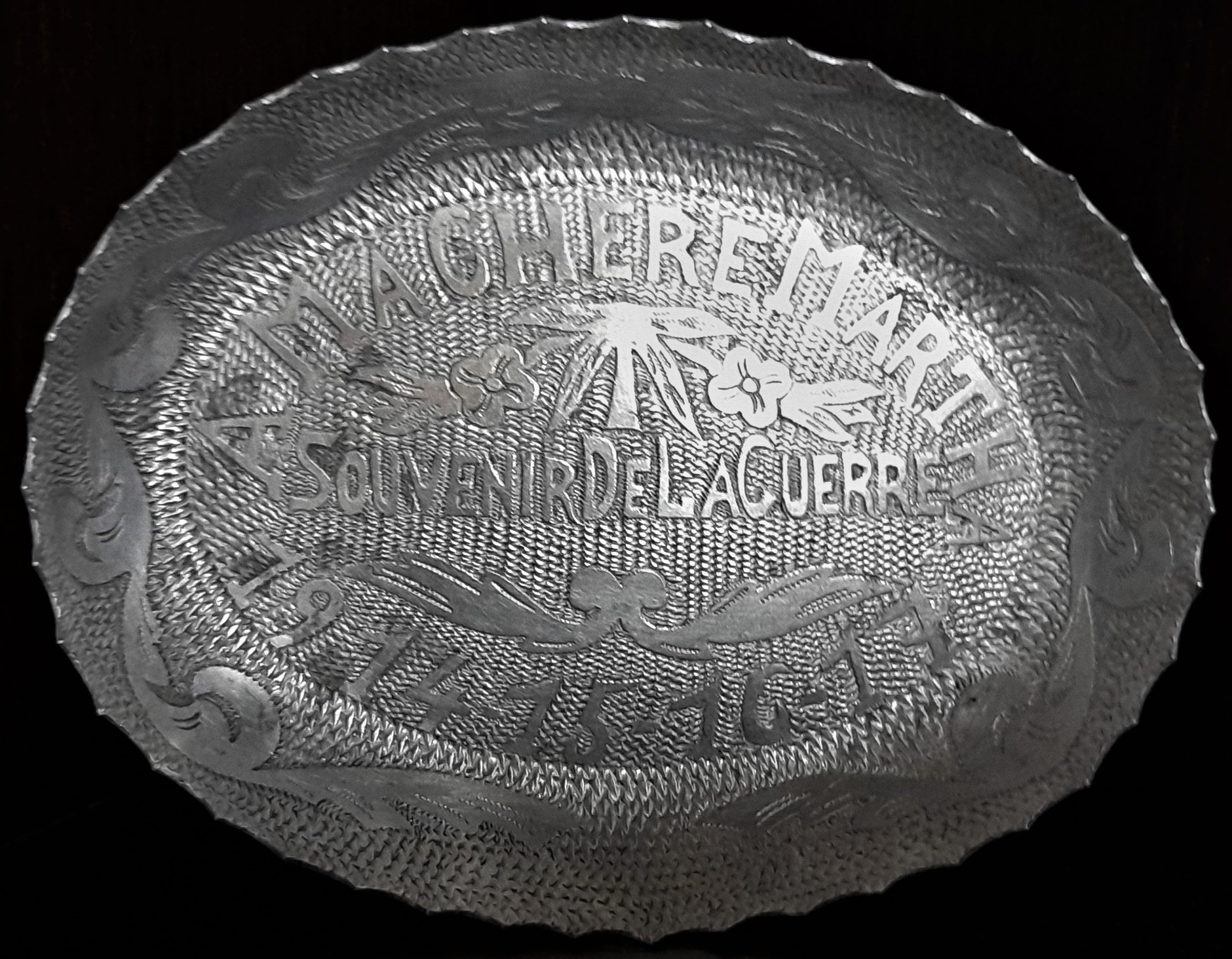
(above) Tray crafted from a Belgian canteen, top engraved "A MA CHERE MARTHA - Souvenir De La Guerre - 1914-15-16-17" and base "VANDENWYNCAERT" (Soldier's Name), "14th Line Regiment, 3rd Battalion, 2nd Company" (Belgian Army), and "WILMARSDONCK" (Village which merged with Antwerp in 1929 and which was demolished in 1960 to allow the extension of the port of Antwerp)
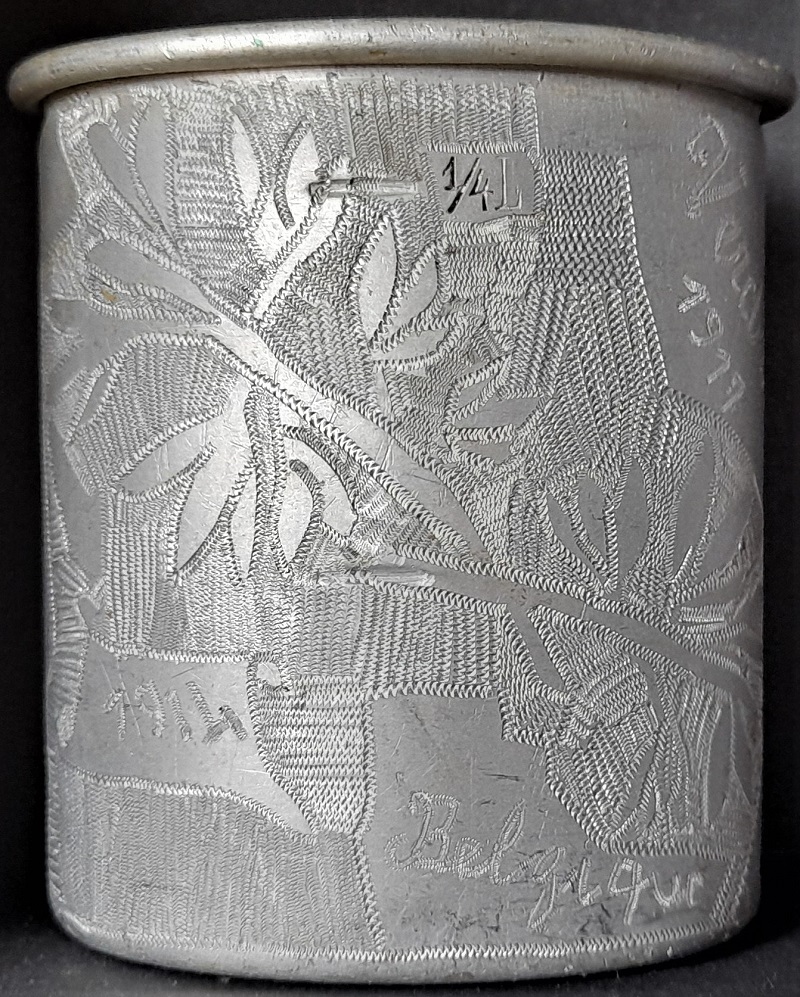
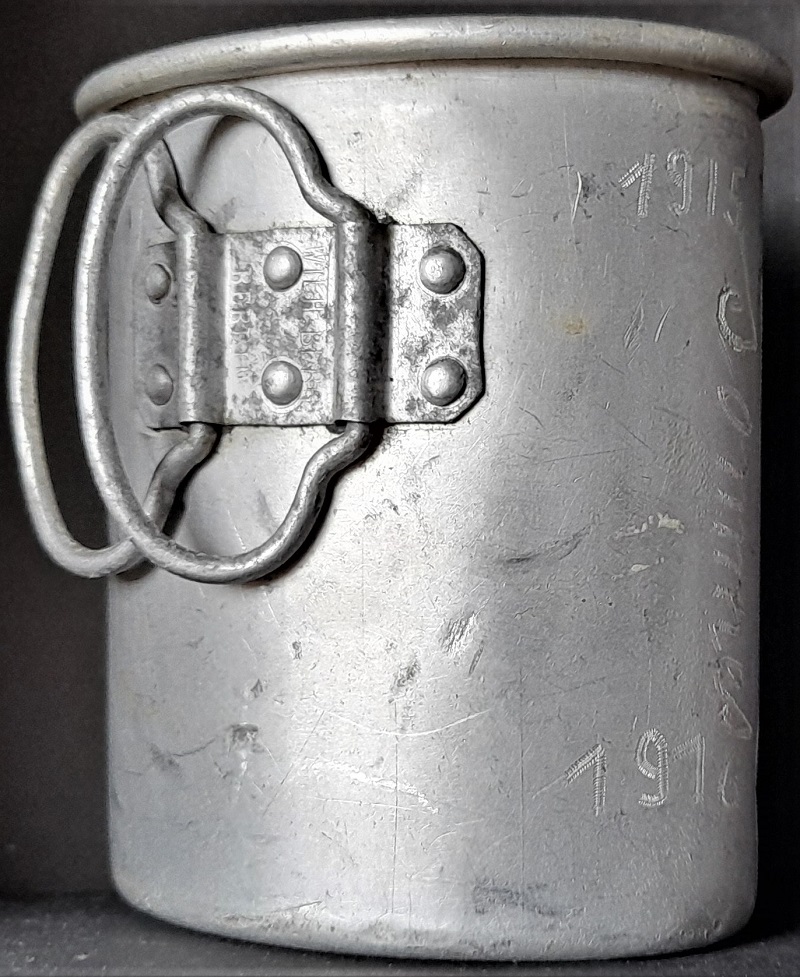
(Above ) Handled Quart, floral engraved "1914 Belgique / 1915 Sommes 1916 / Verdun 1917"
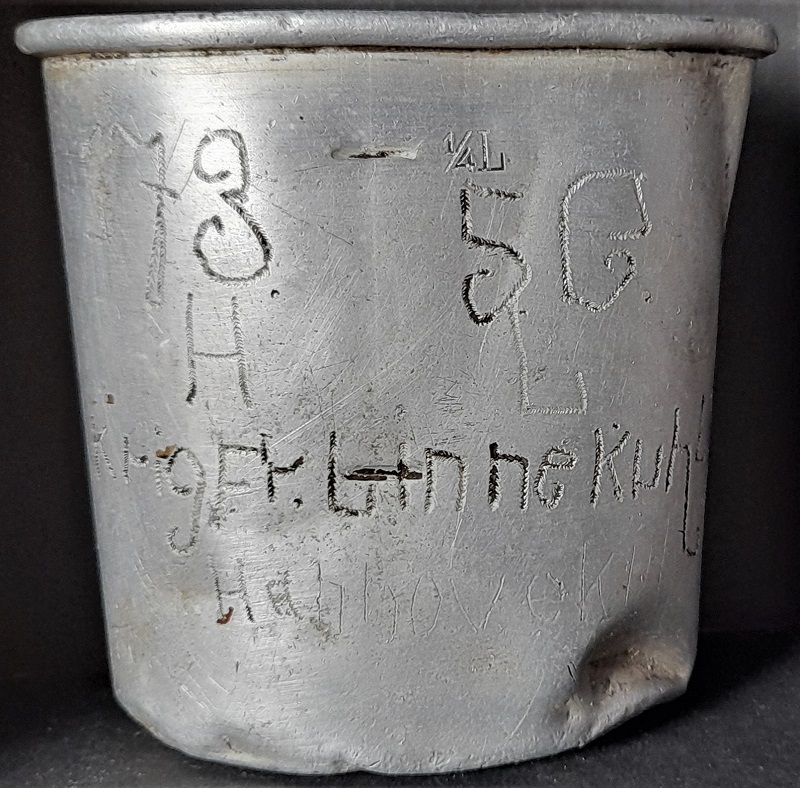
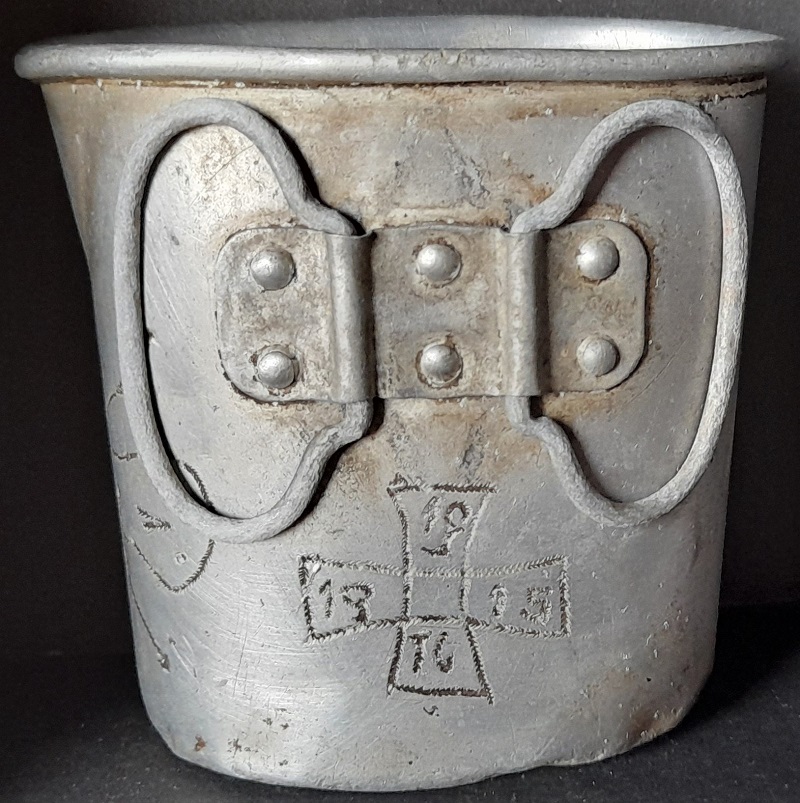
(Above) Handled Quart, with Iron Cross 1915/1916 - Initials & Regiment marked
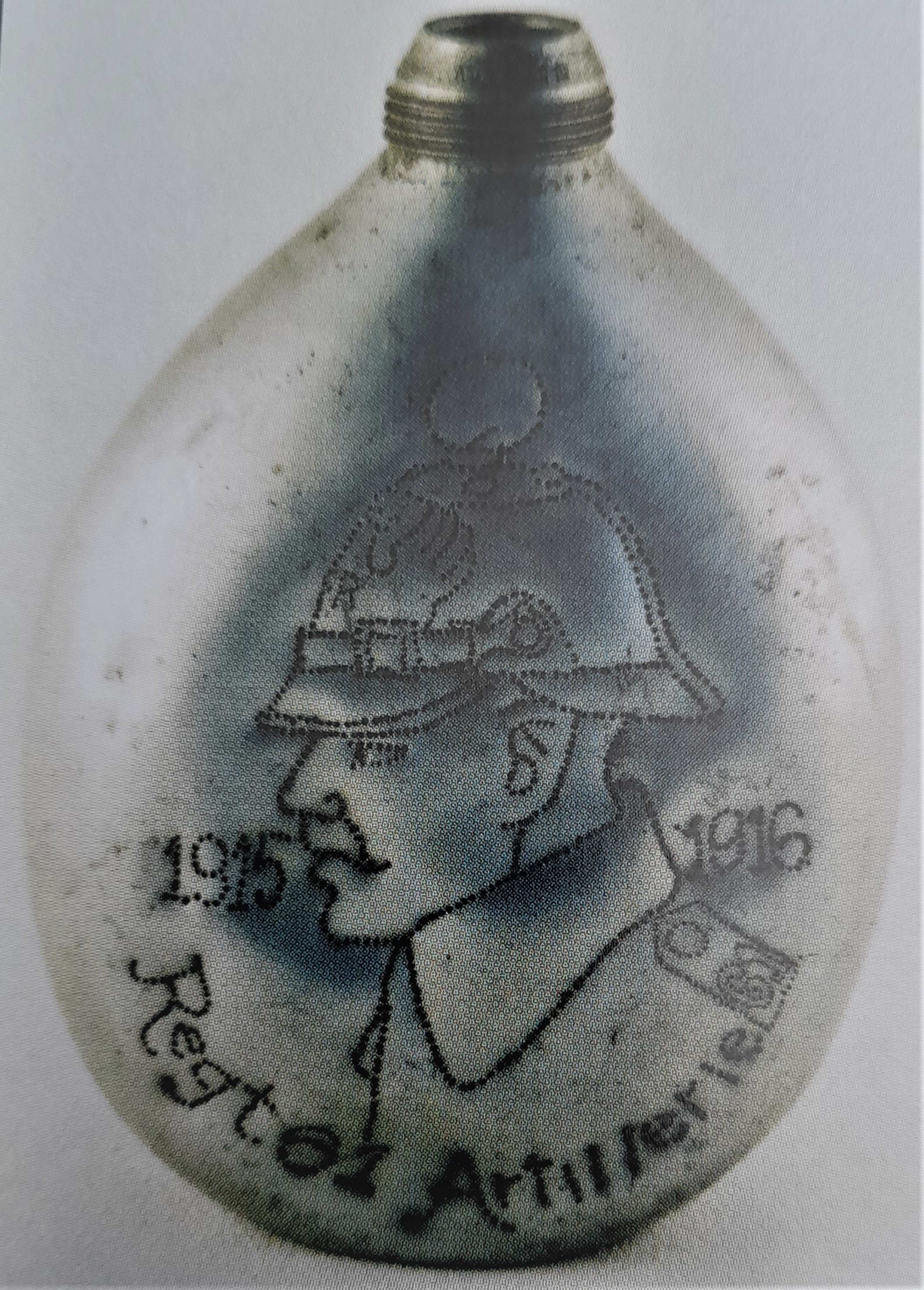
(above) German canteen embossed with a German soldier wearing a spiked helmet,
and "1915 1916 Regt. 61 Artillerie"
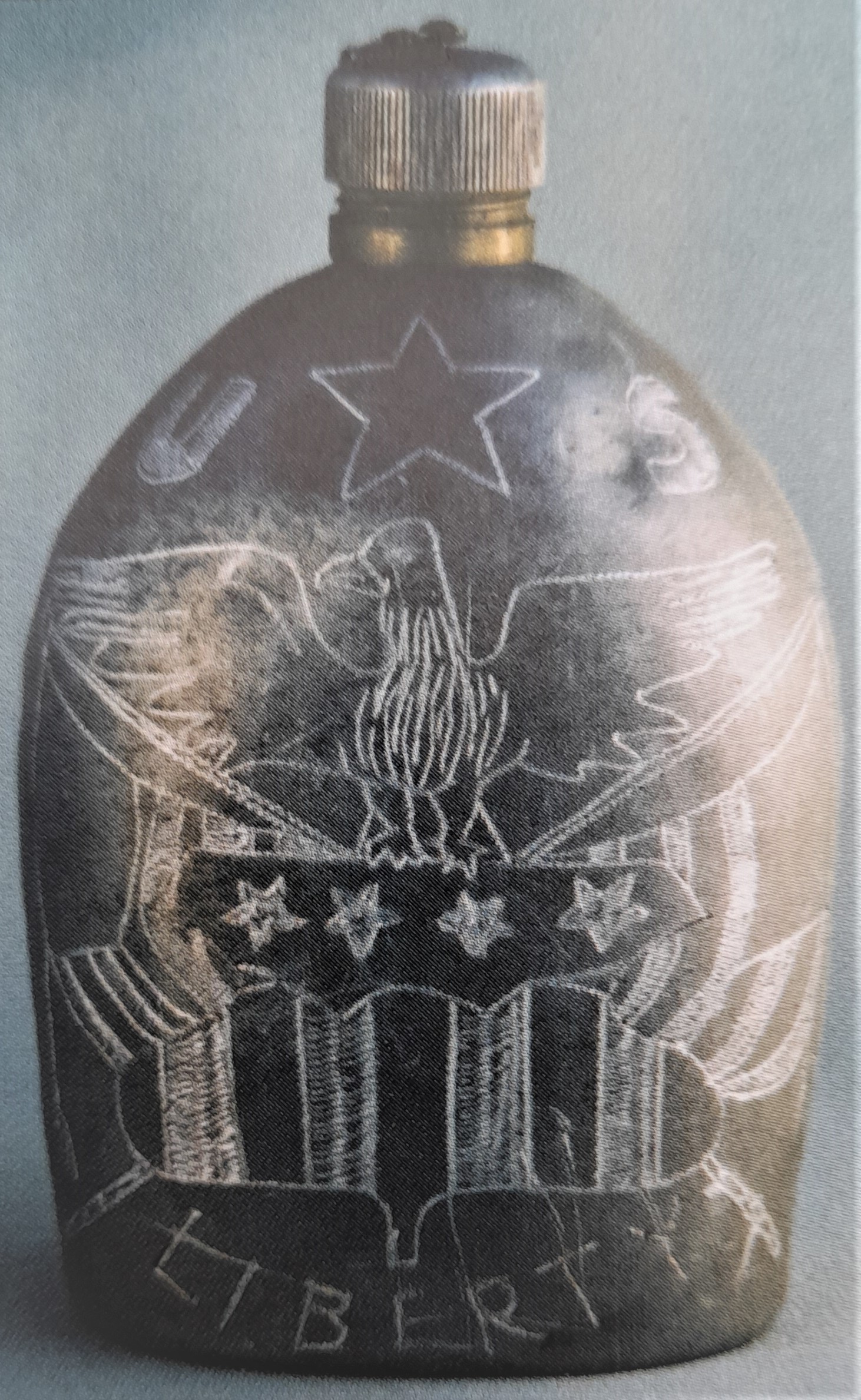
(above) American canteen - the verso is engraved with the Statue of Liberty and initials "L.R."
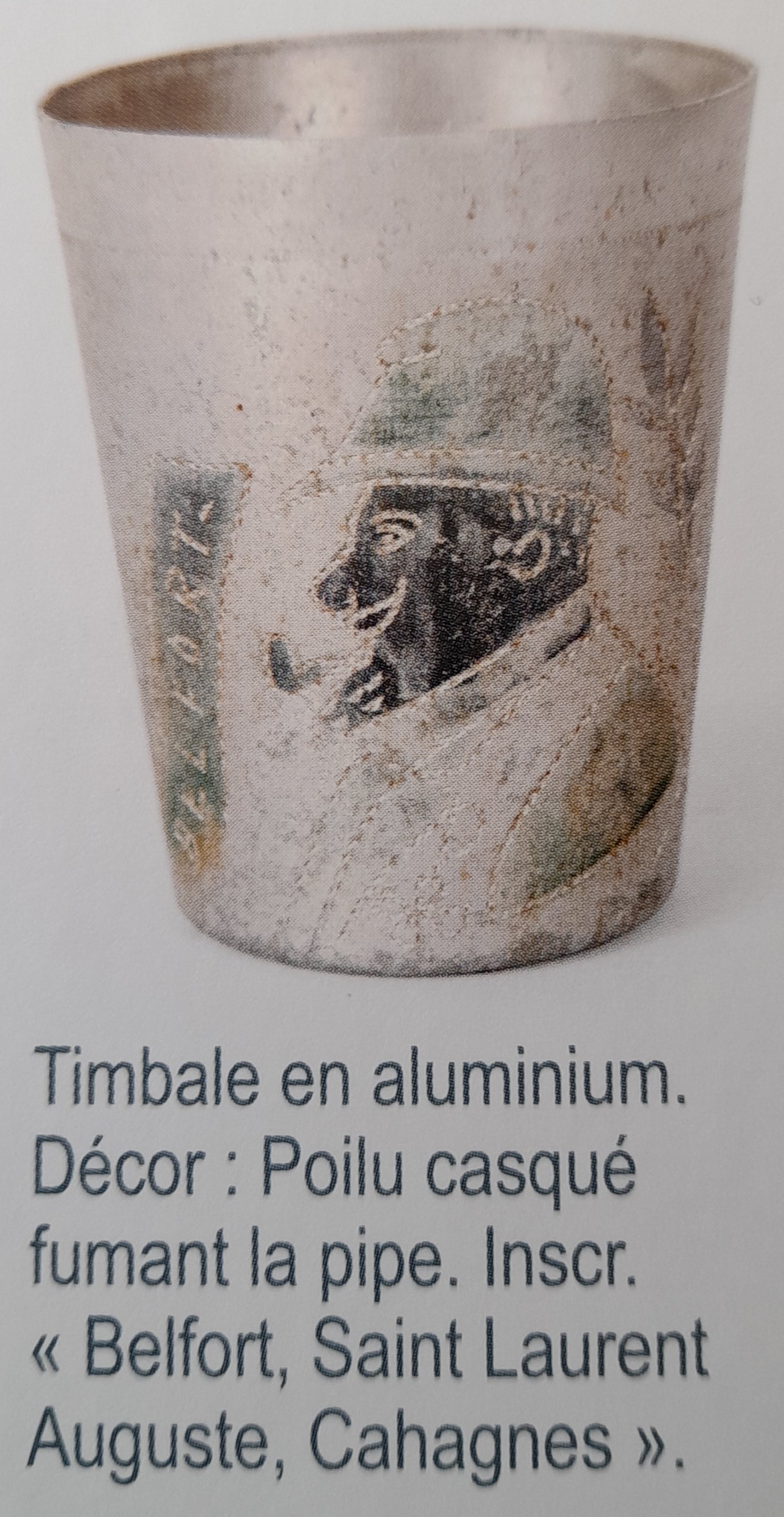
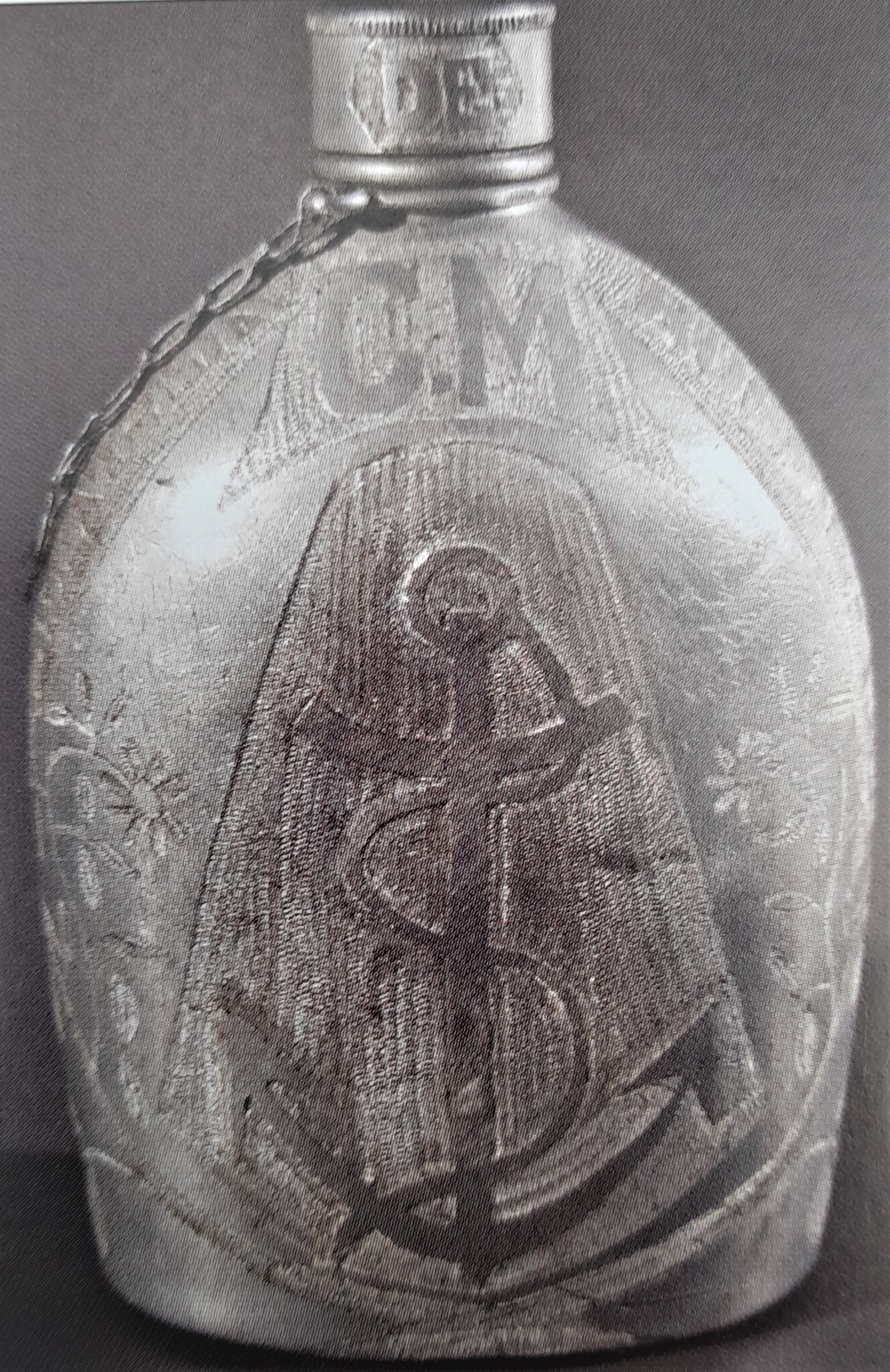
(above) American canteen, one side engraved "Souvenir", the other "Russie 1918".
The verso is engraved with flowers and a heart with initials "D.J."
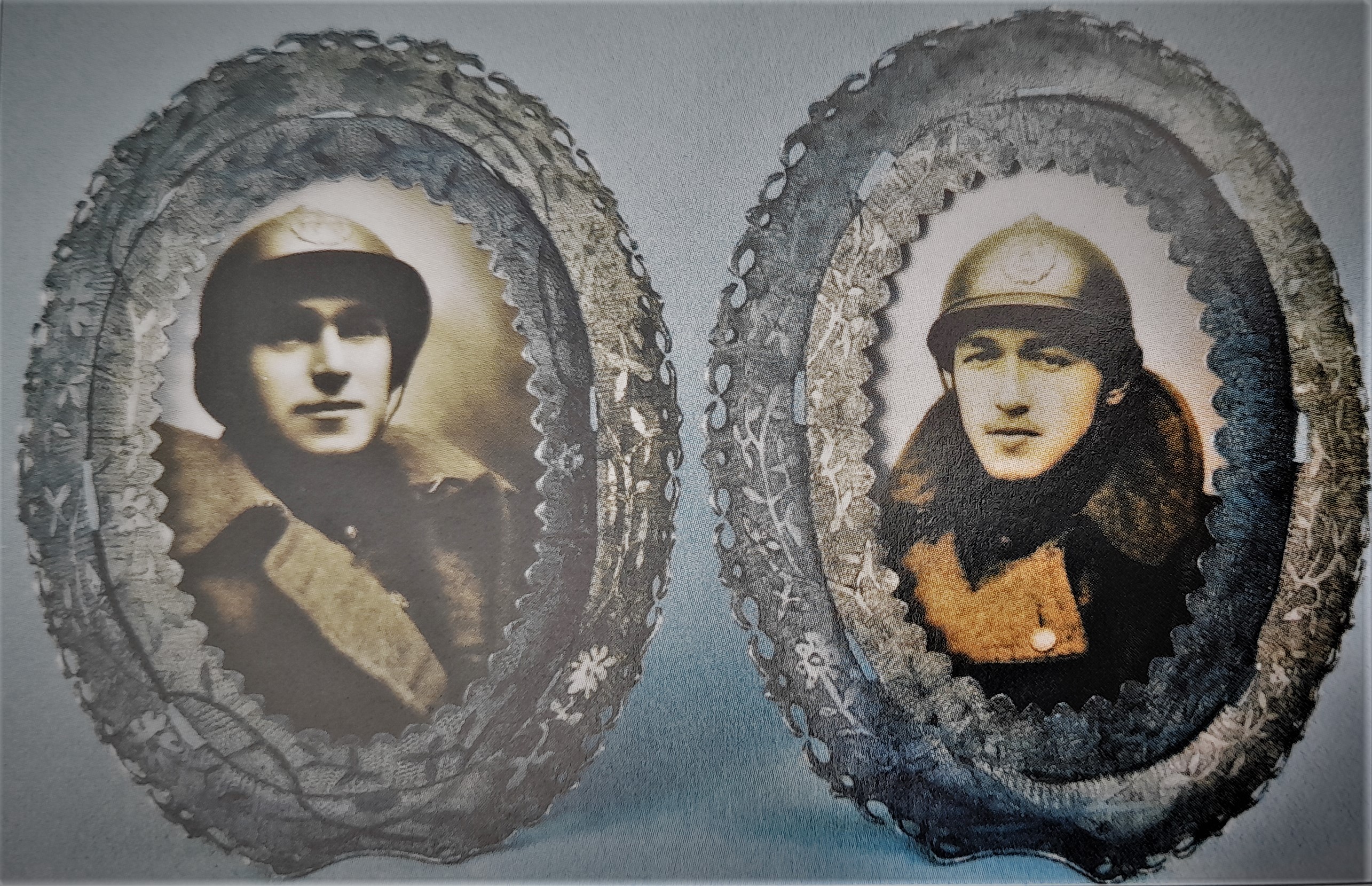
(above) a pair of photo frames, crafted from Belgian canteens.
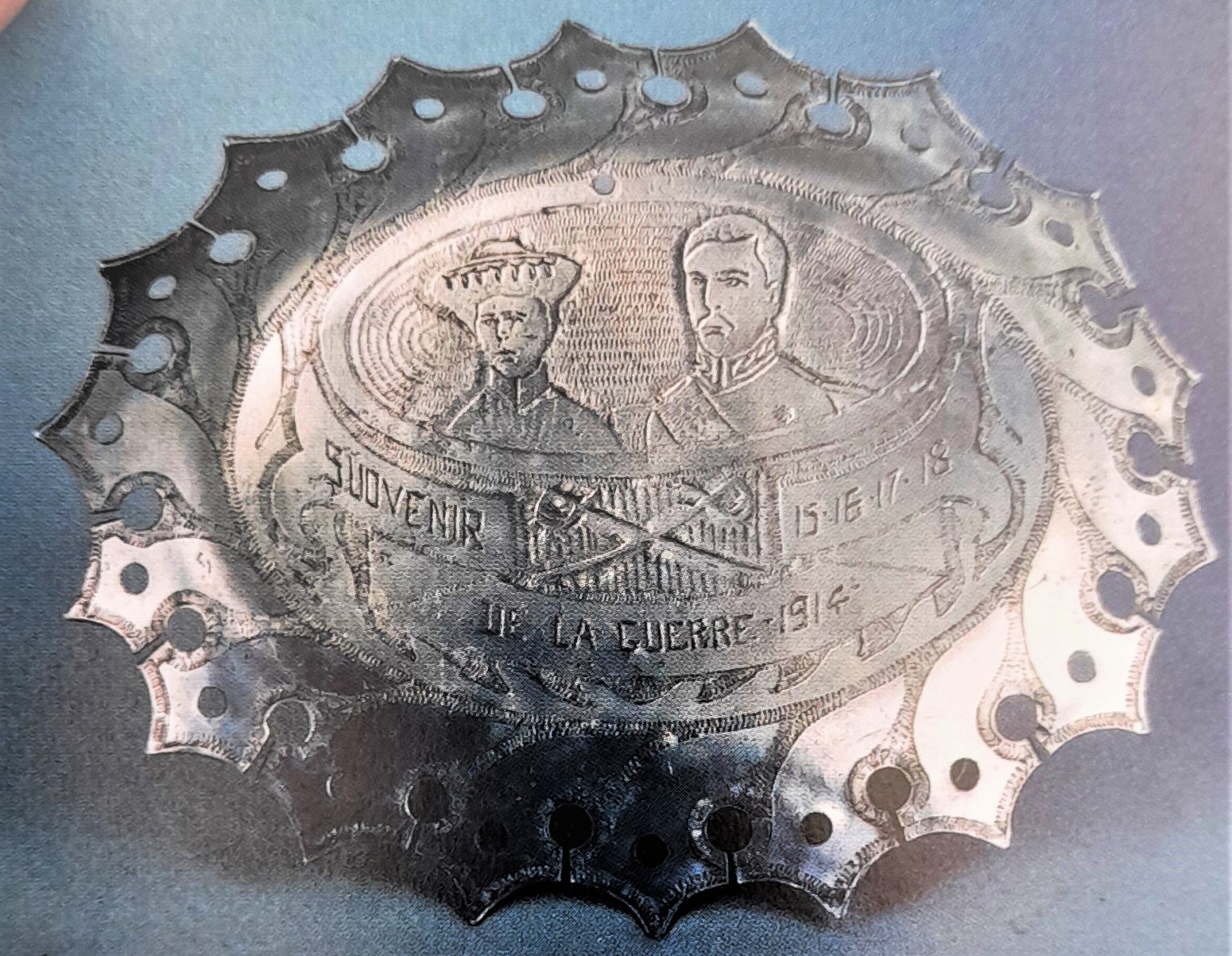
(above) Tray crafted from a Belgian canteen, showing King Albert and his consort Elizabeth.
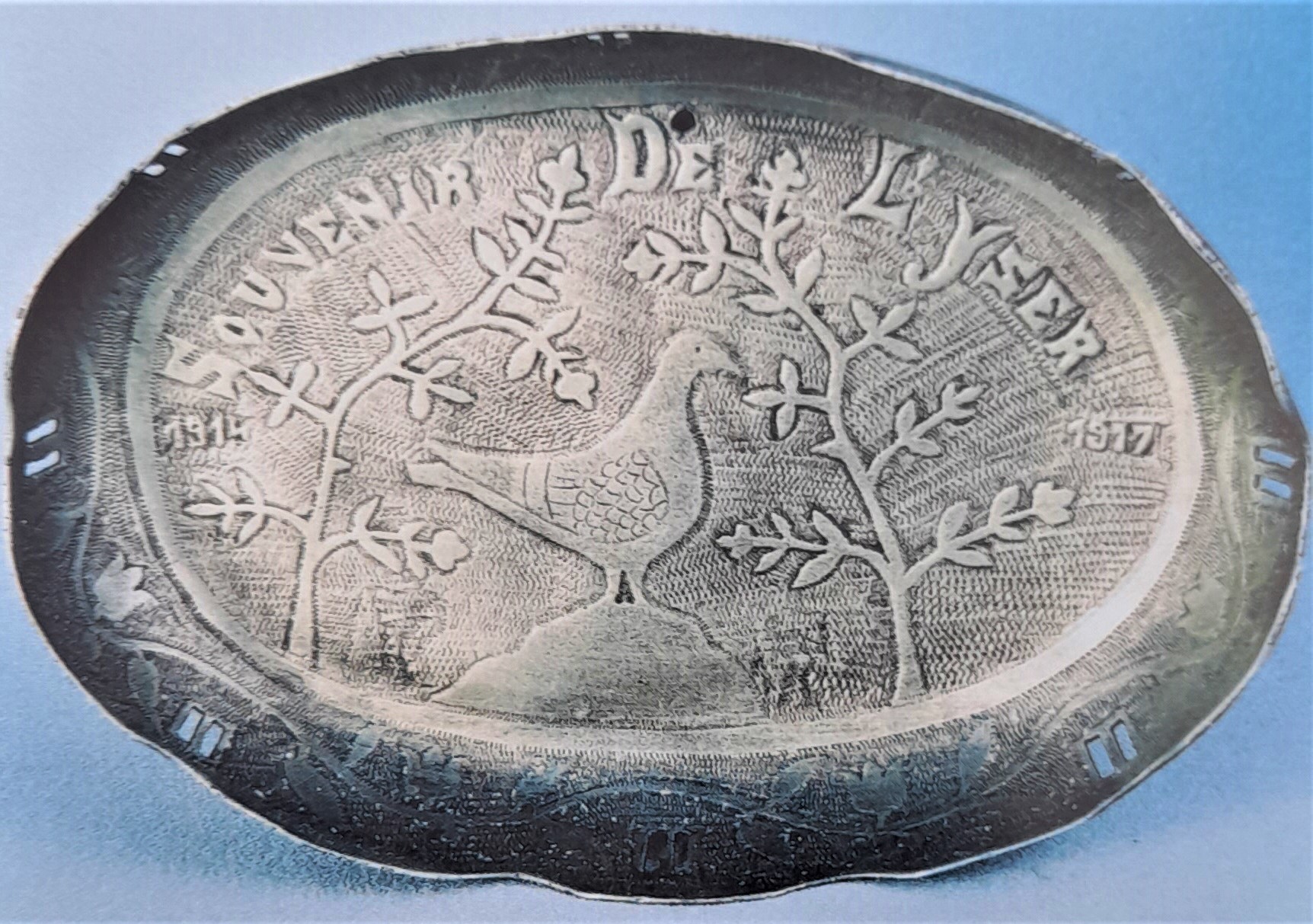
(above) Tray crafted from a Belgian canteen - "Souvenir de L'Yser 1914 1917".
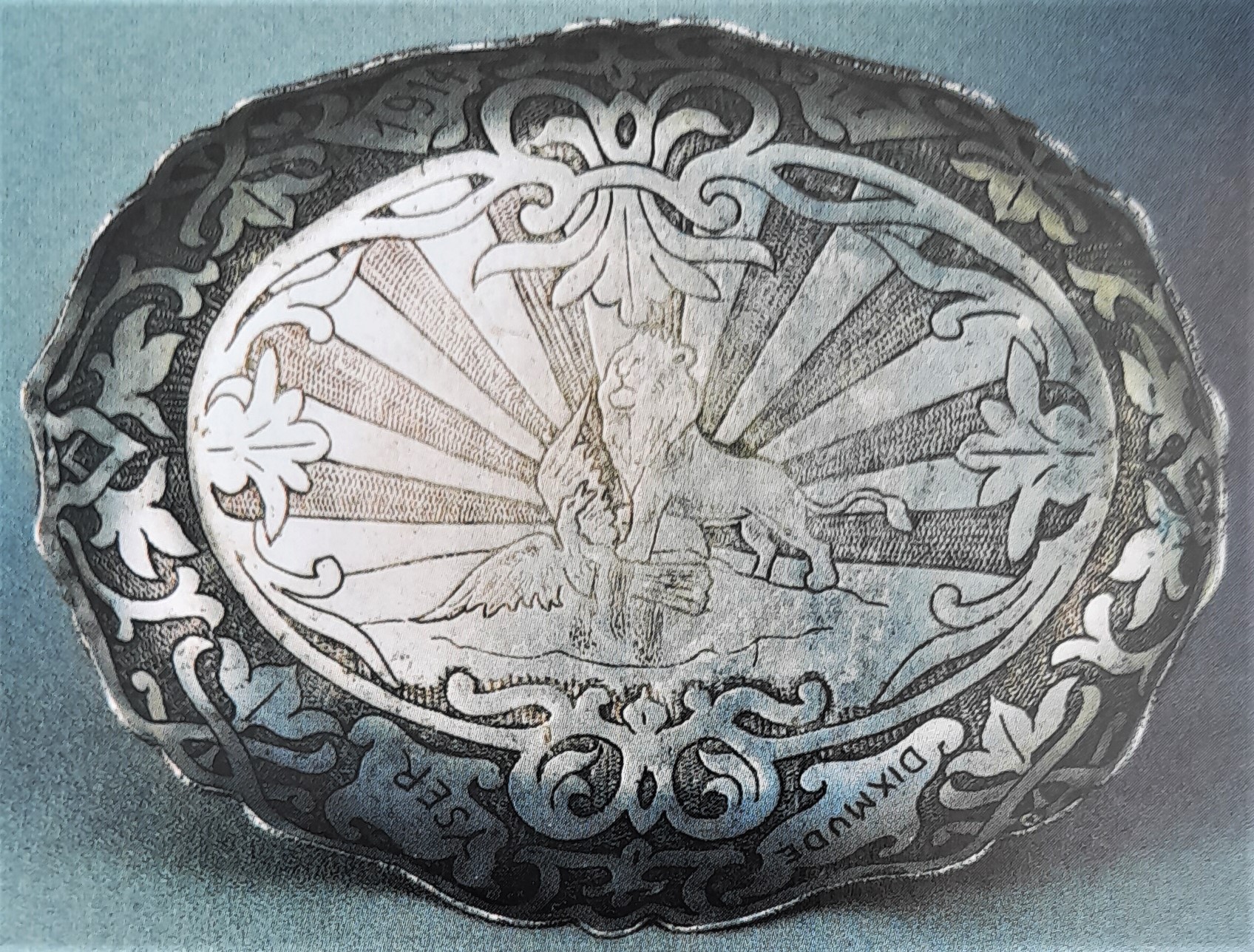
(above) Tray crafted from a Belgian canteen - "1914" - "1917" - "Dixmude" - "Yser",
with Belgian lion trouncing the Imperial eagle against a rising sun.
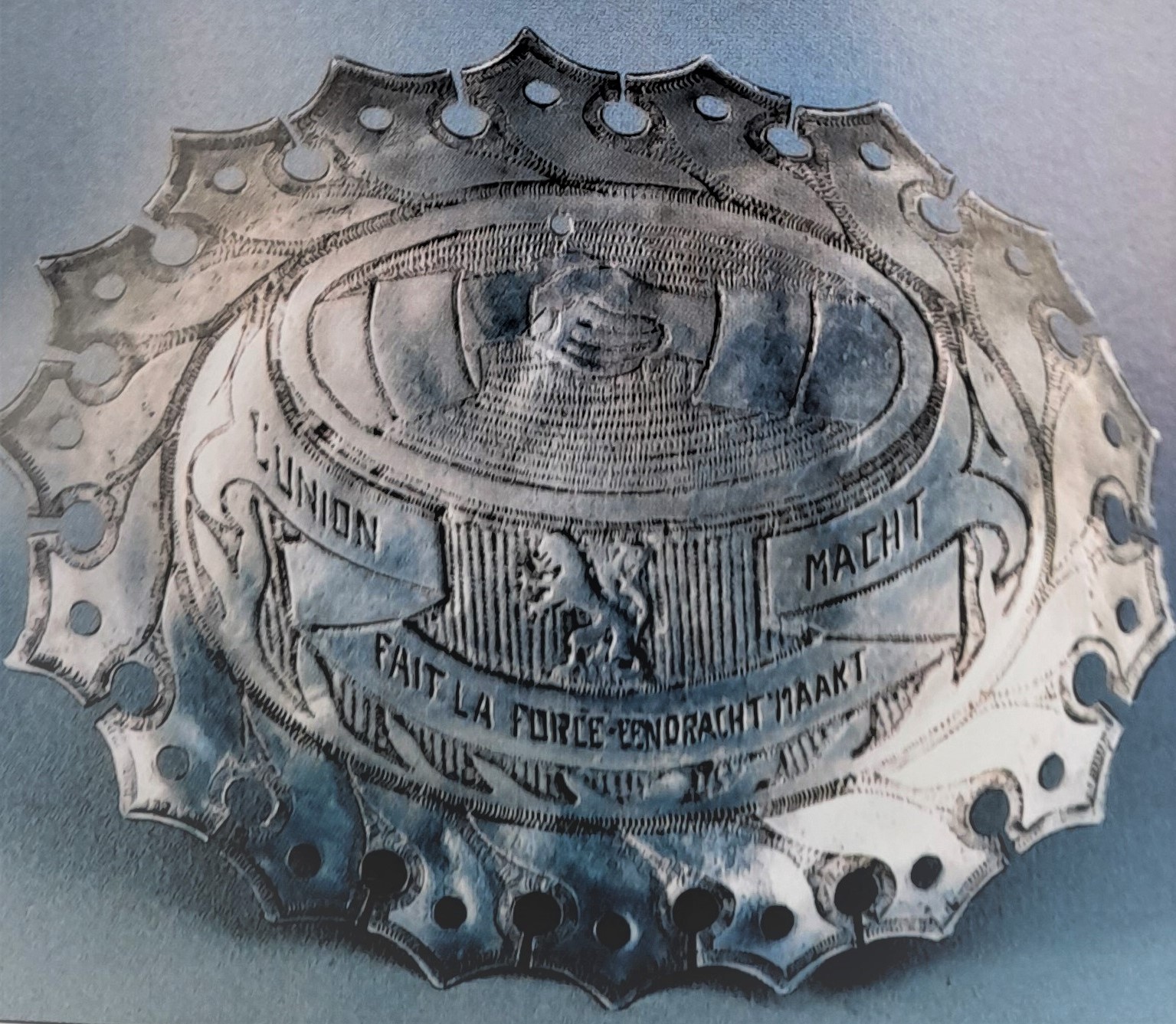
(above) Tray crafted from a Belgian canteen, showing clasped hands of friendship -
the Belgian lion and the Belgian patriotic motto "L'Union Macht Fait la Force-Eendracht Maakt".
.jpg?949)
